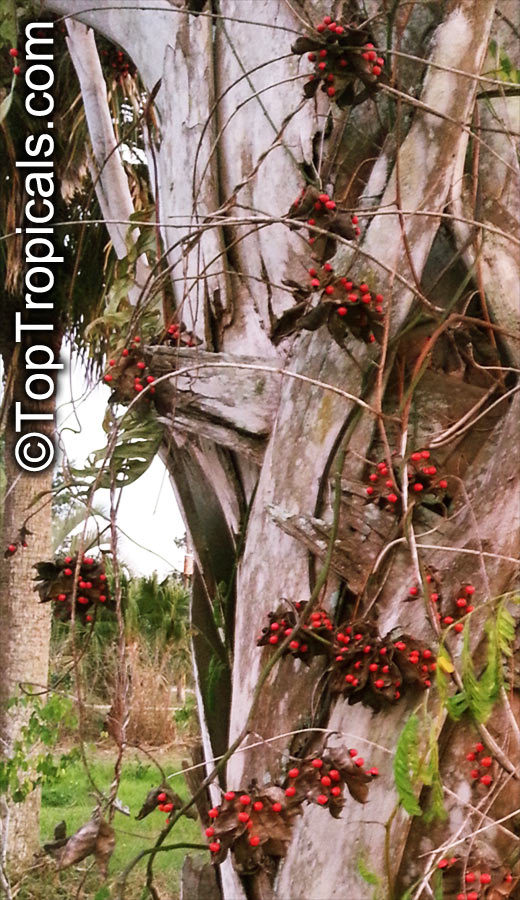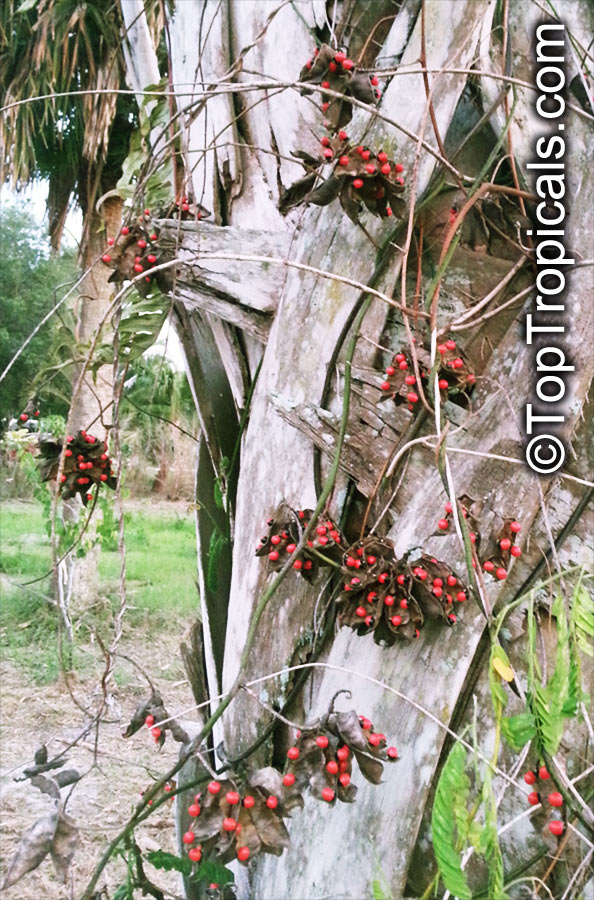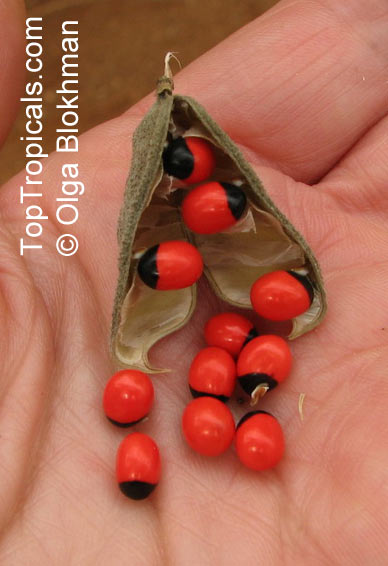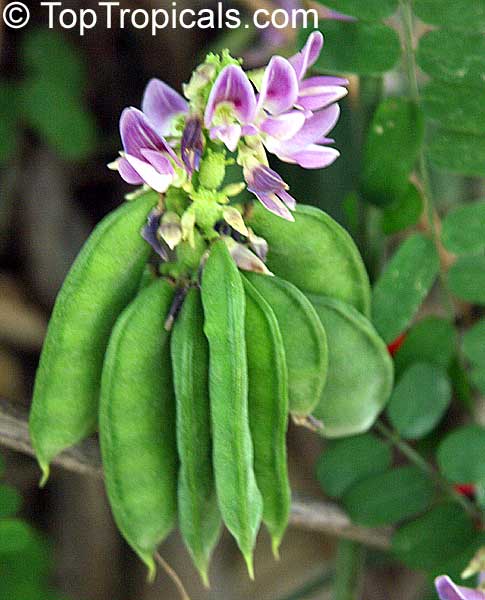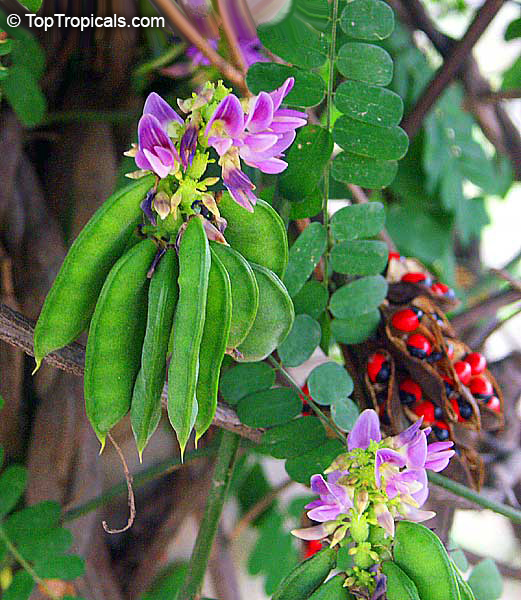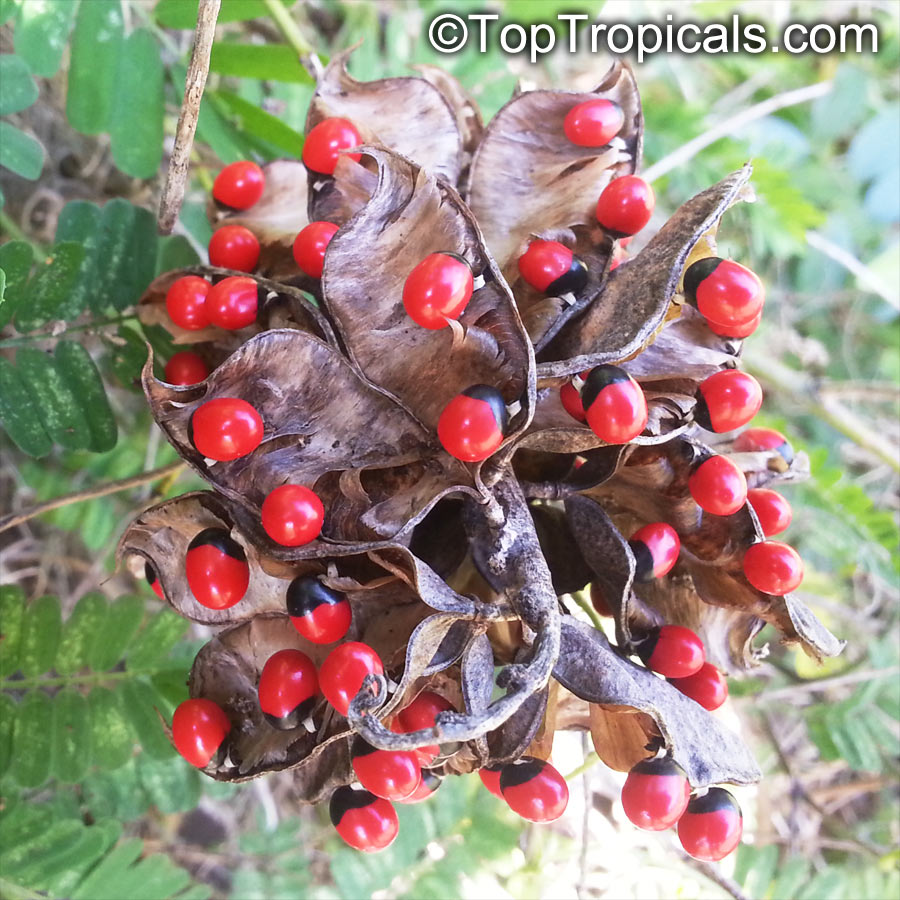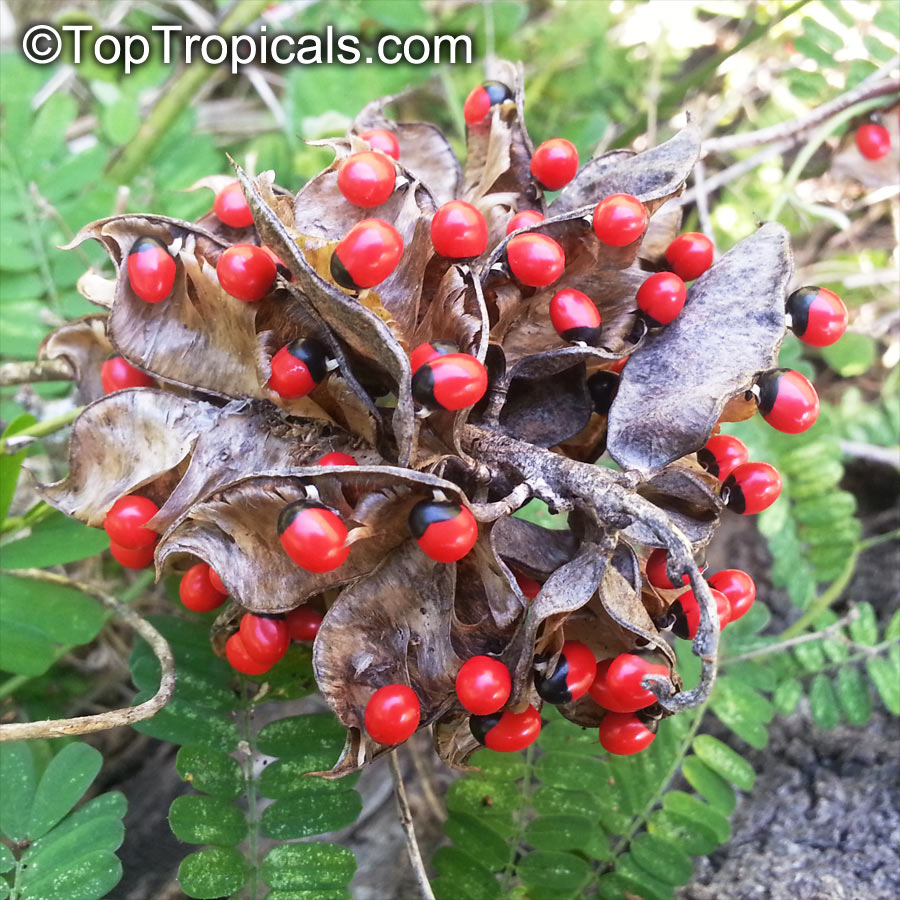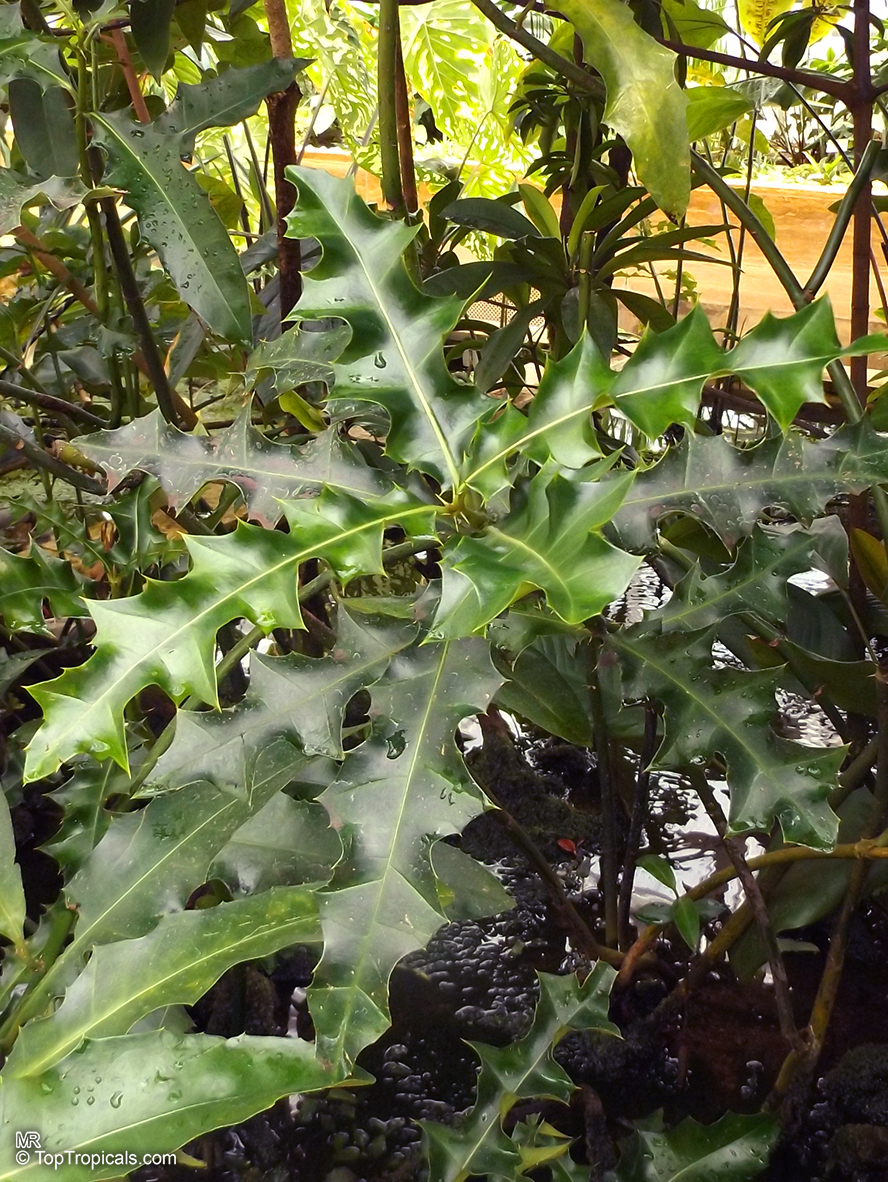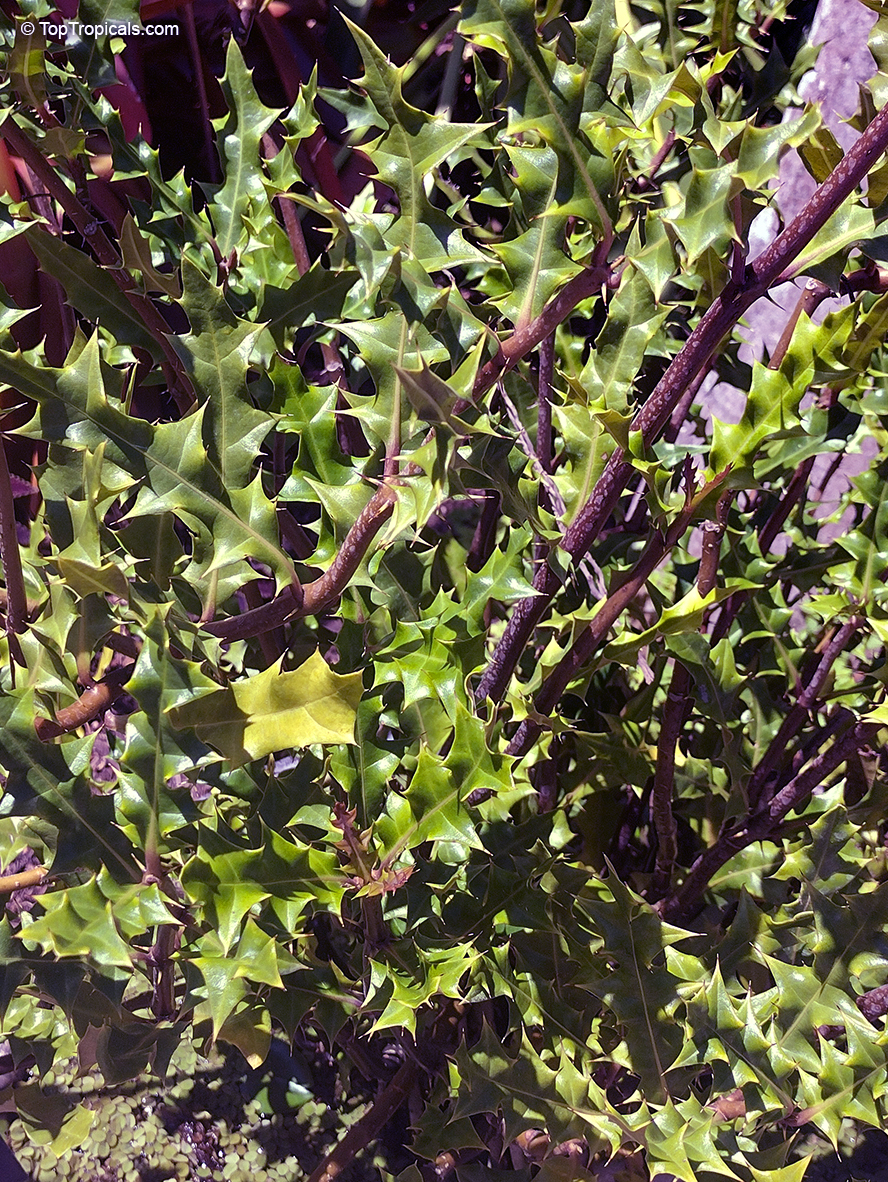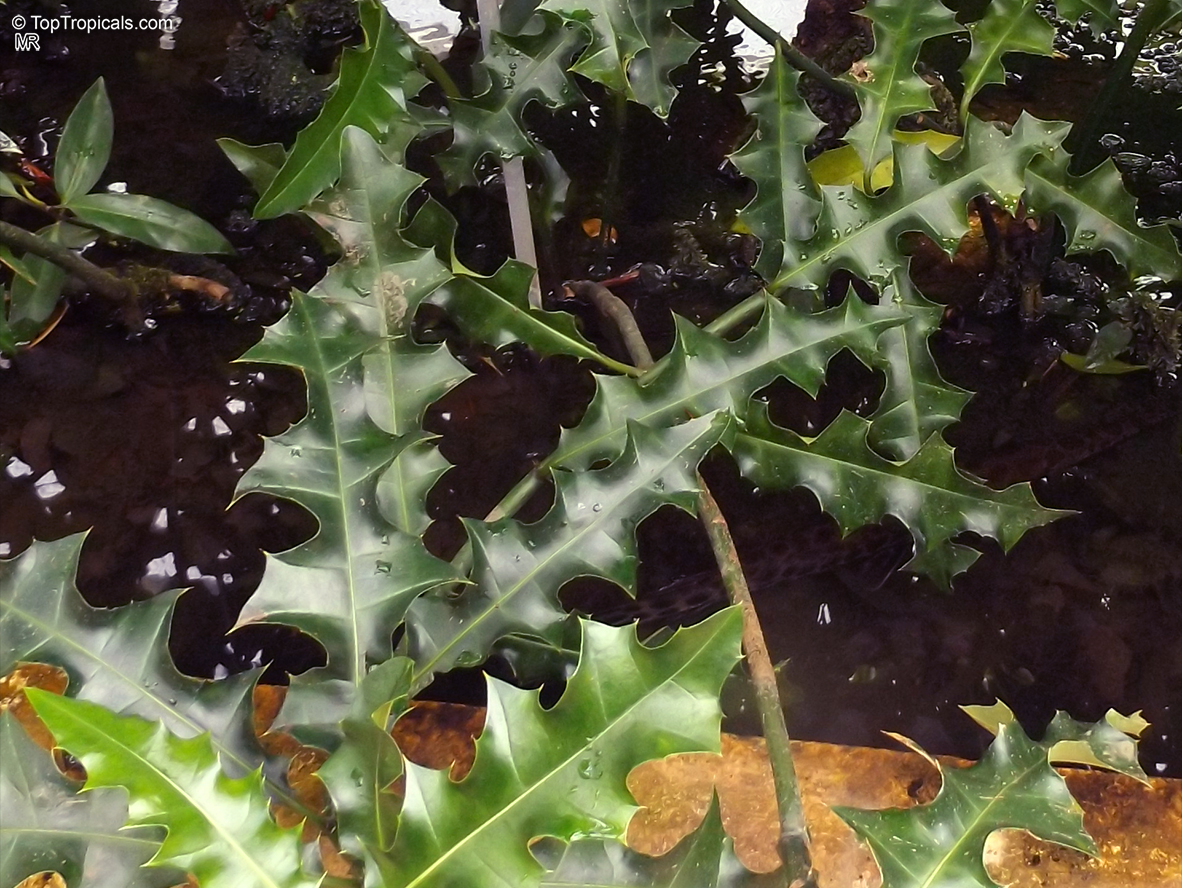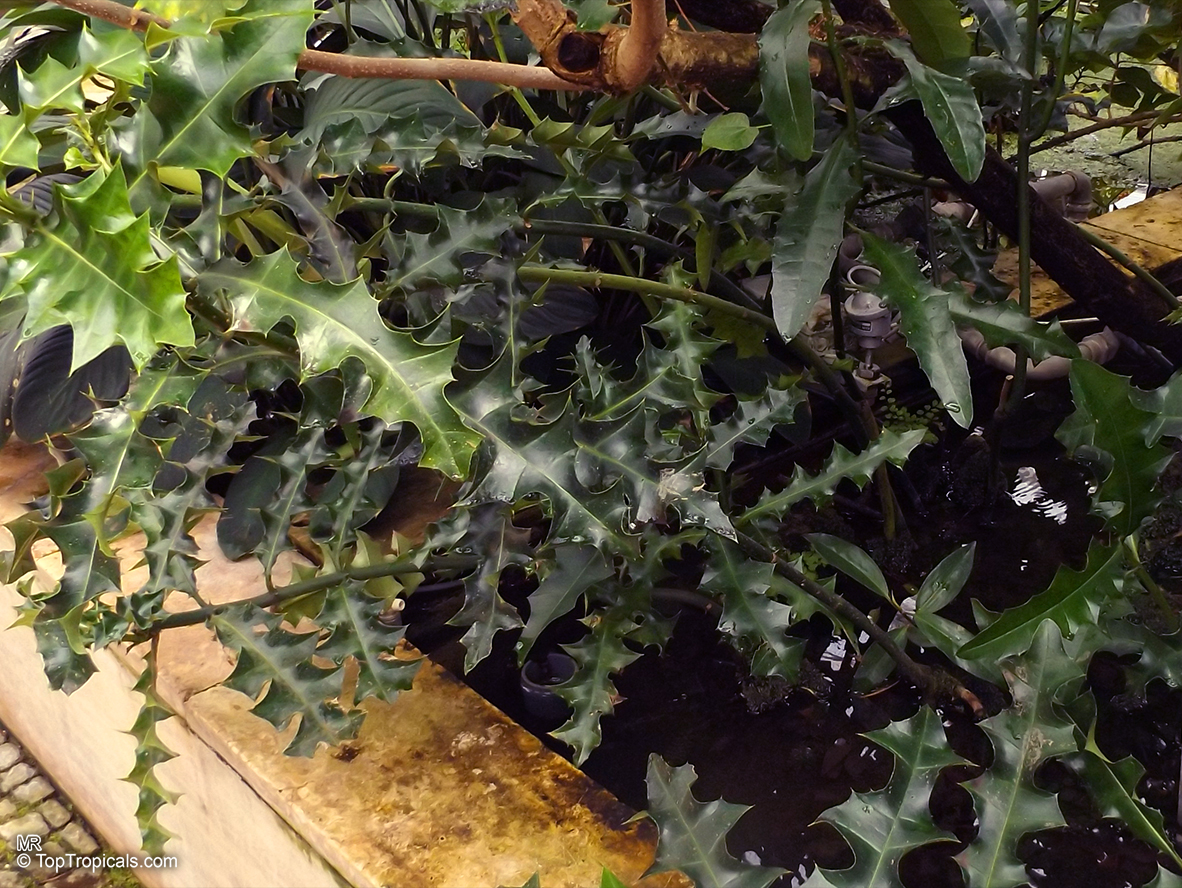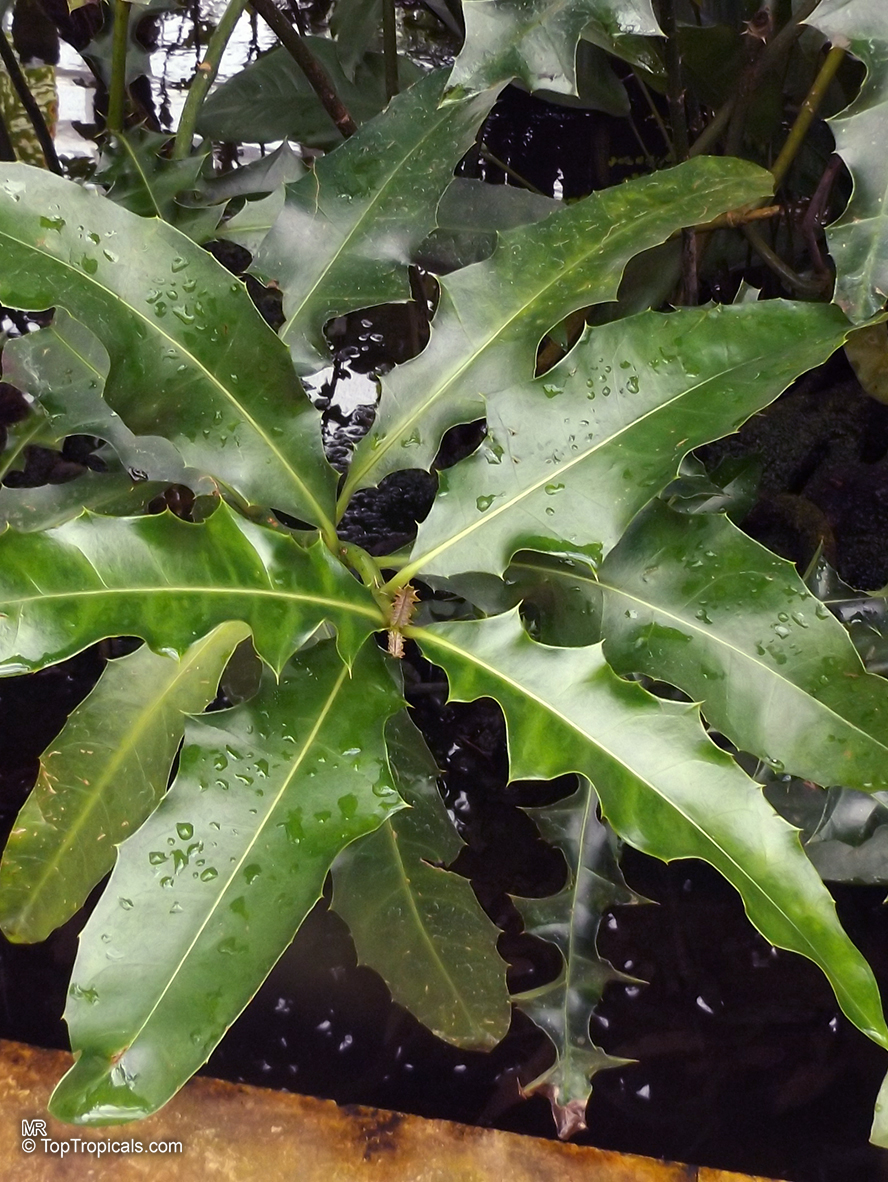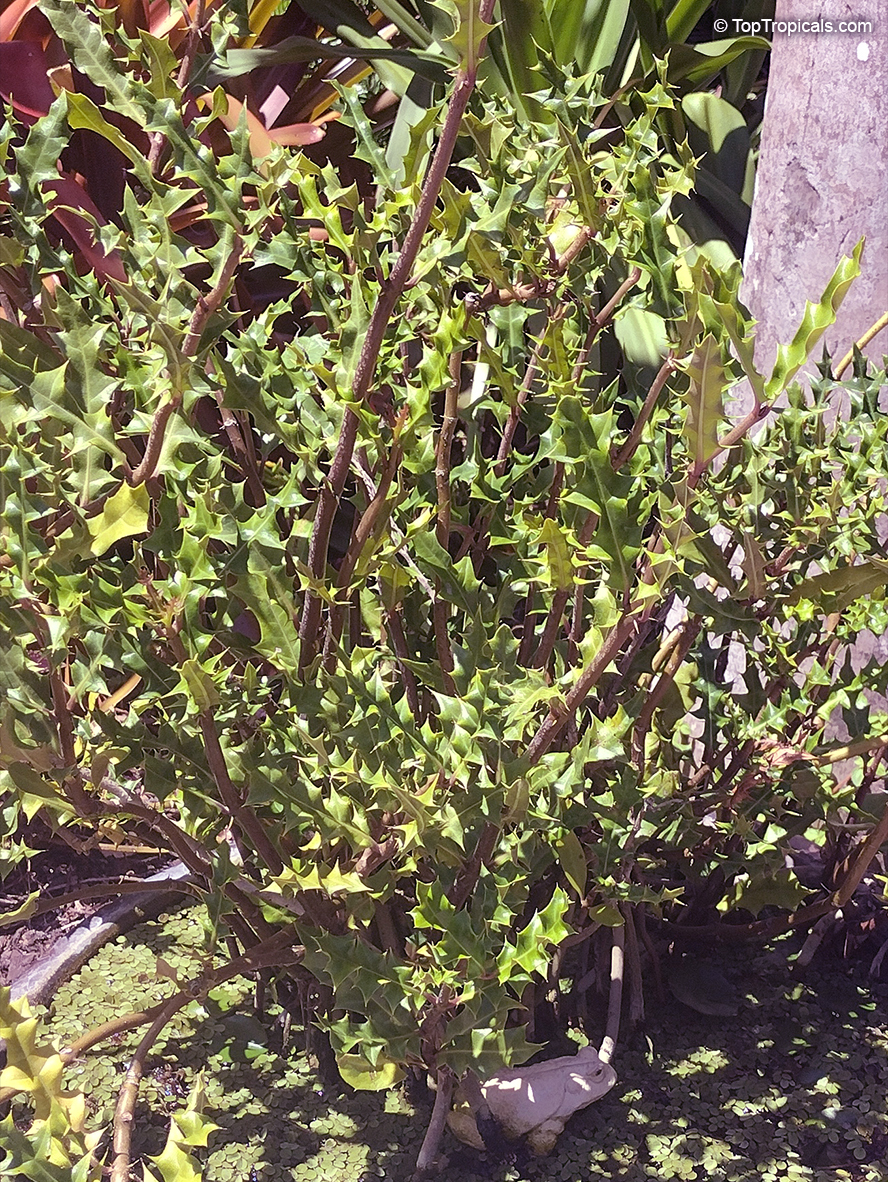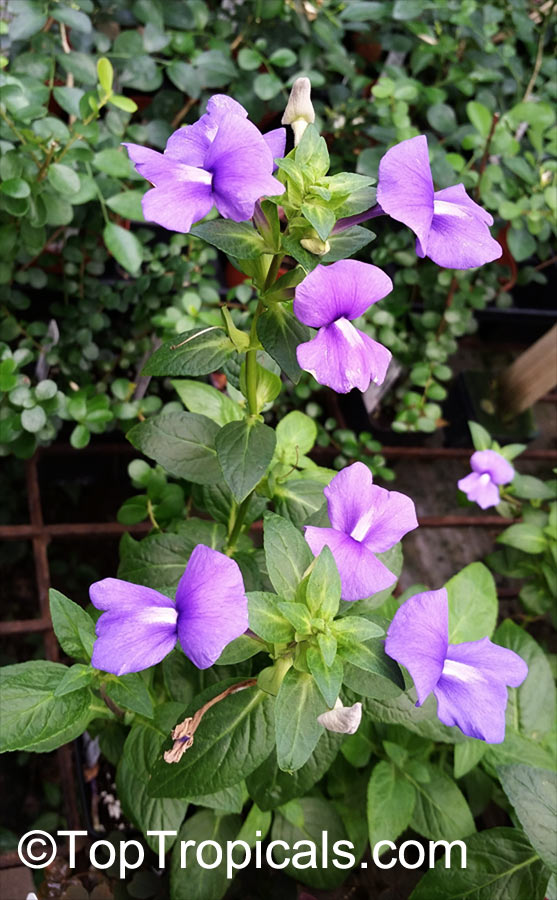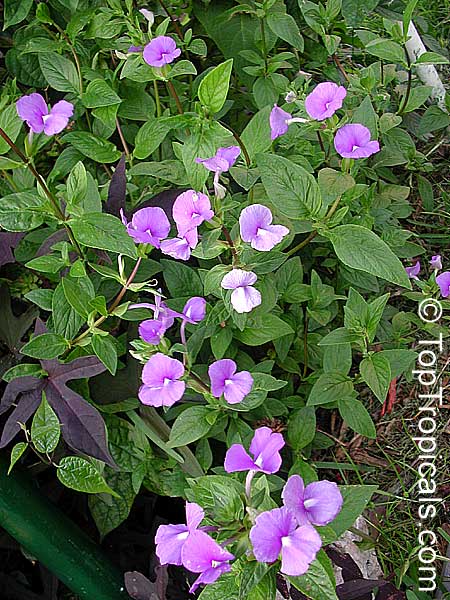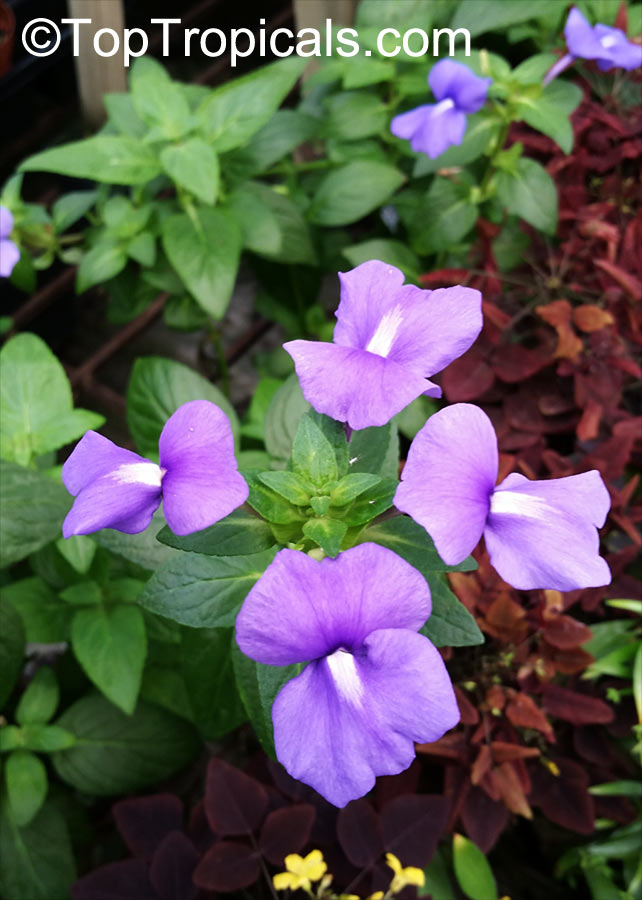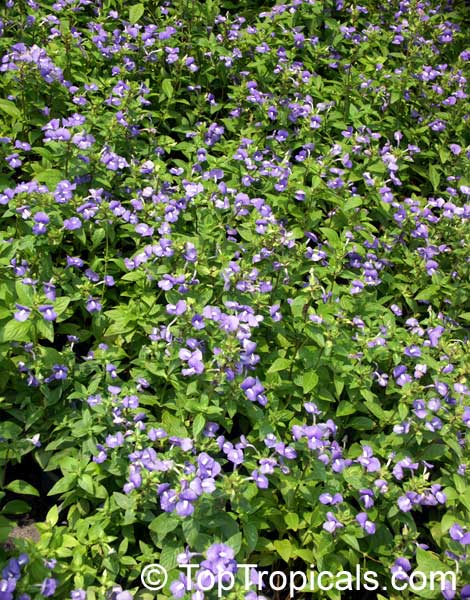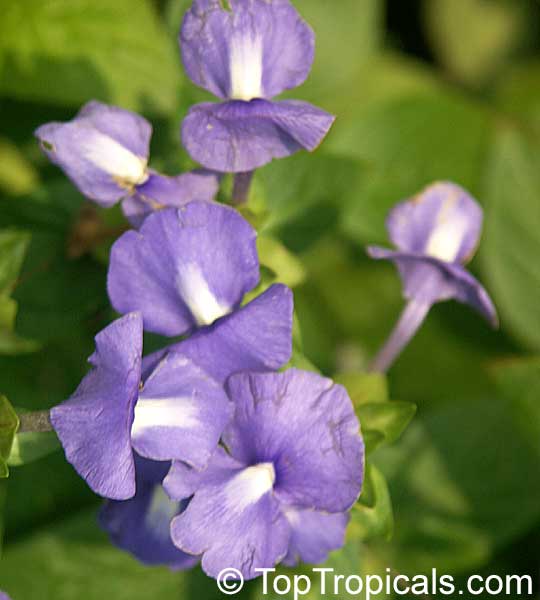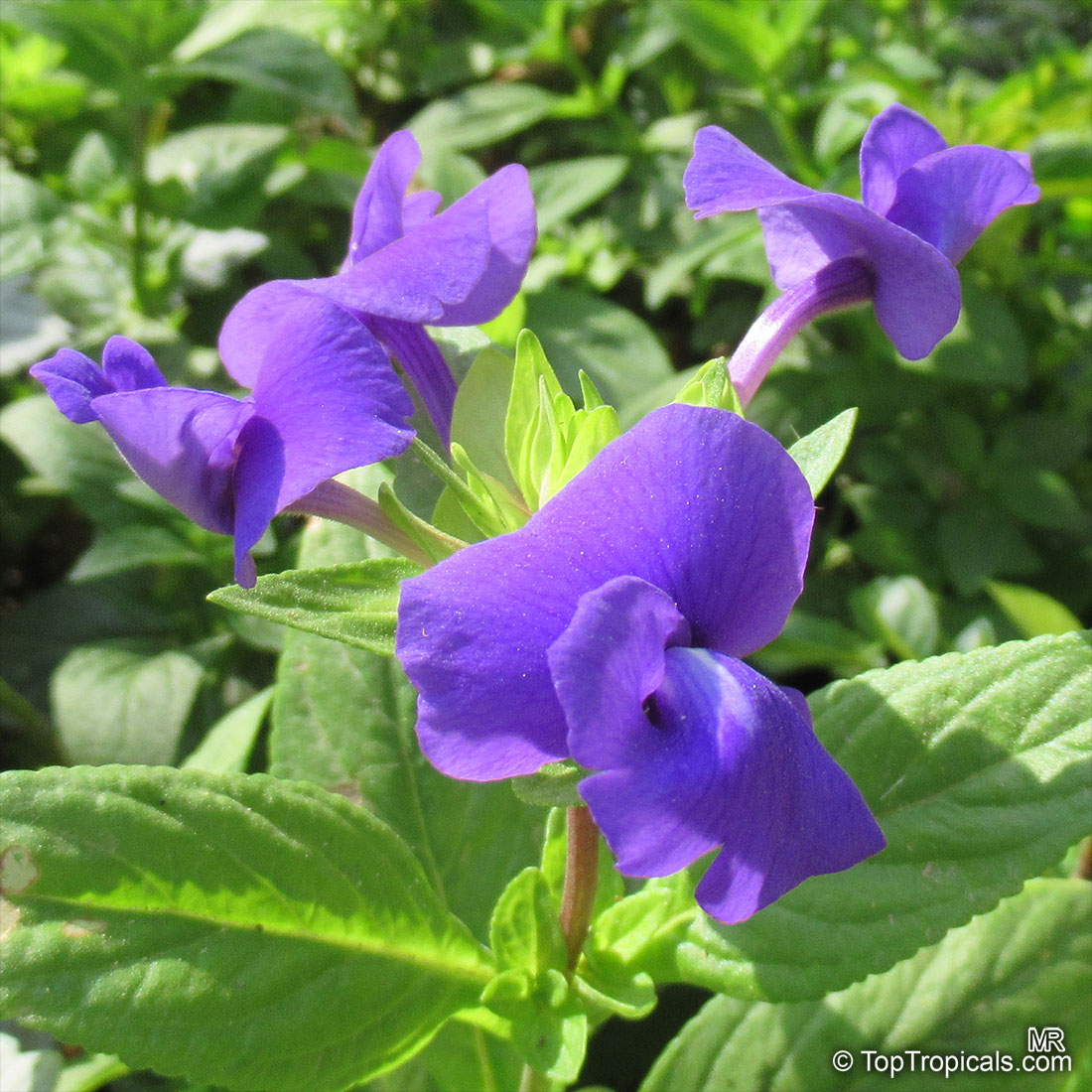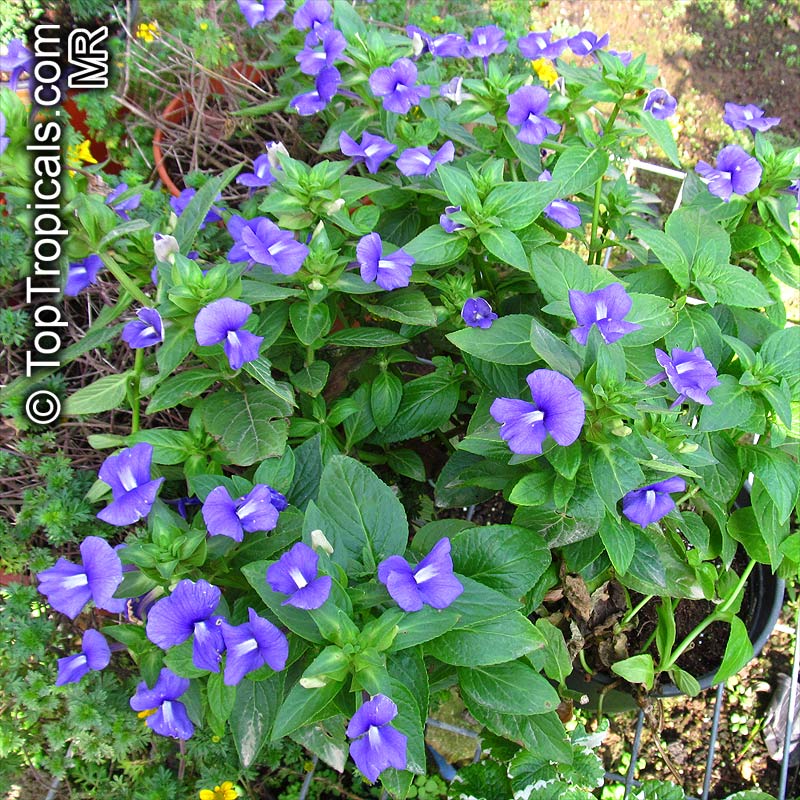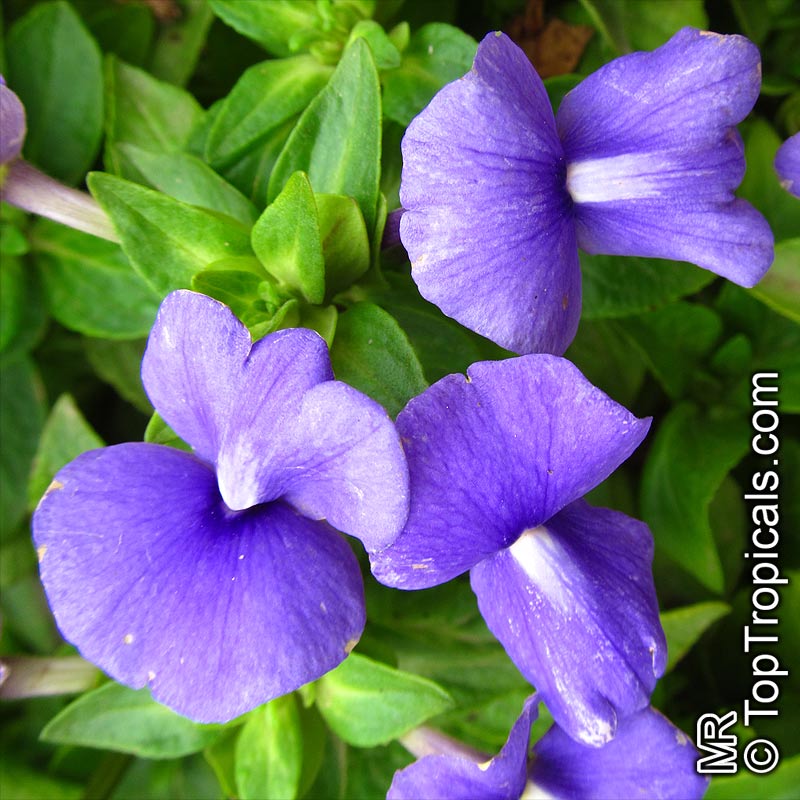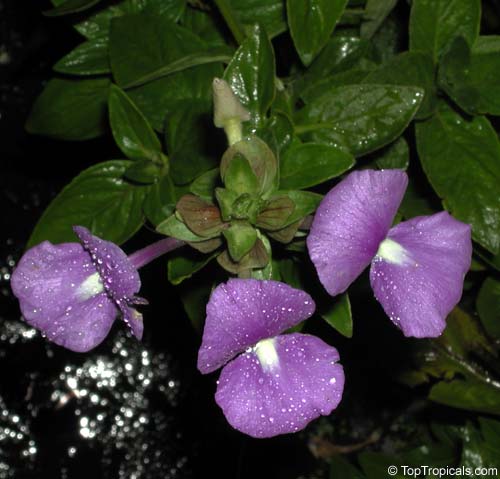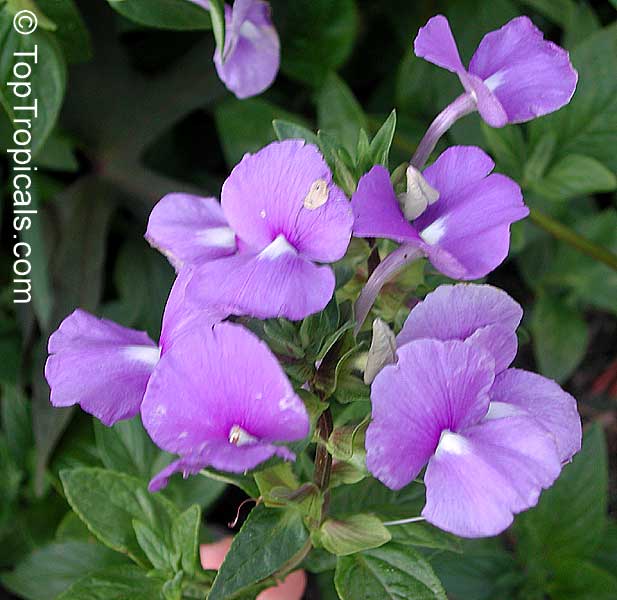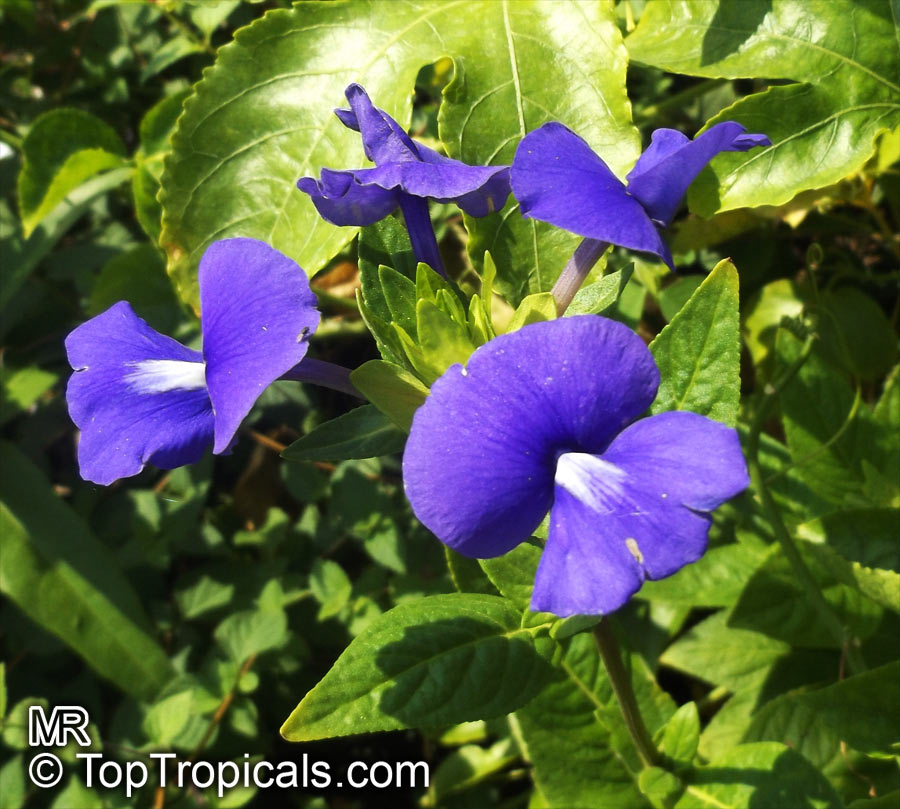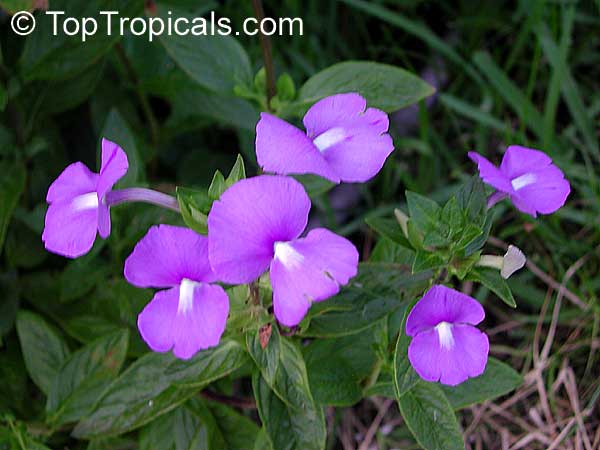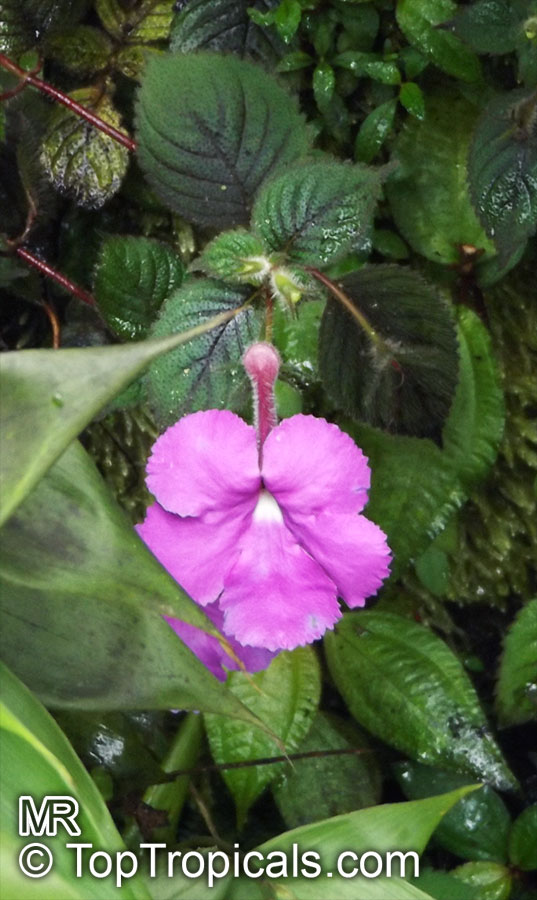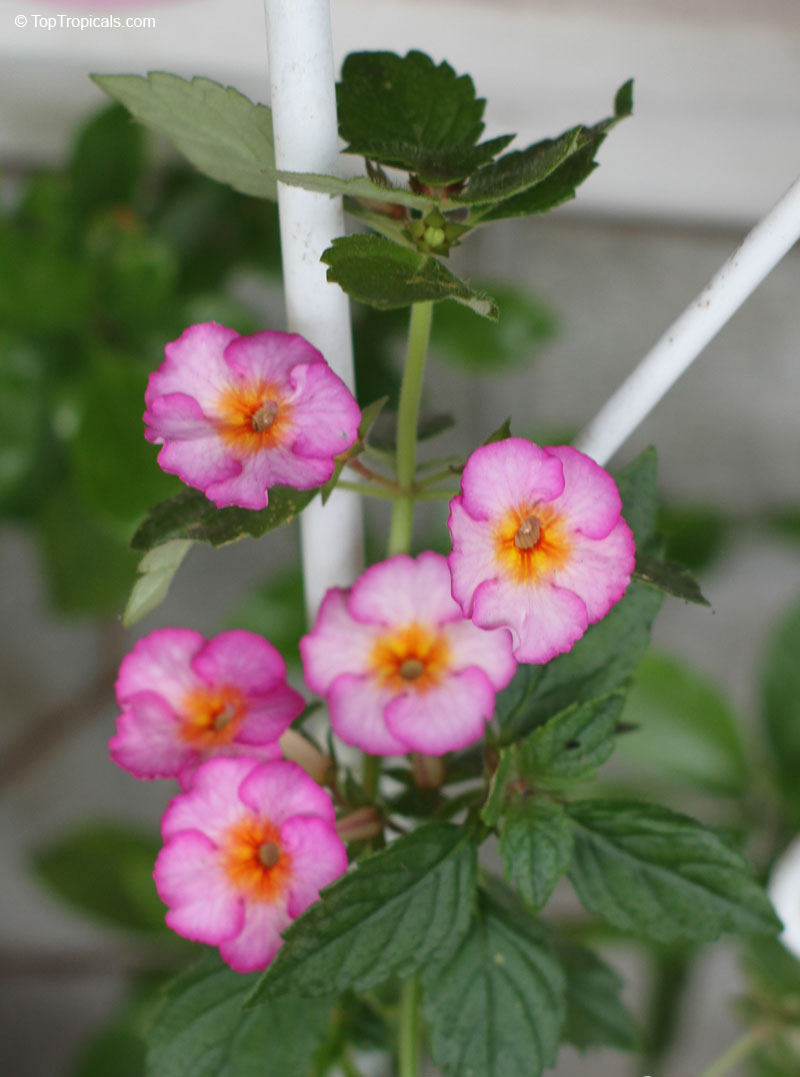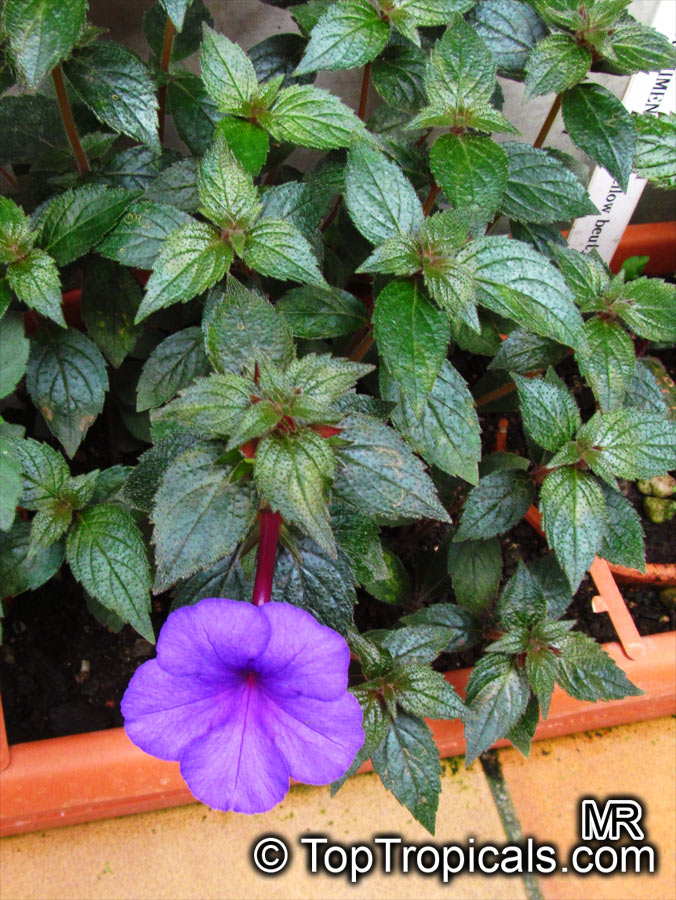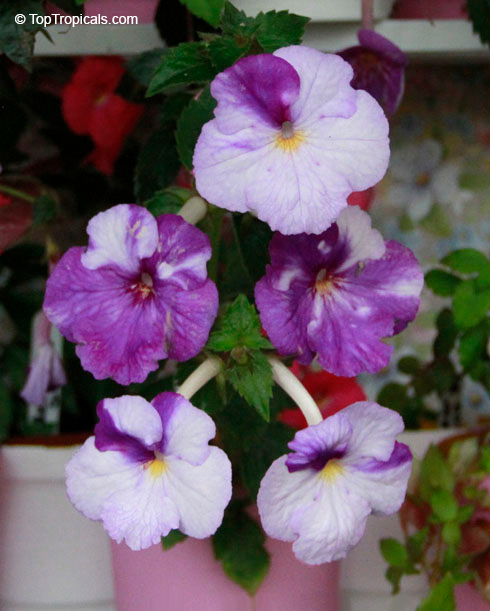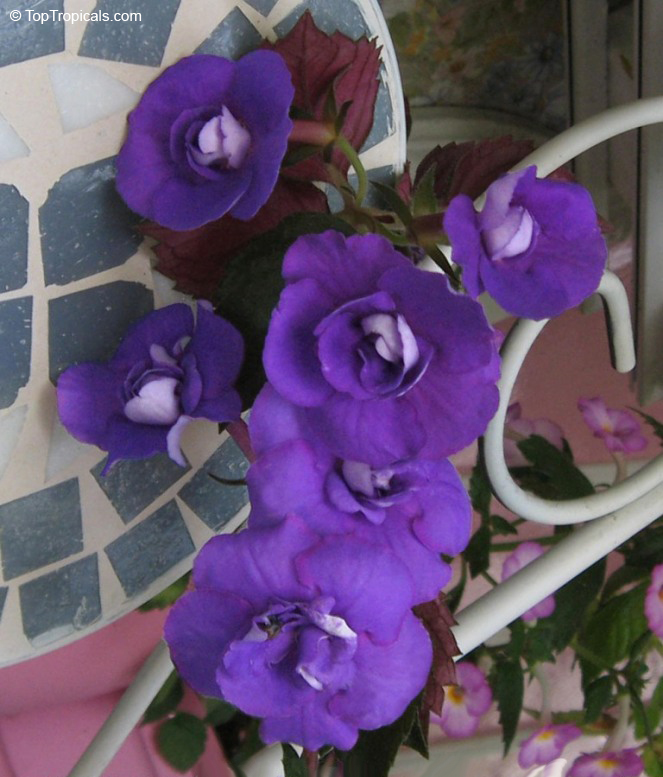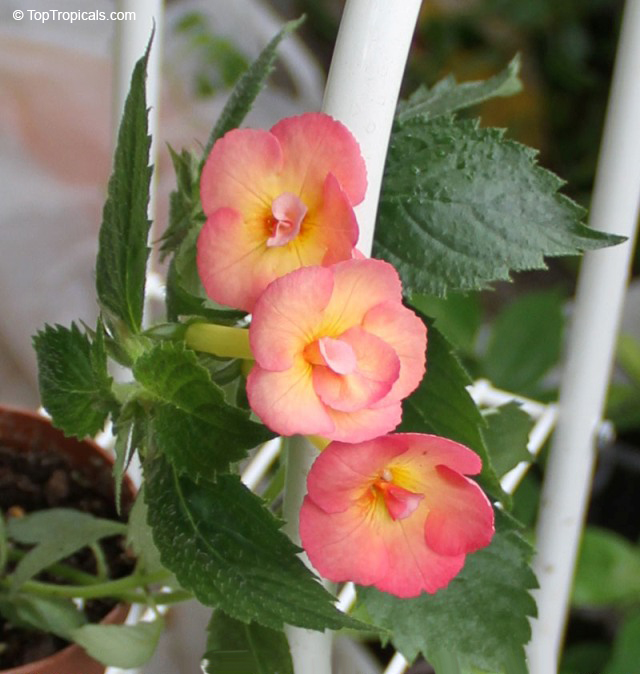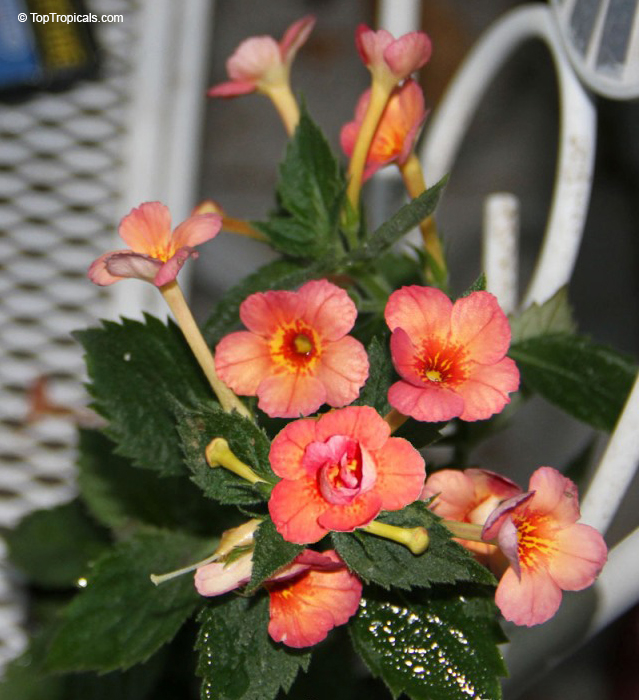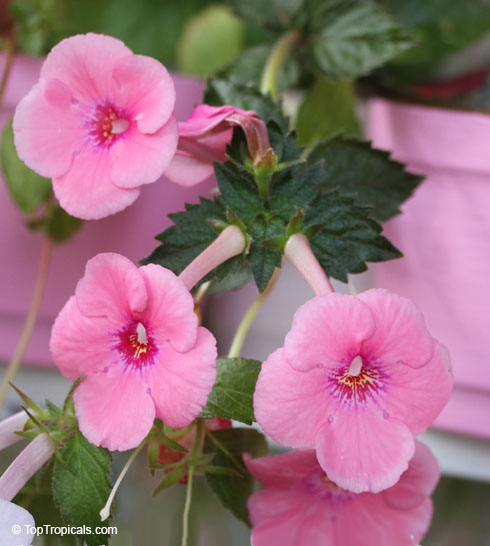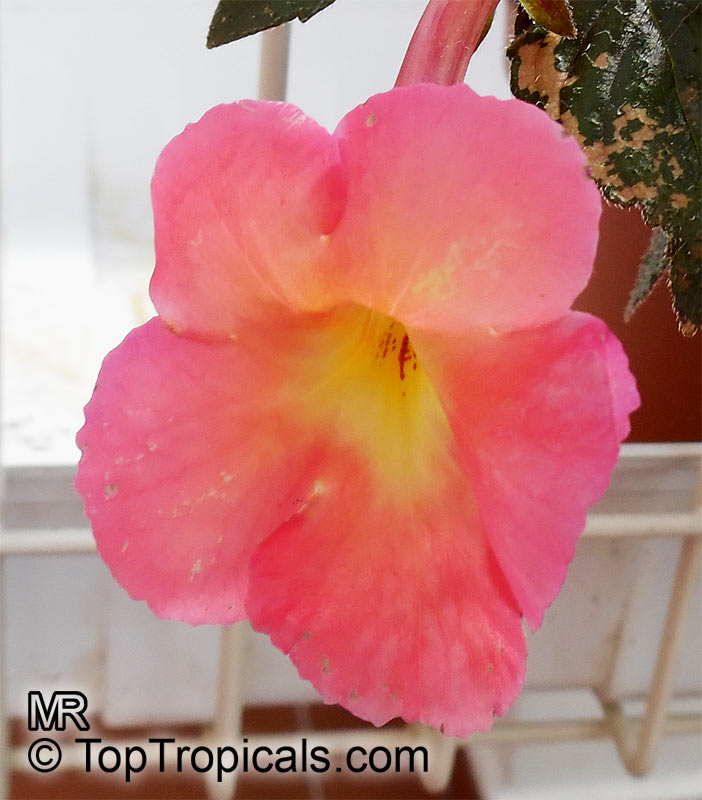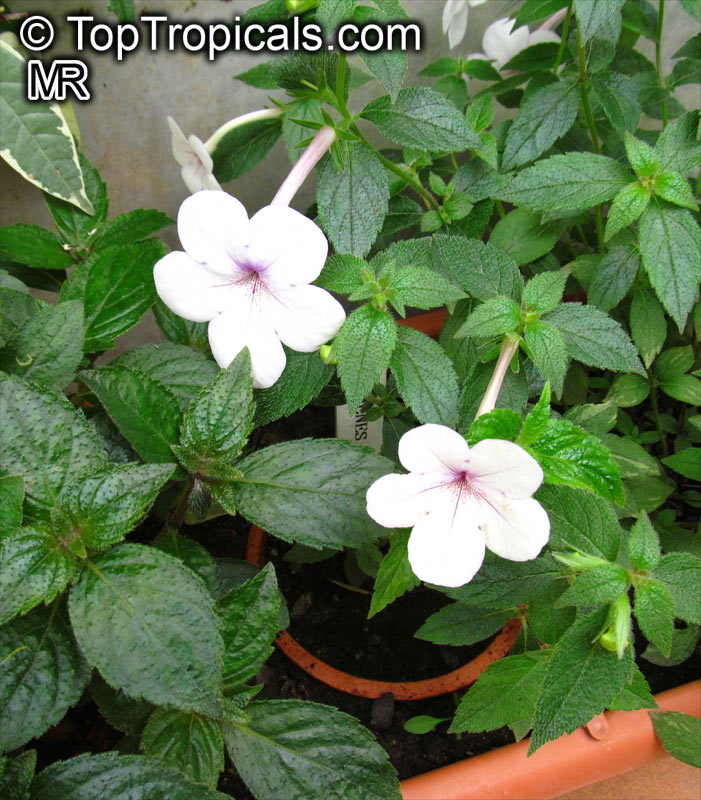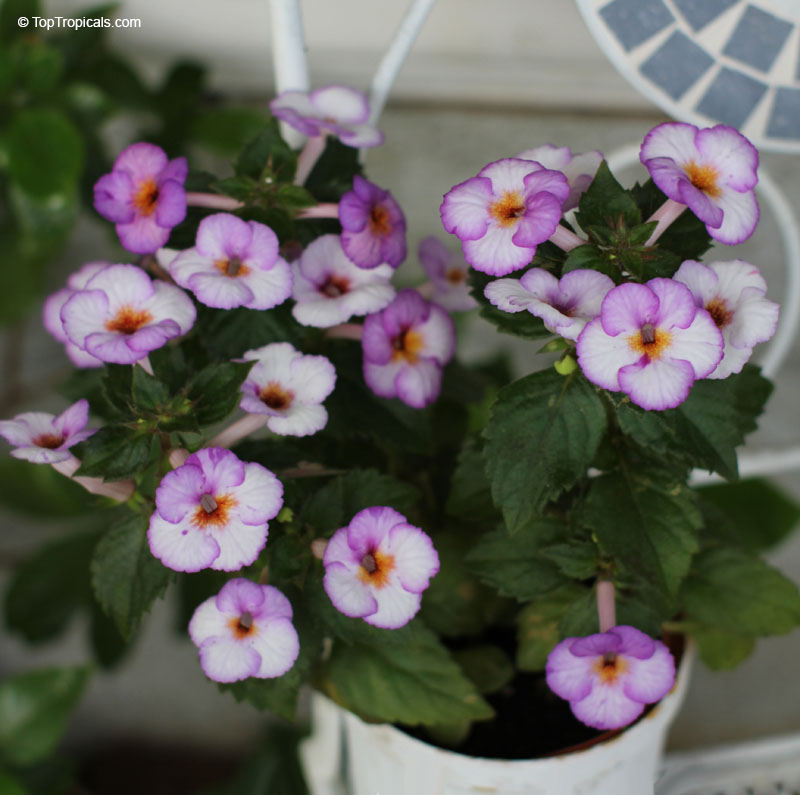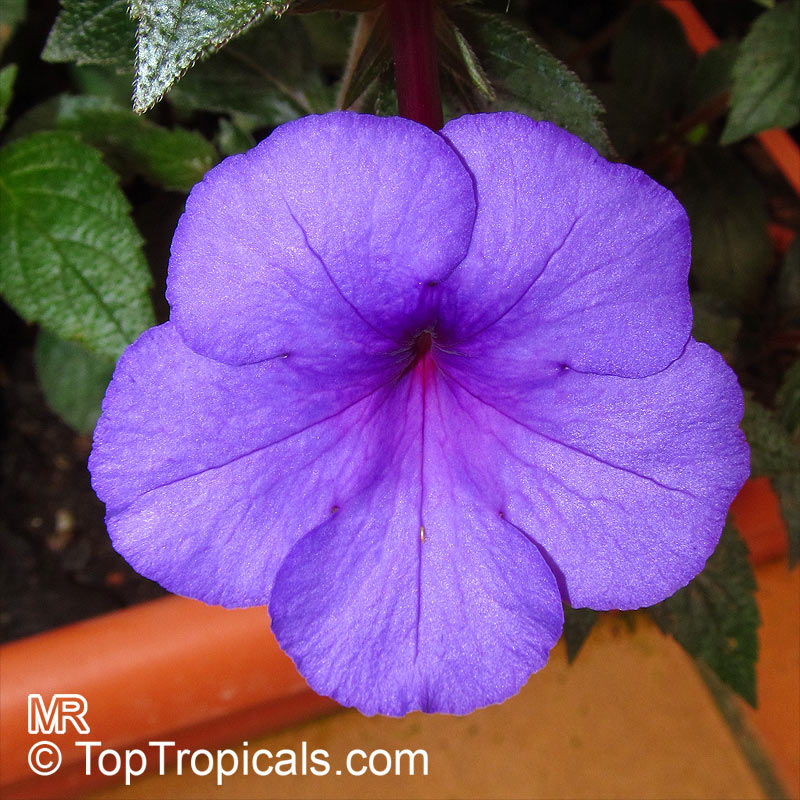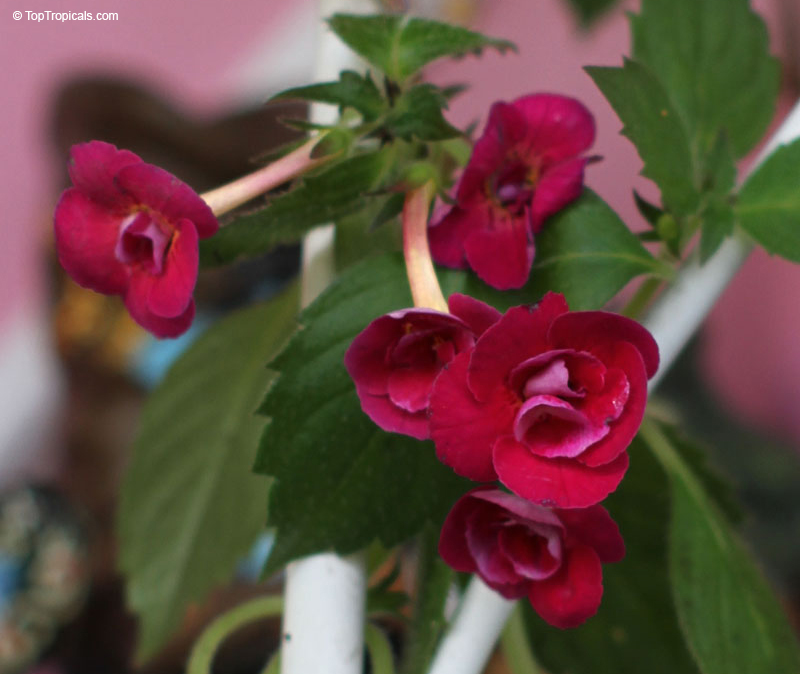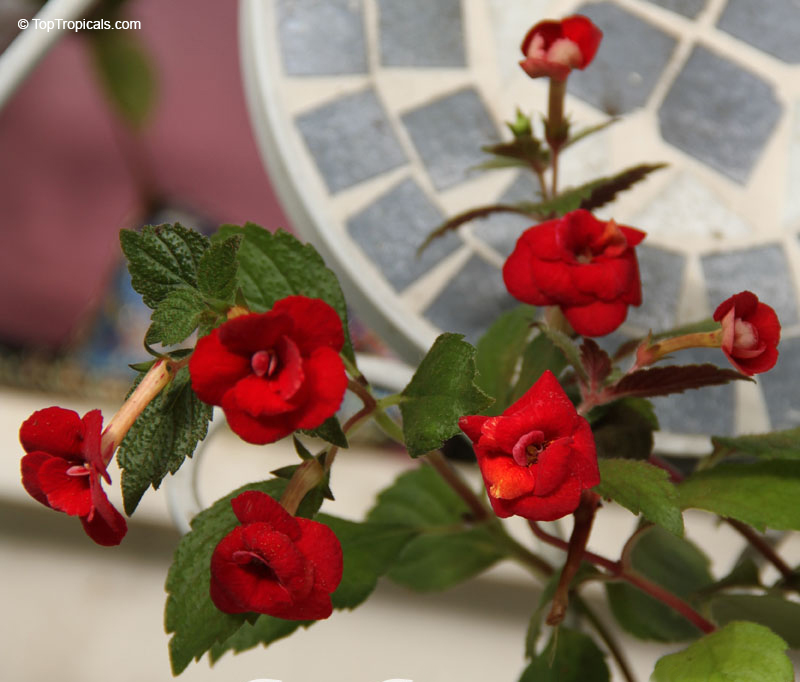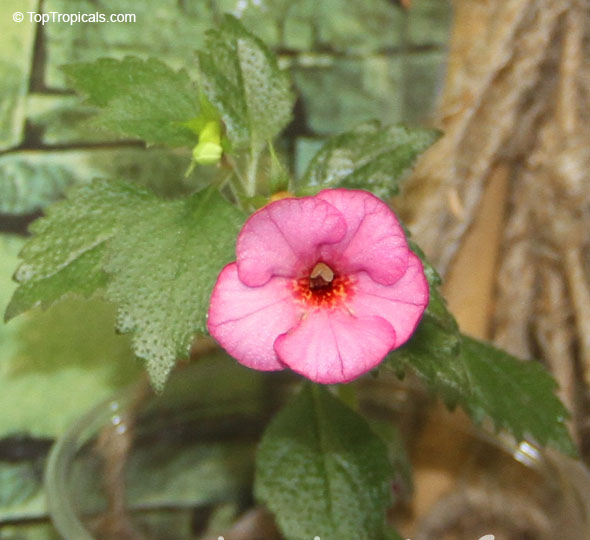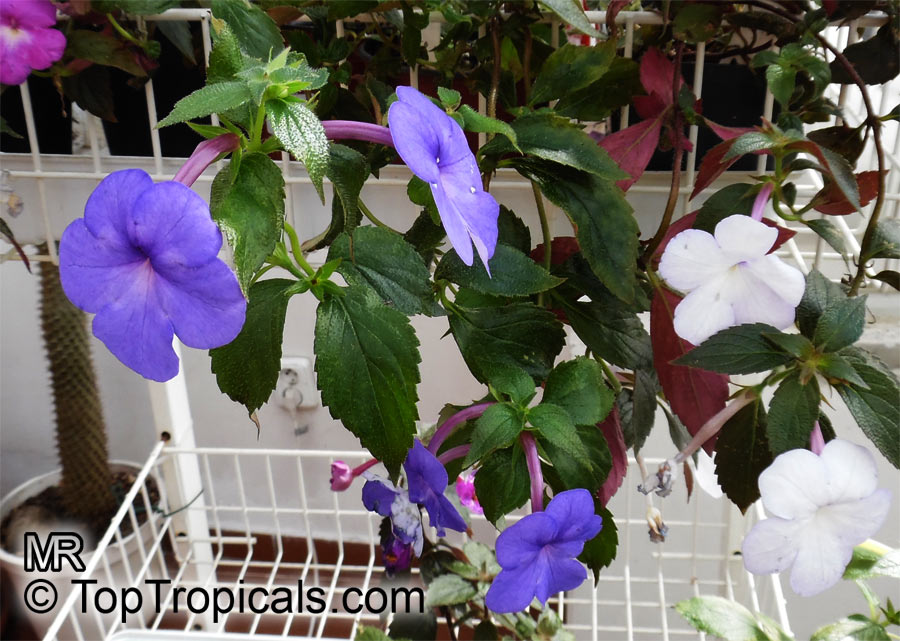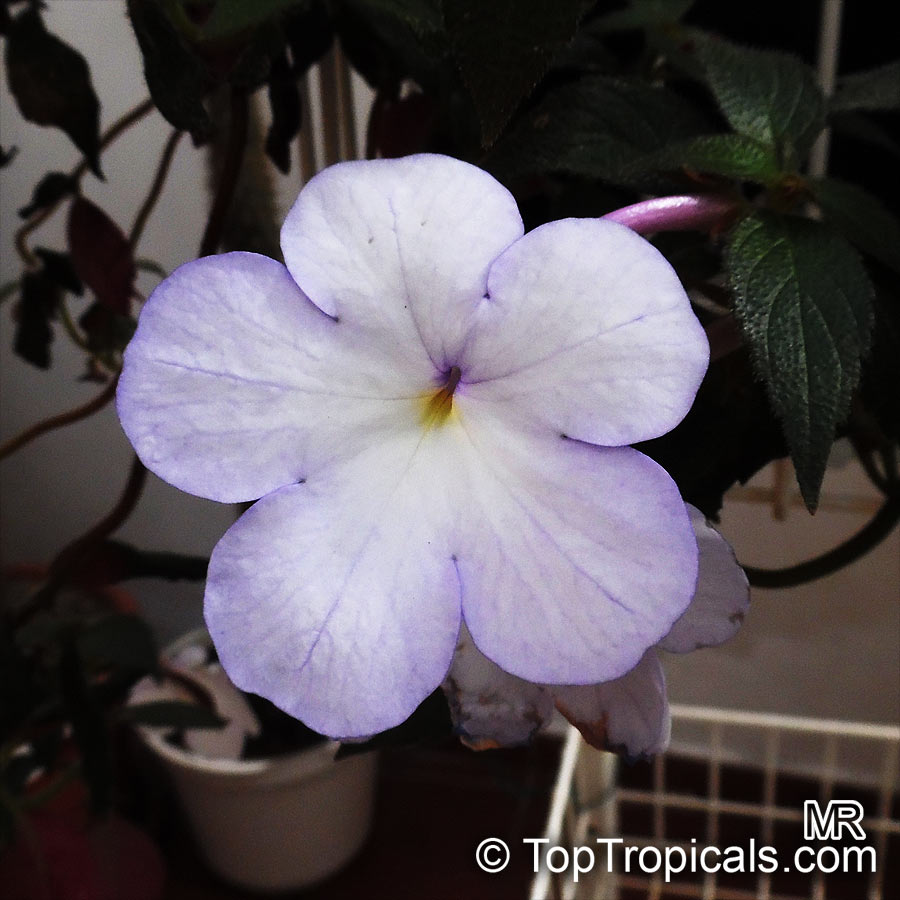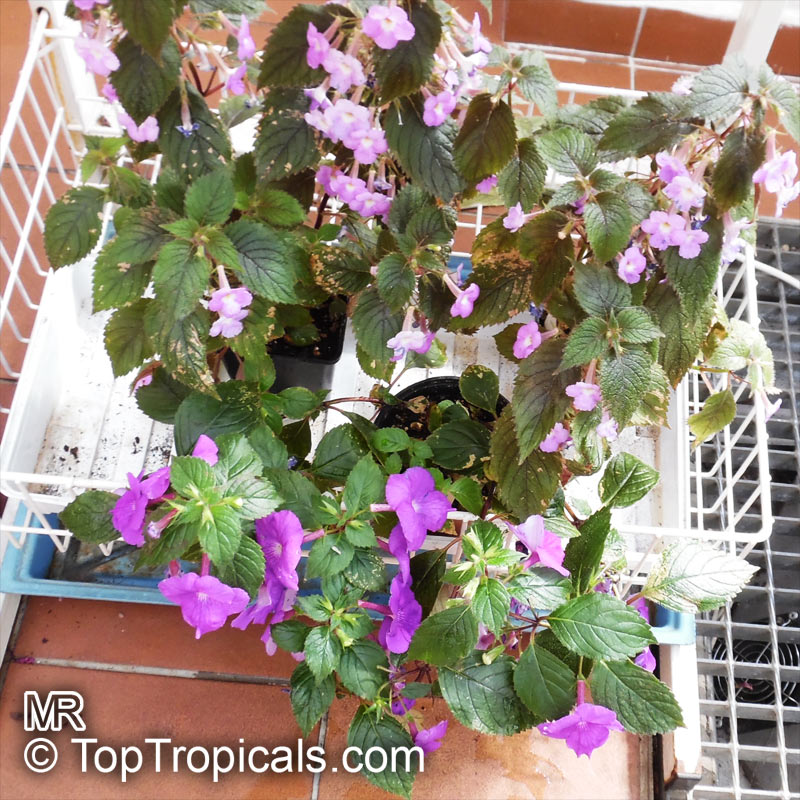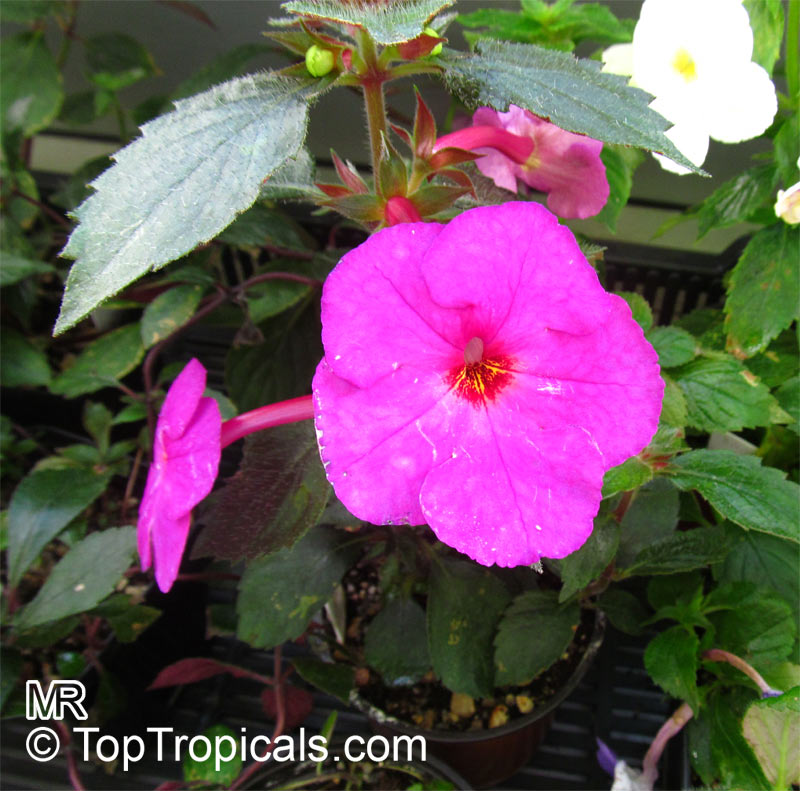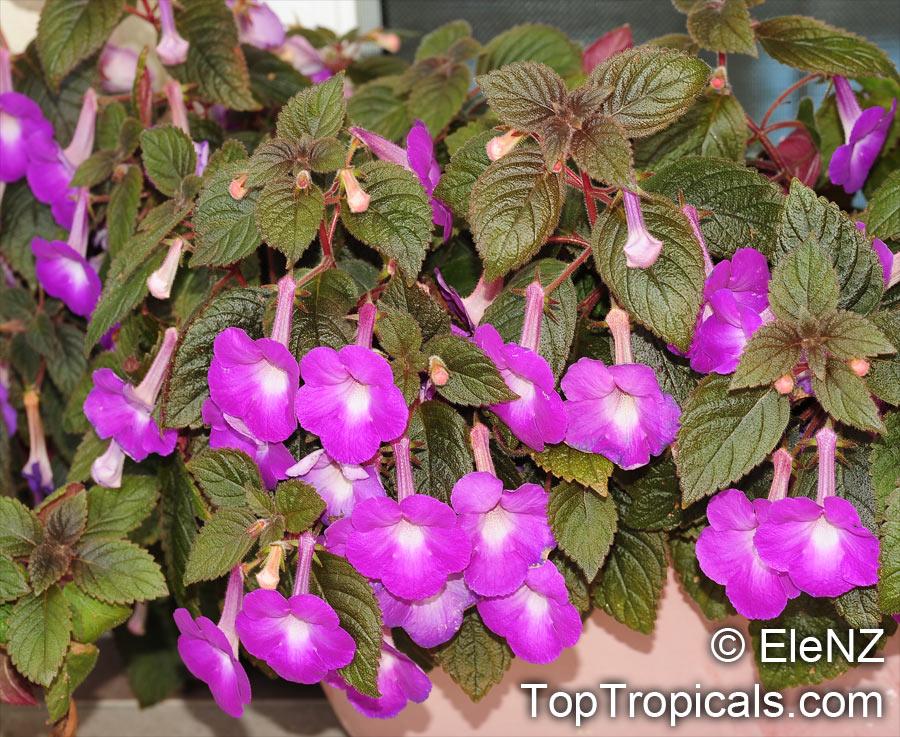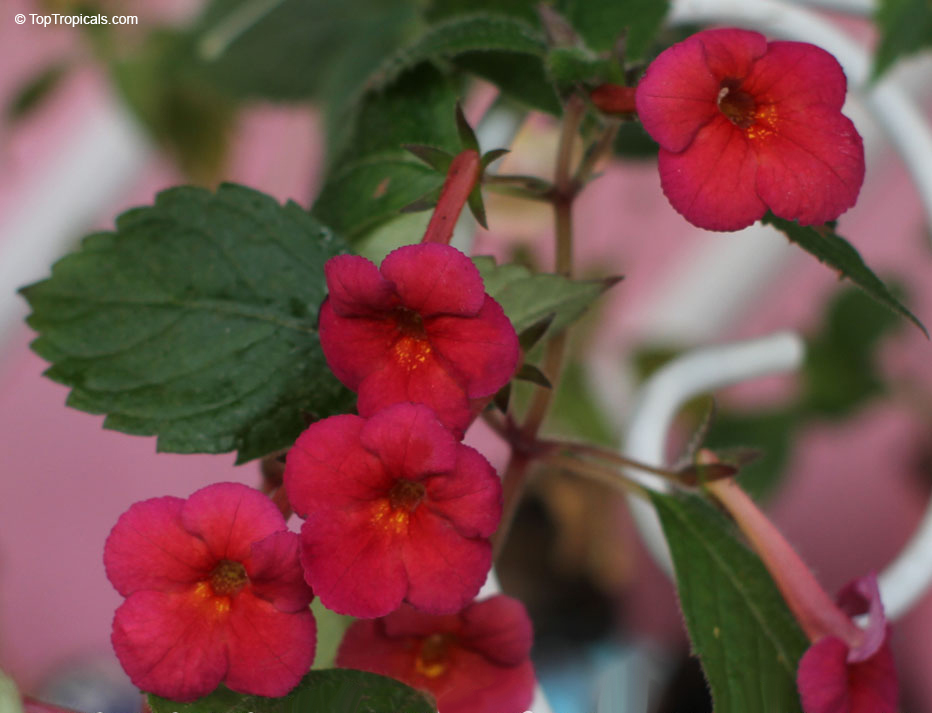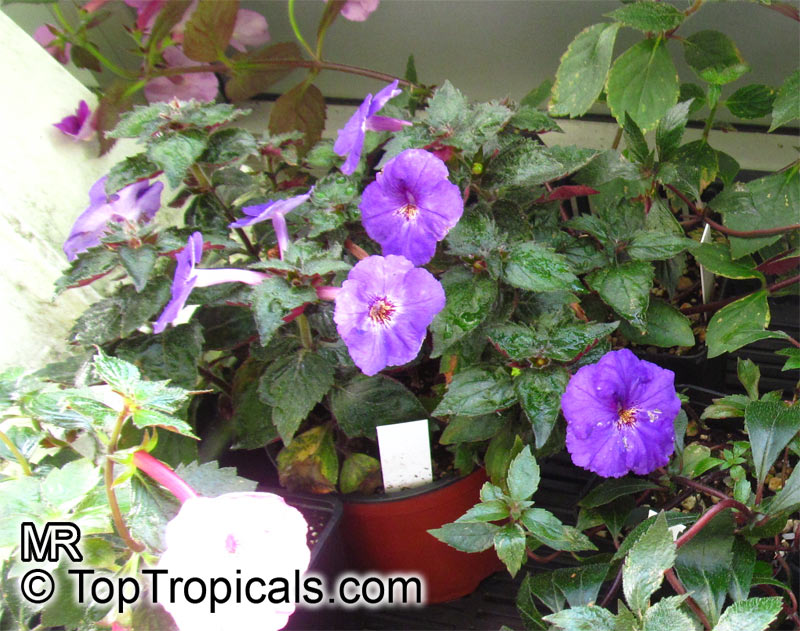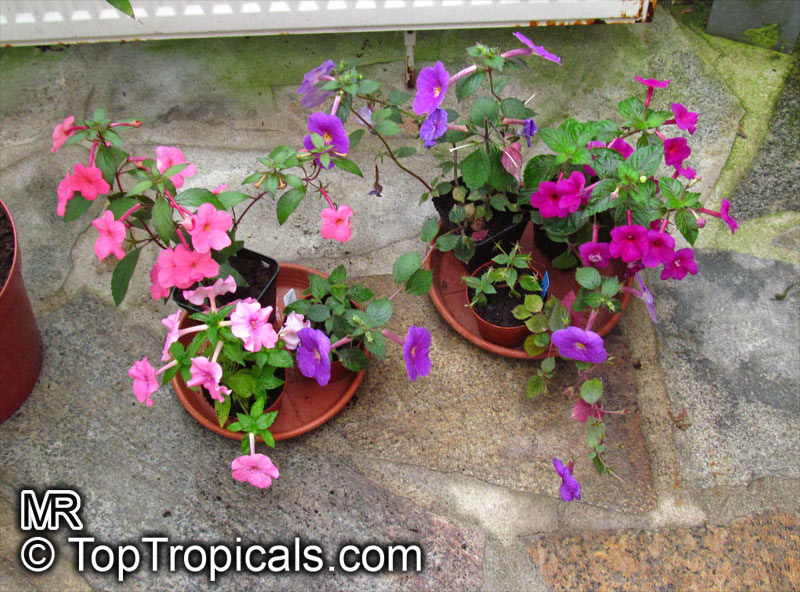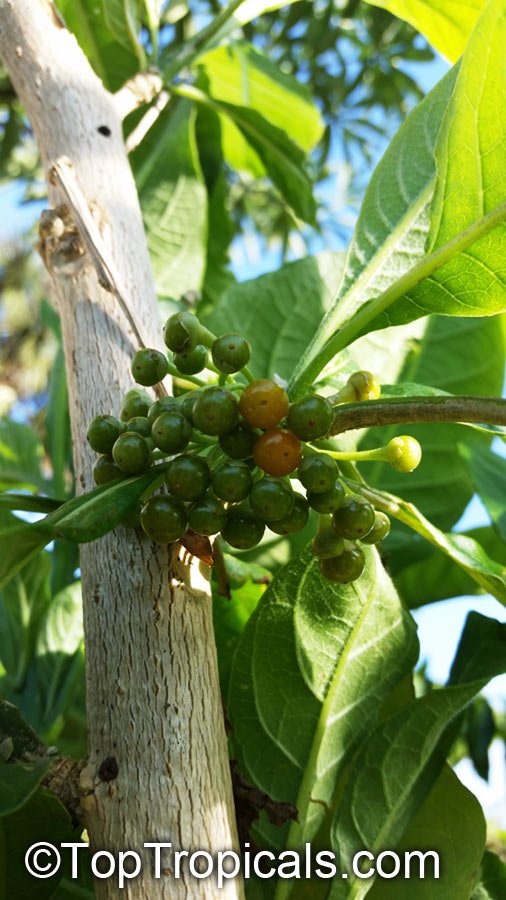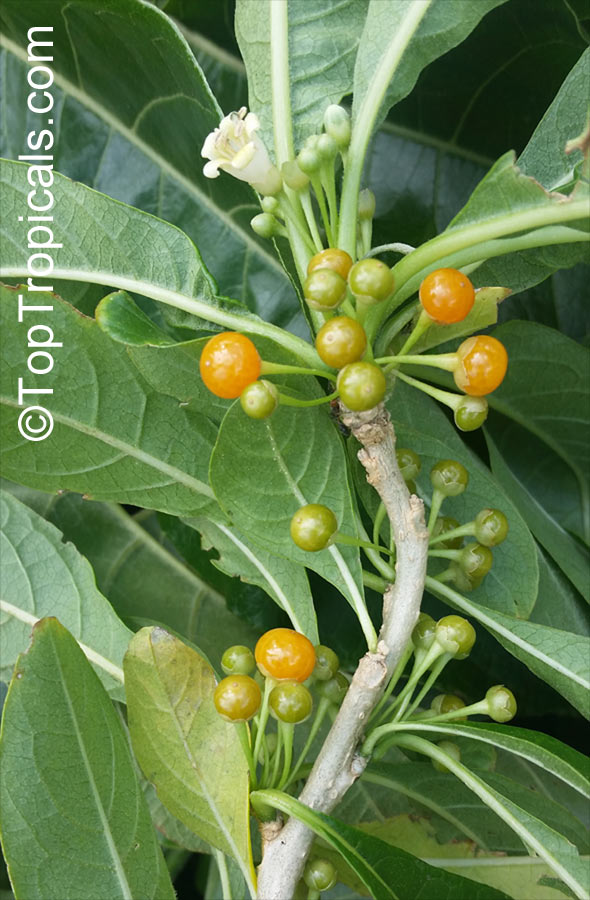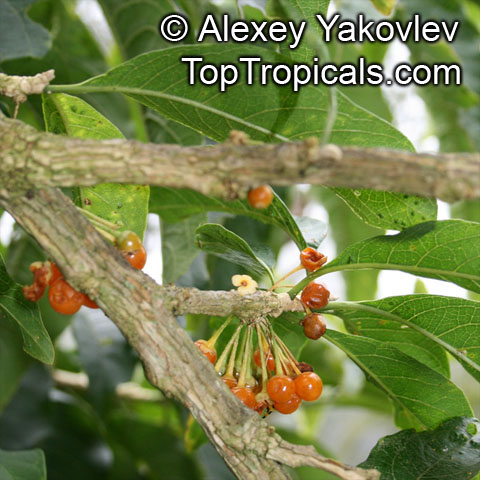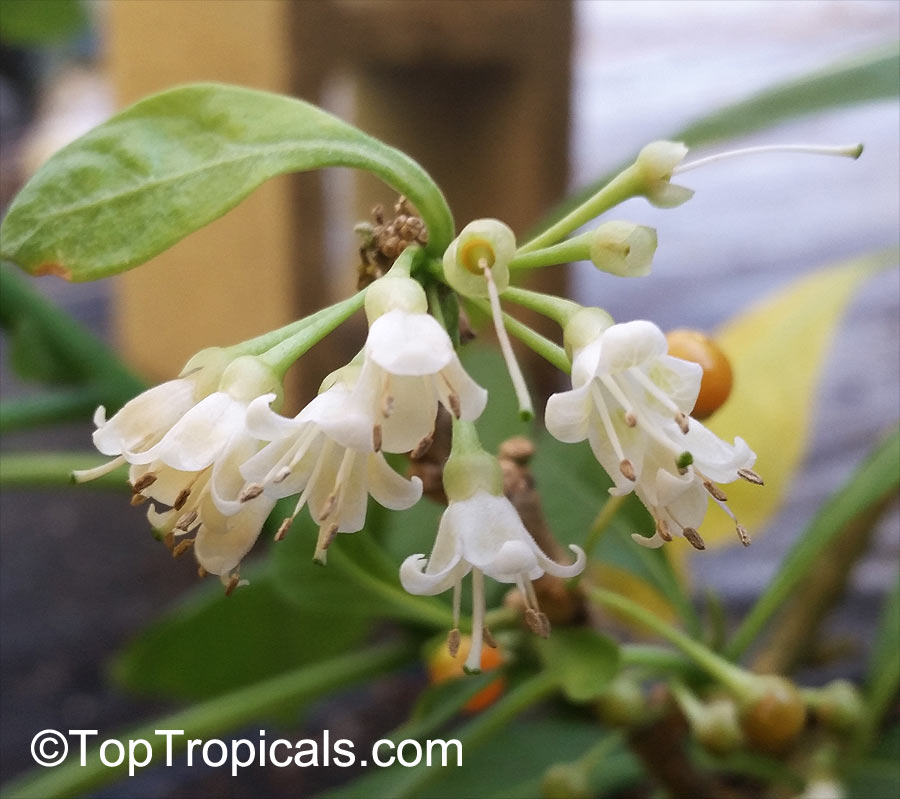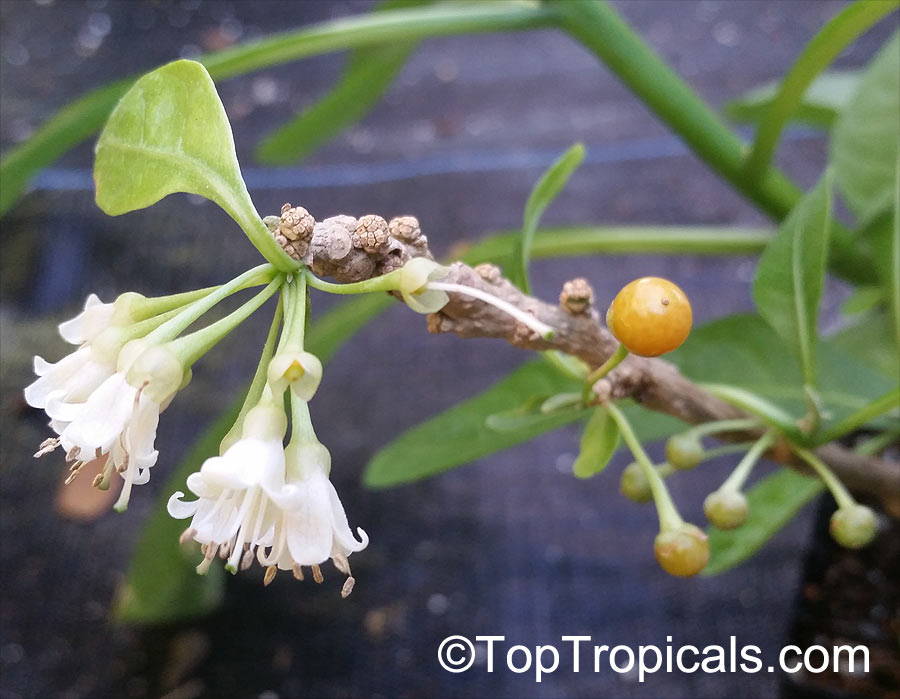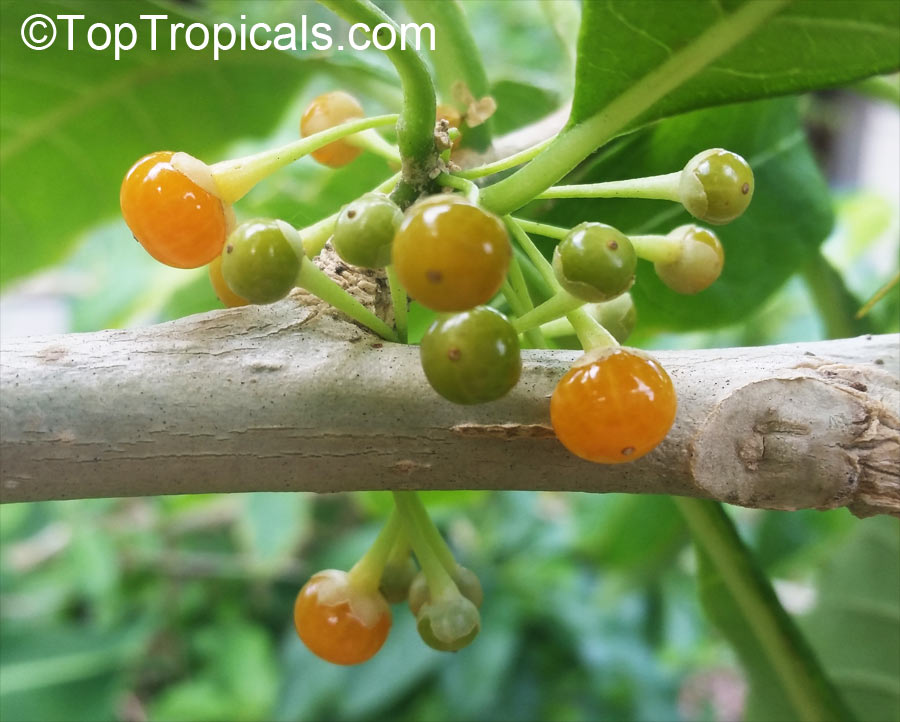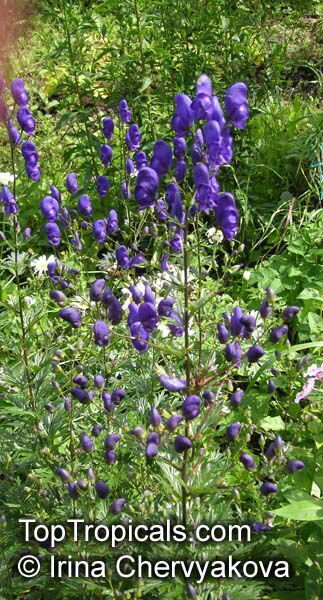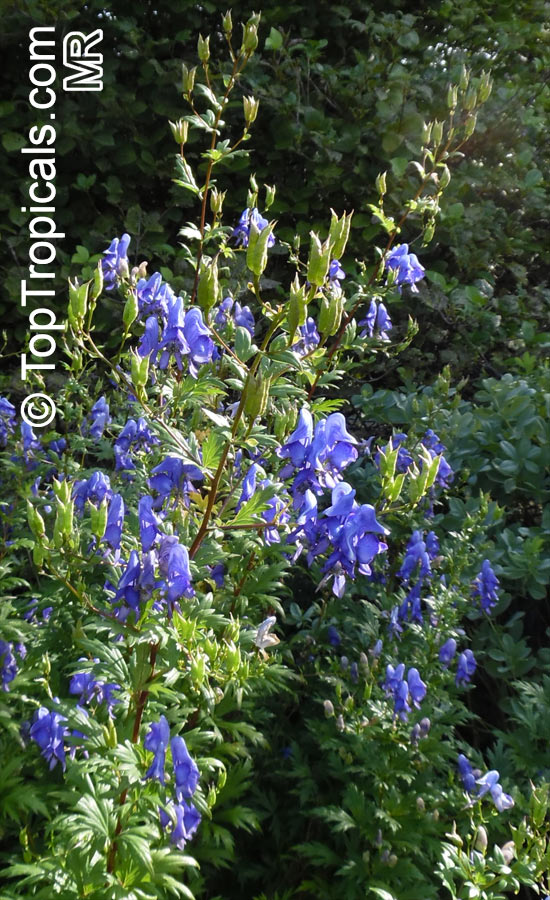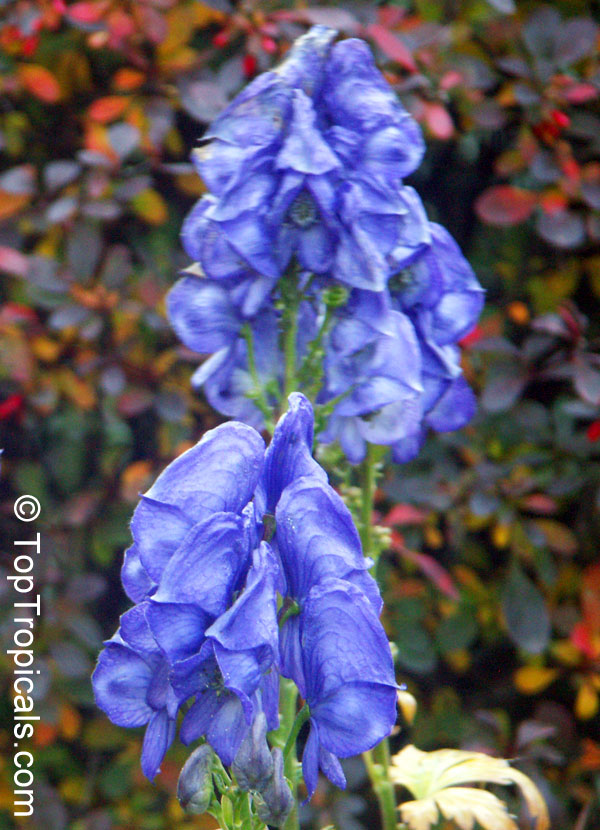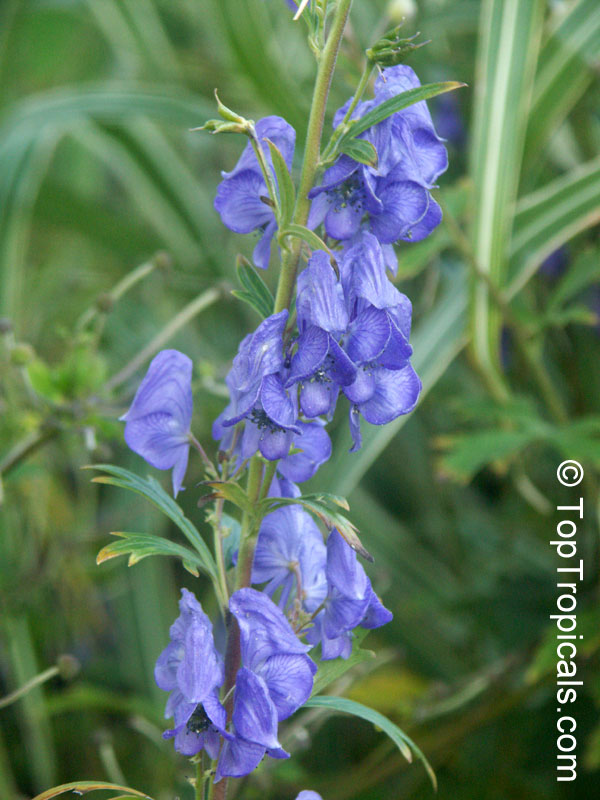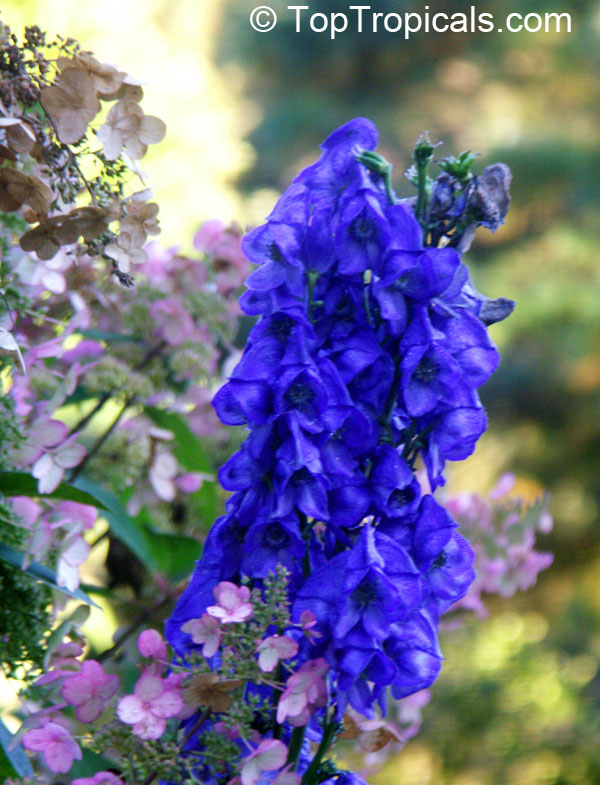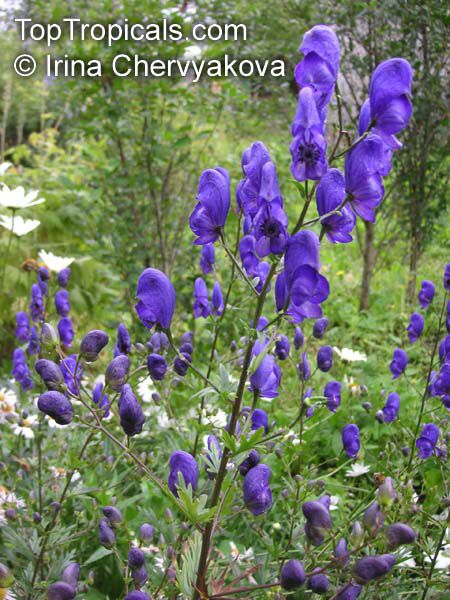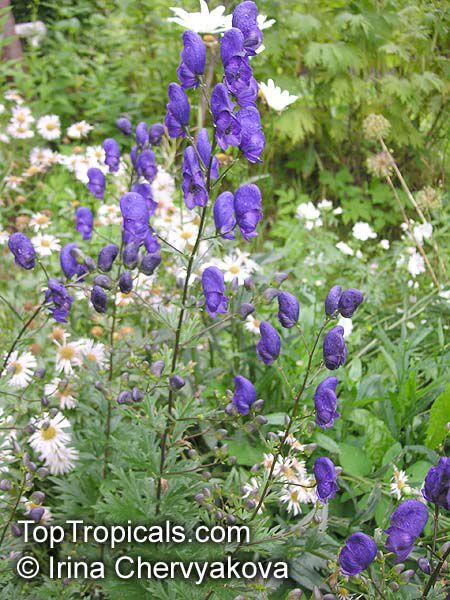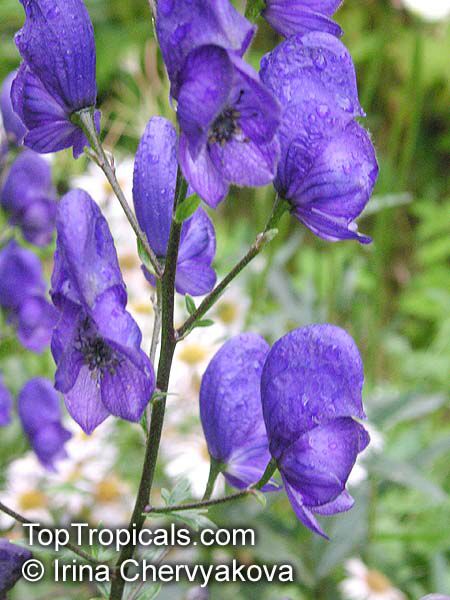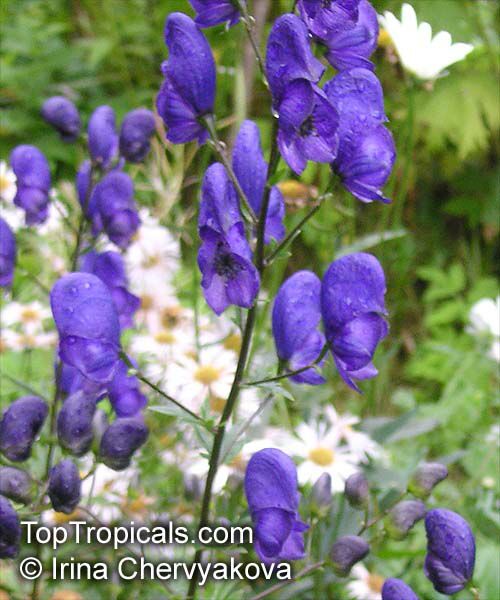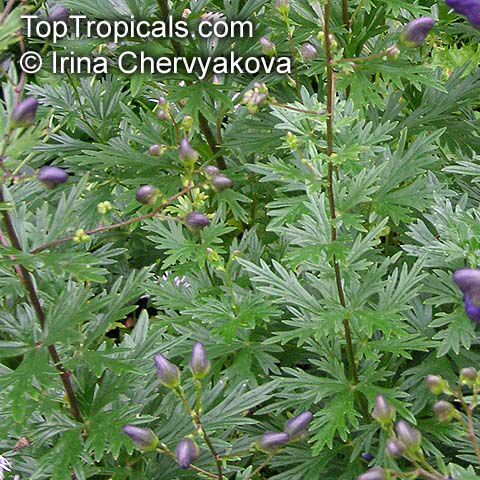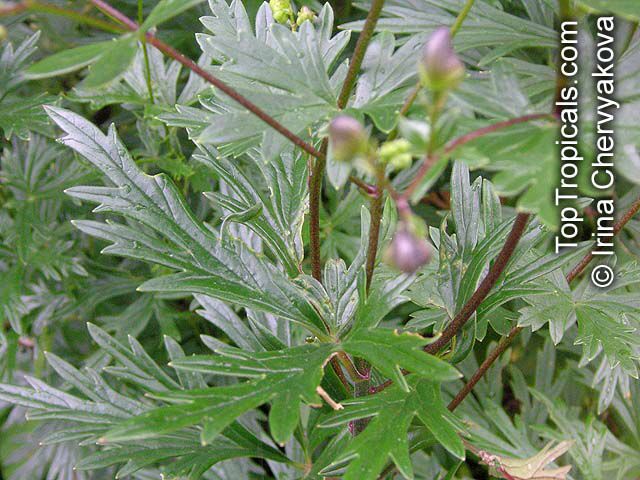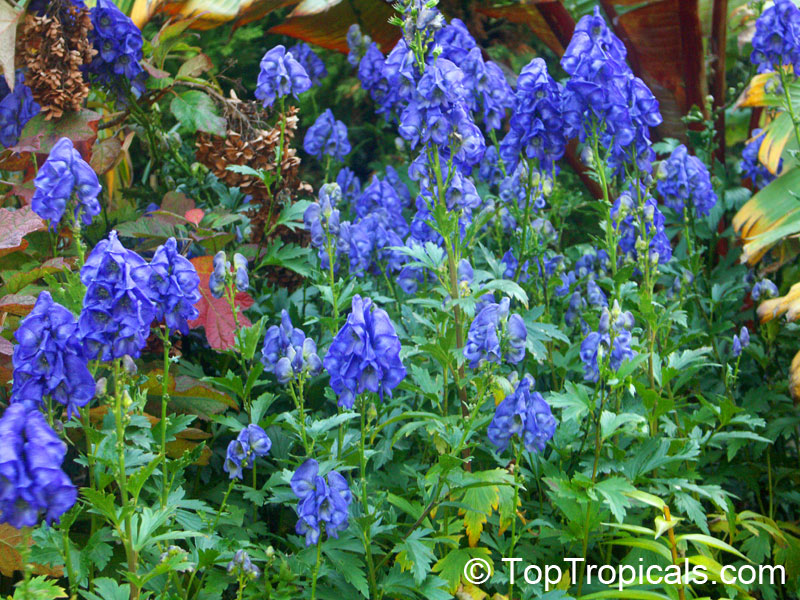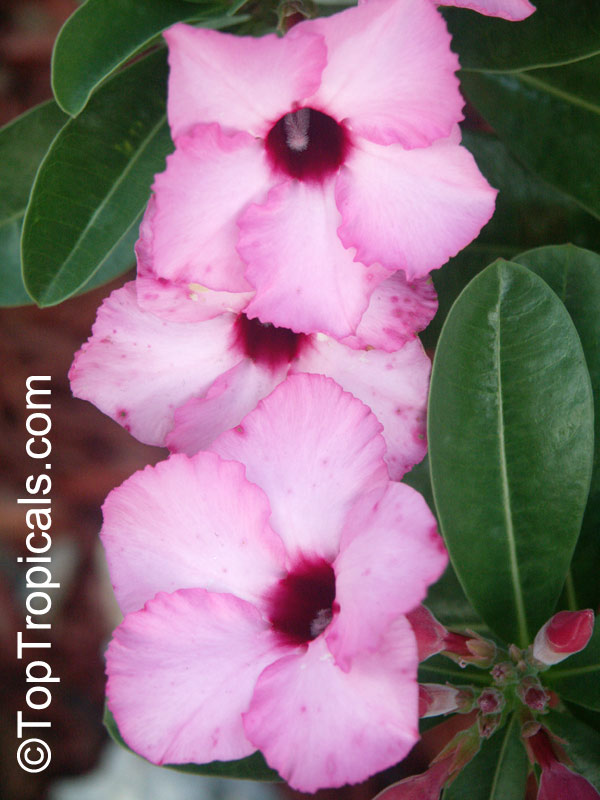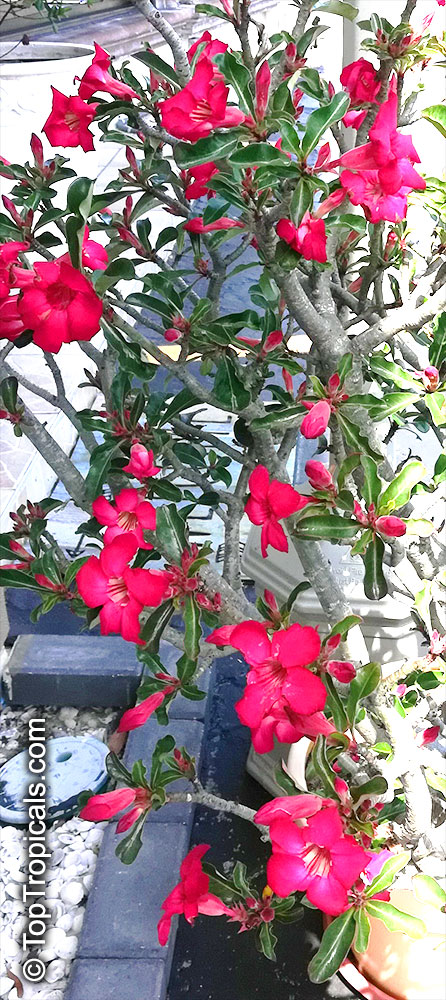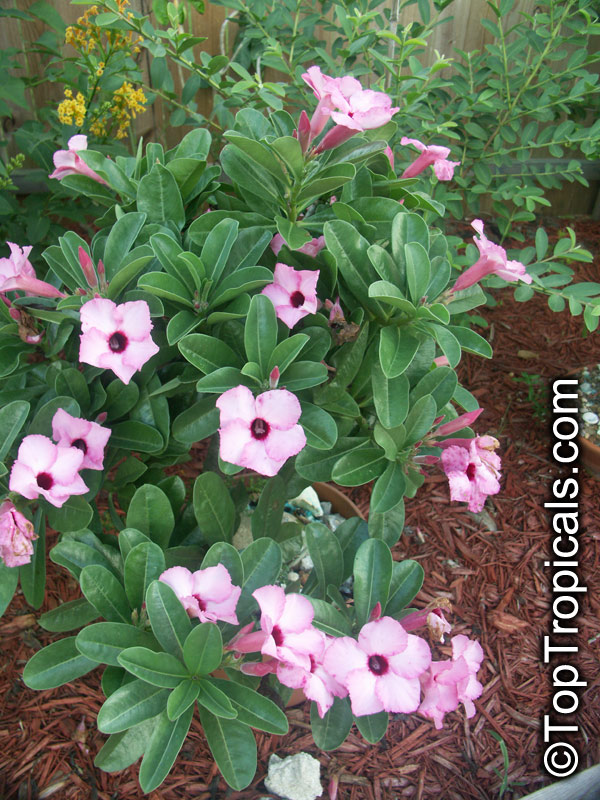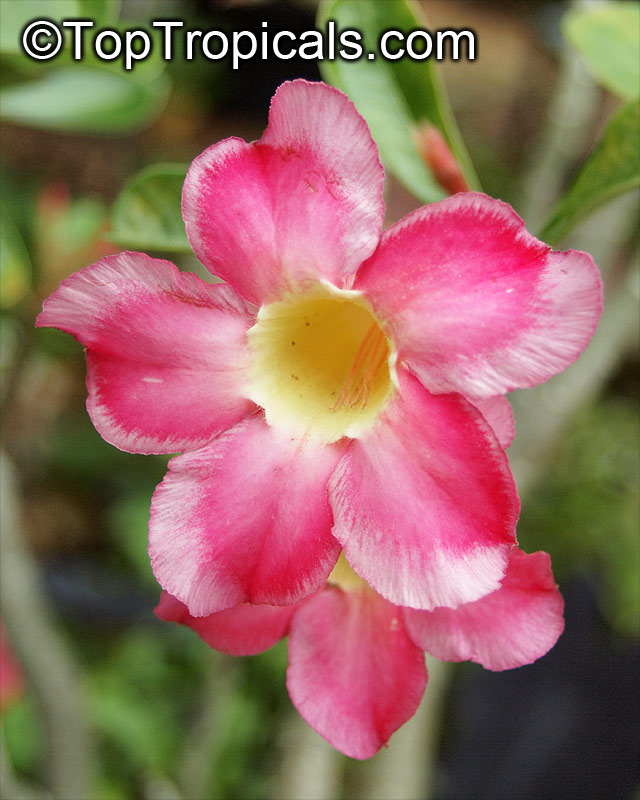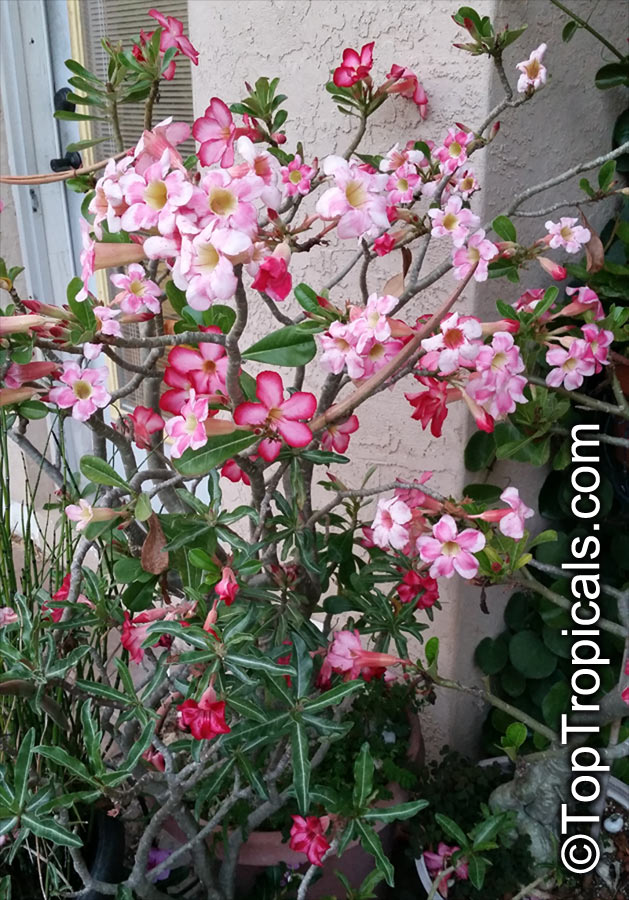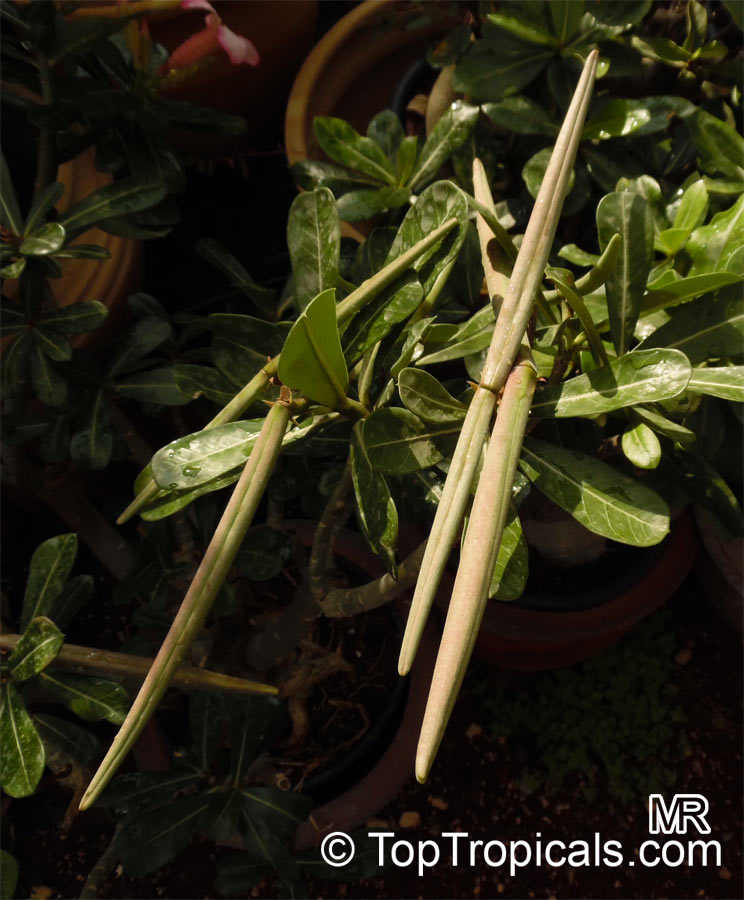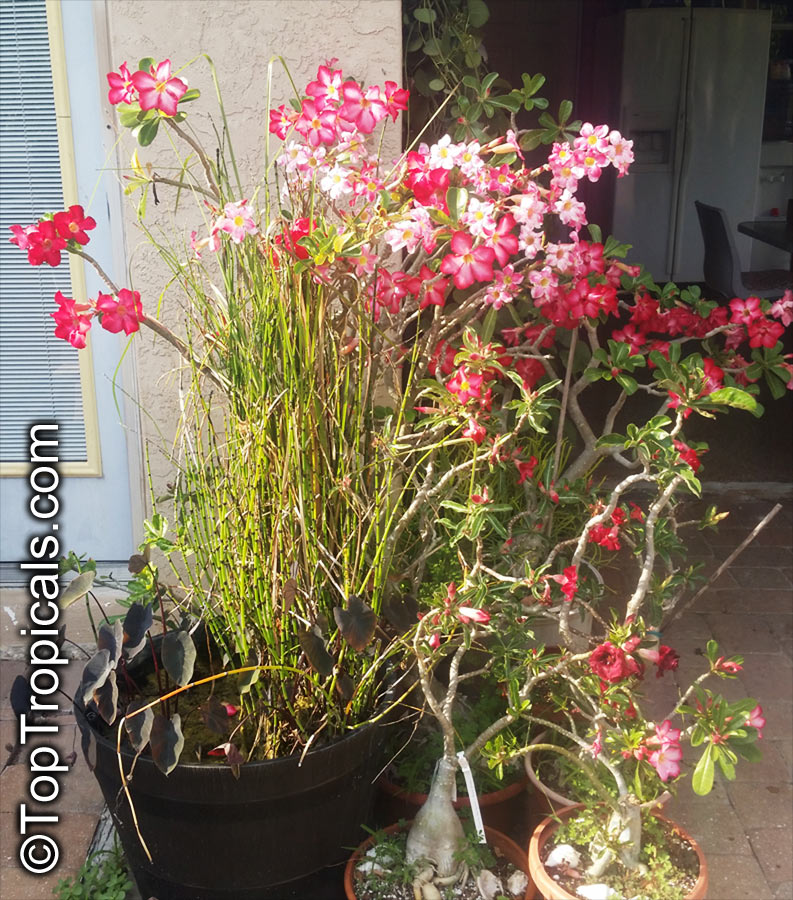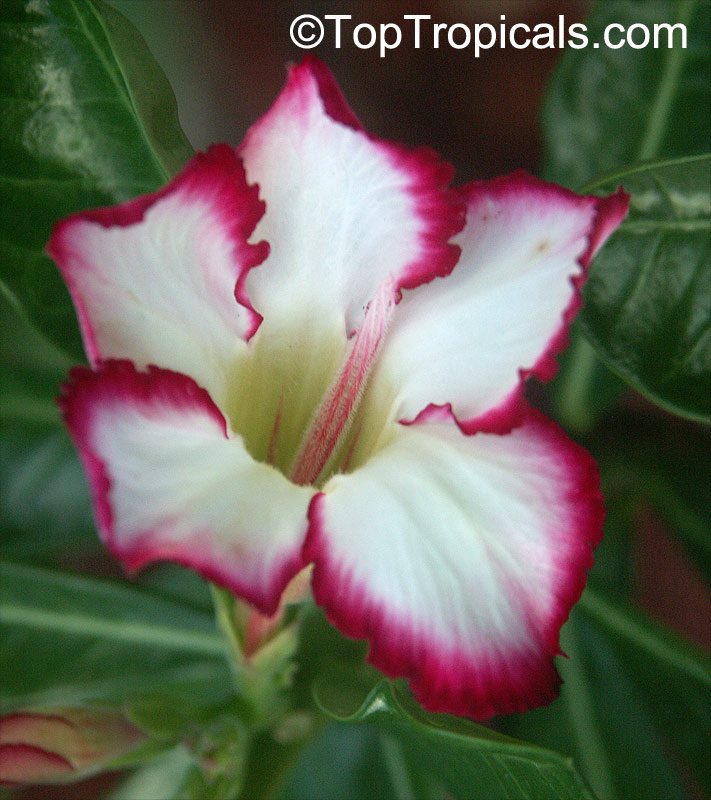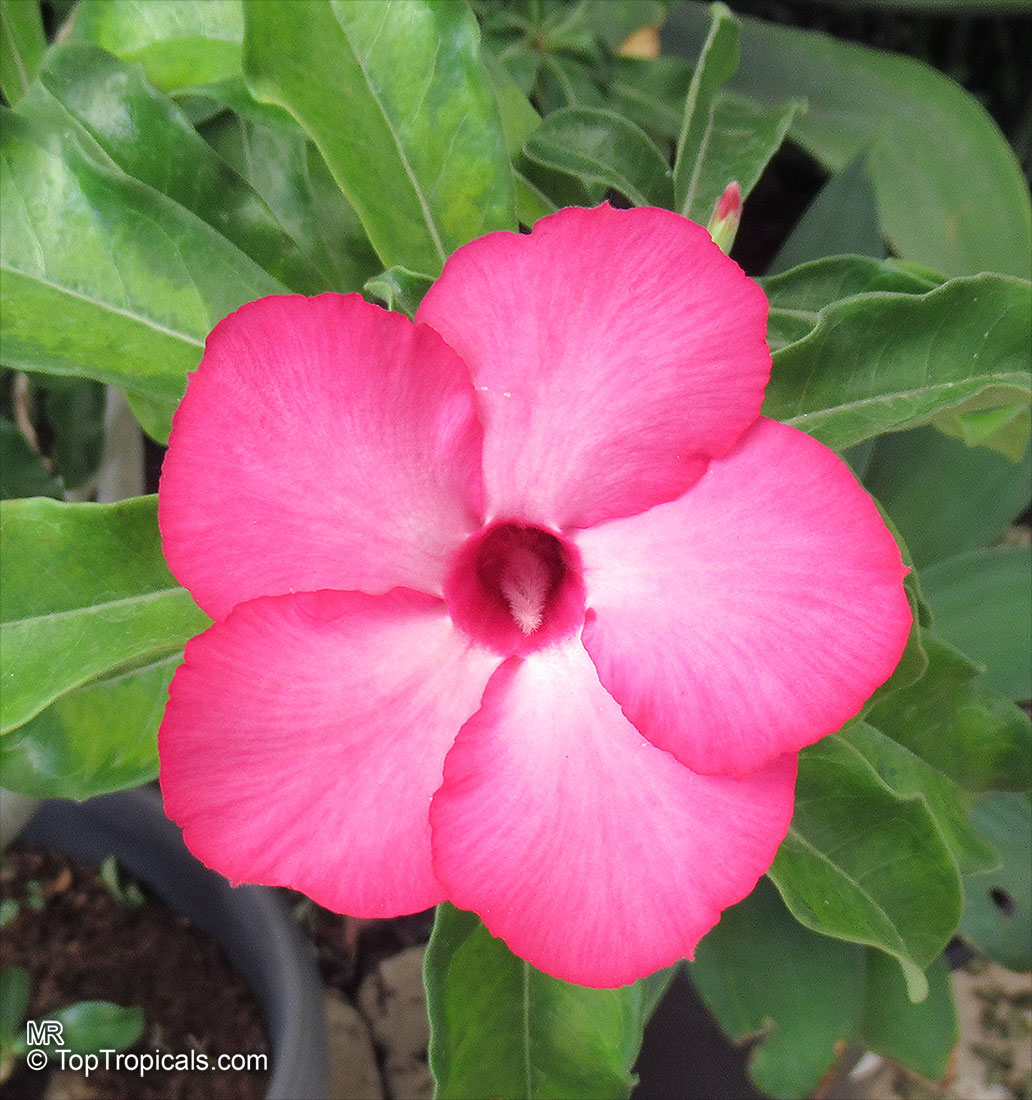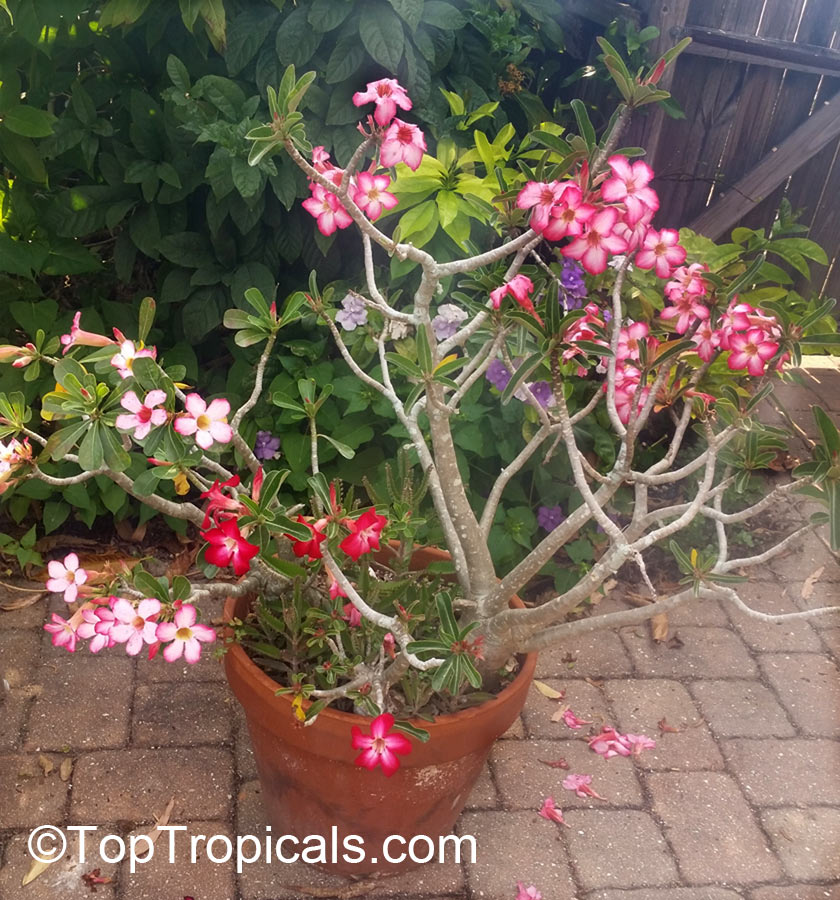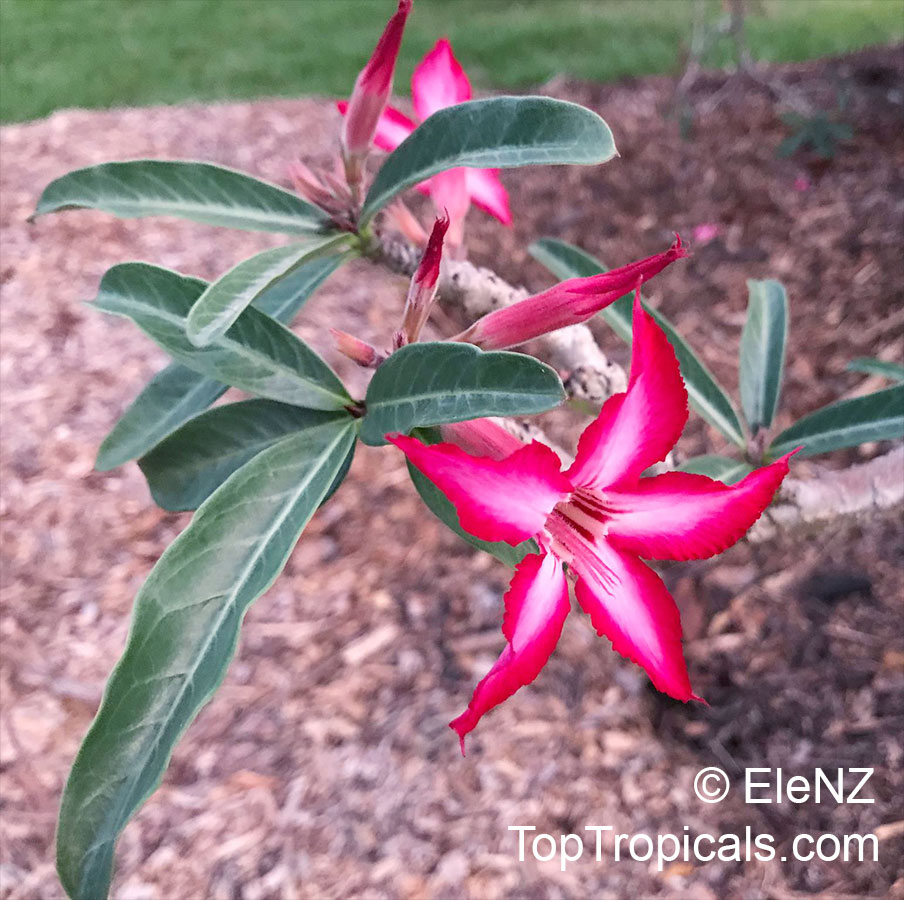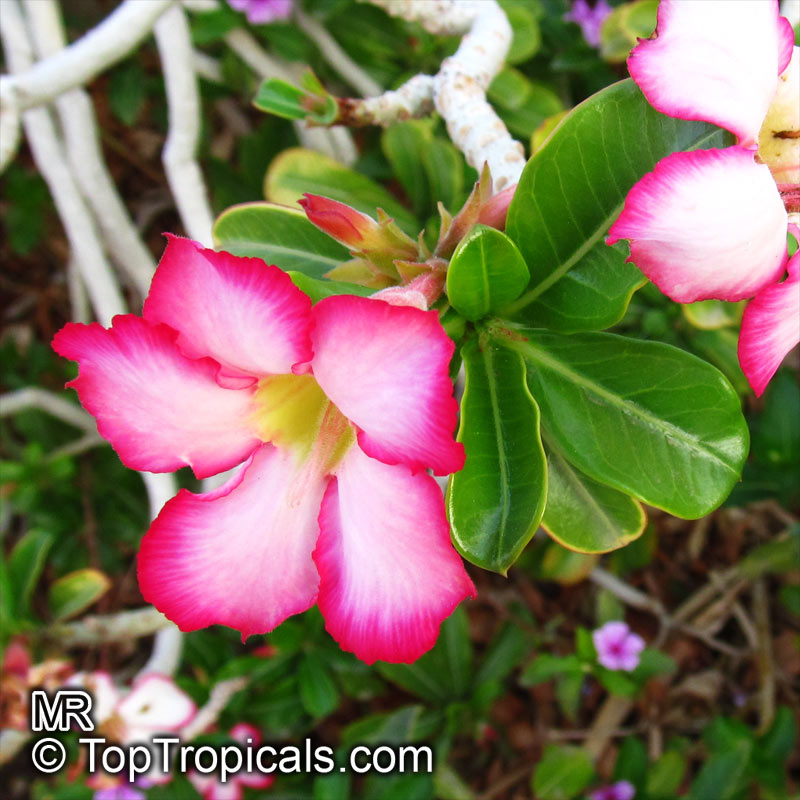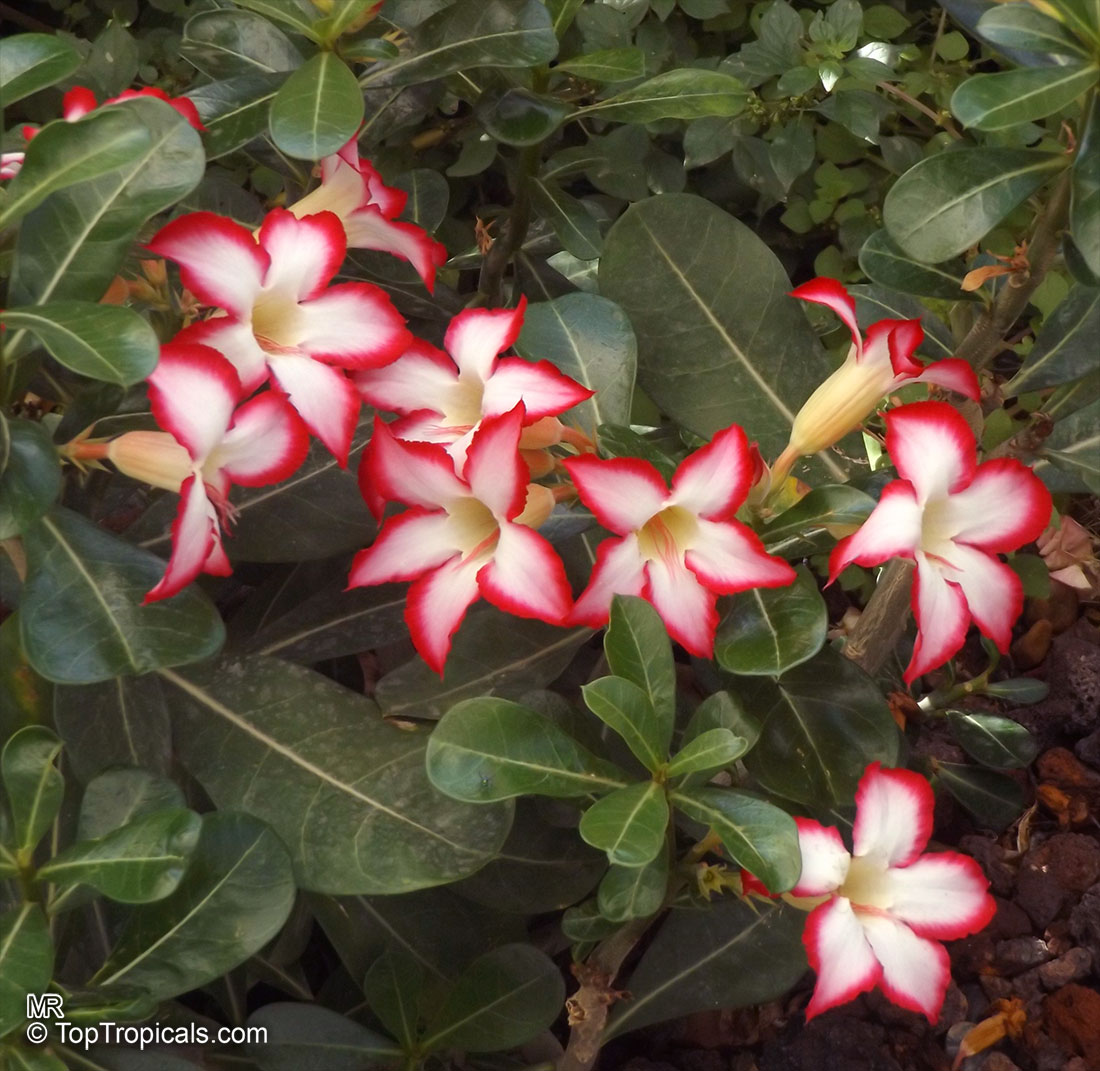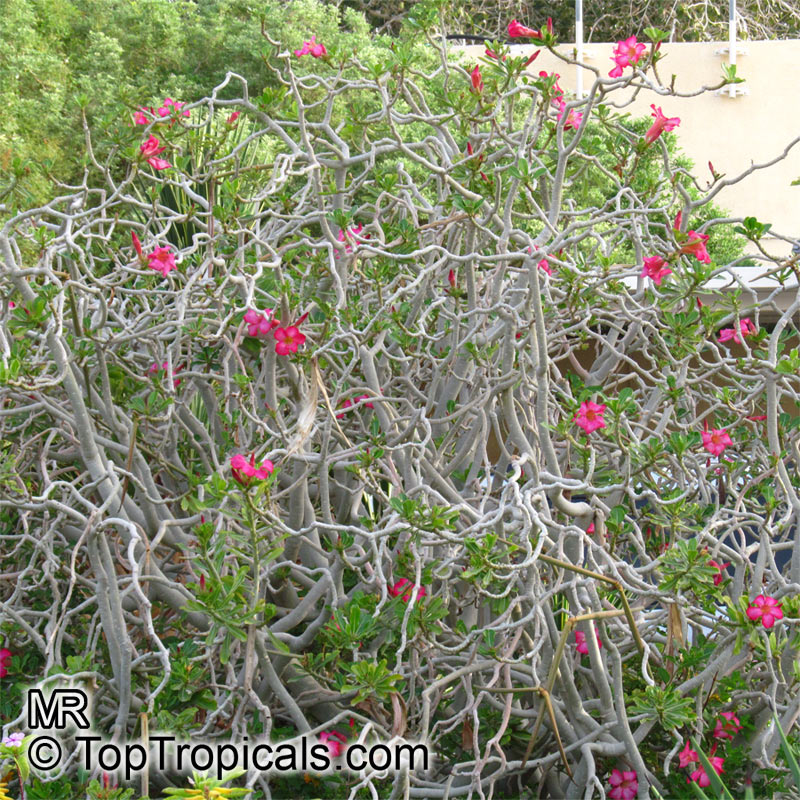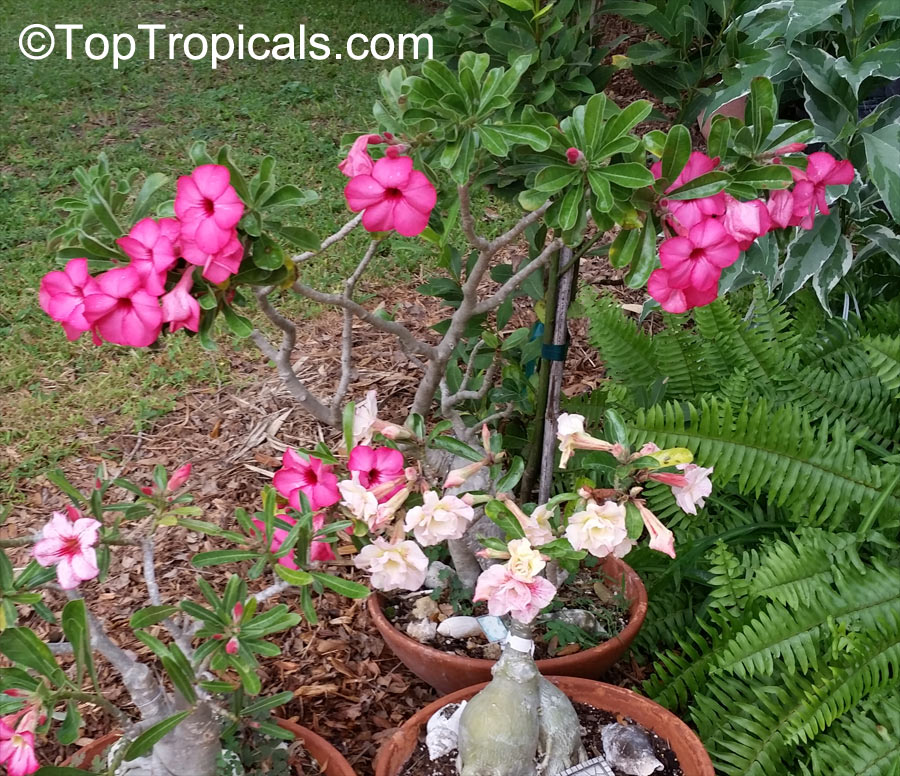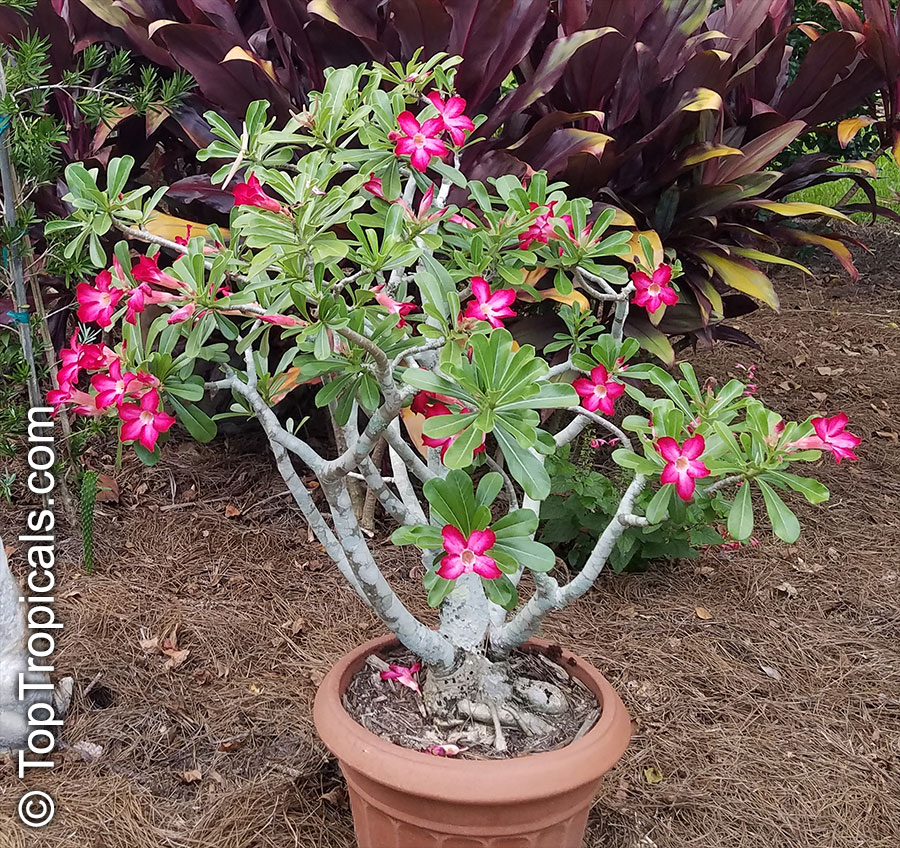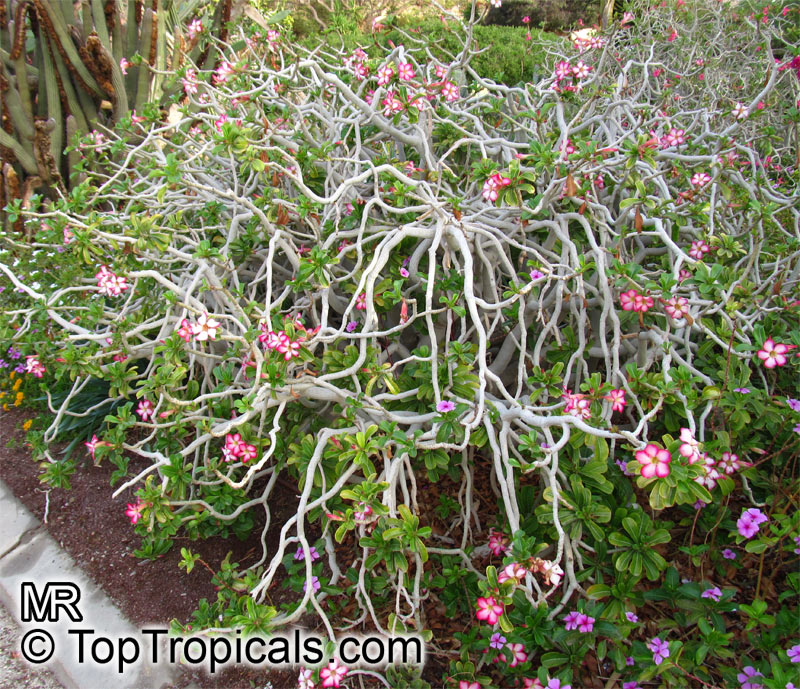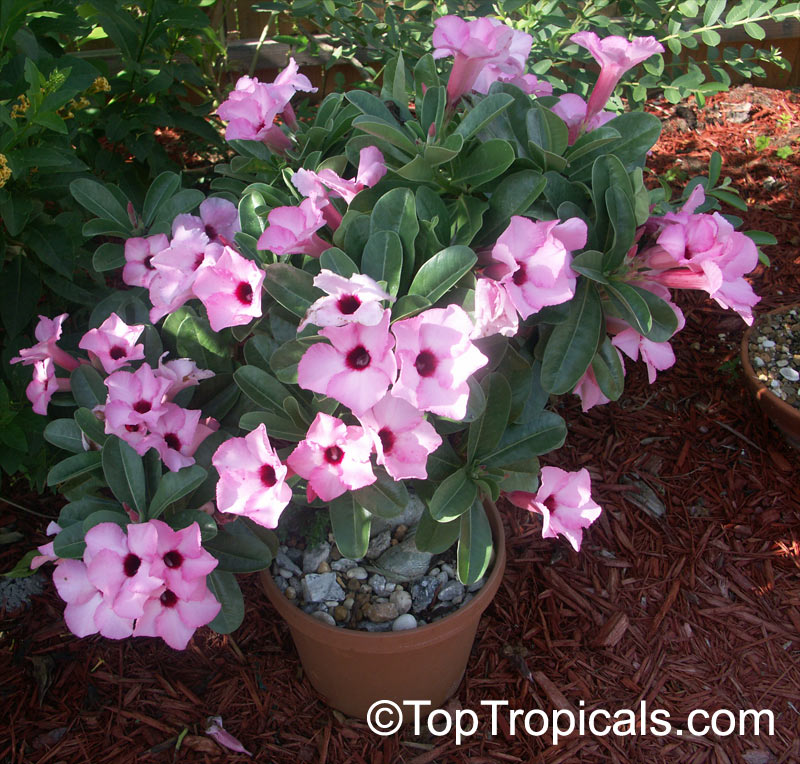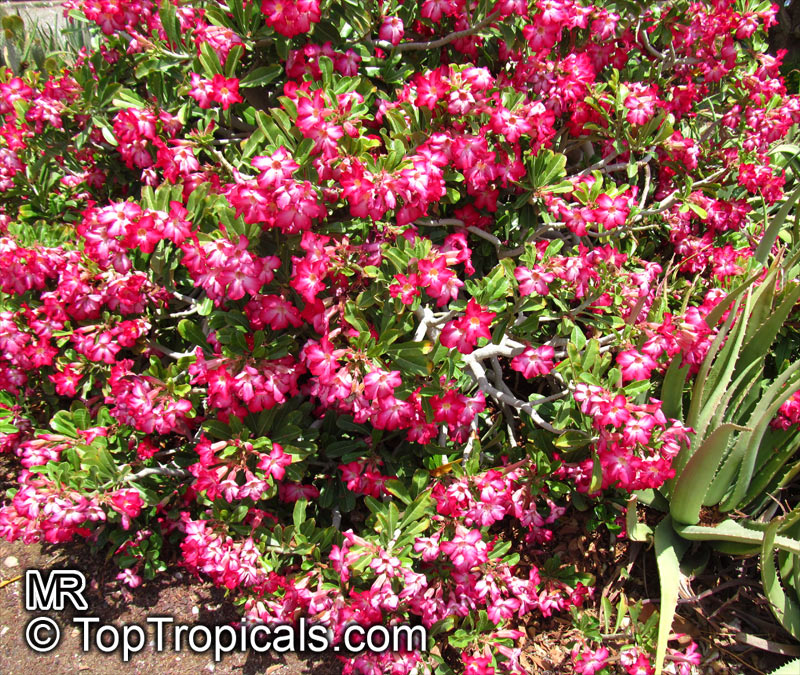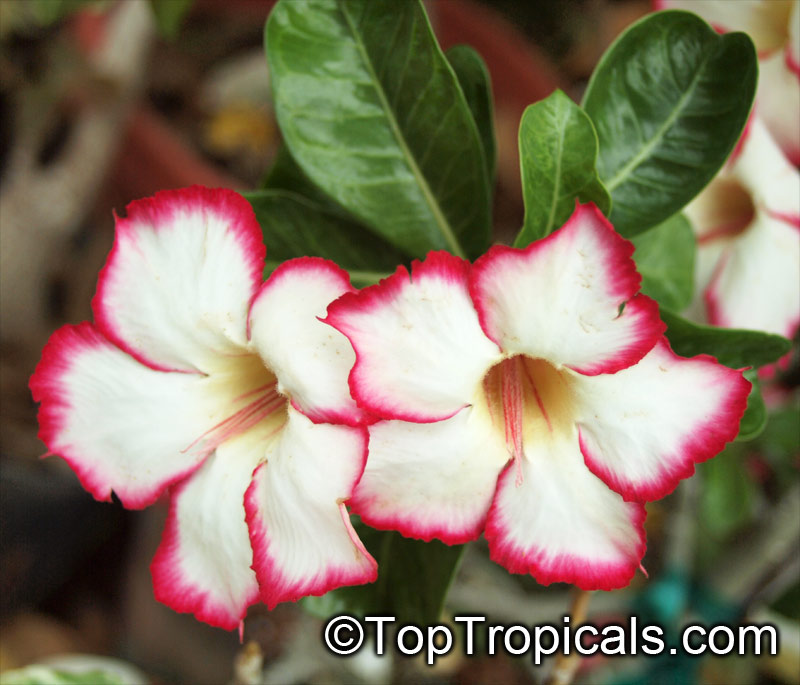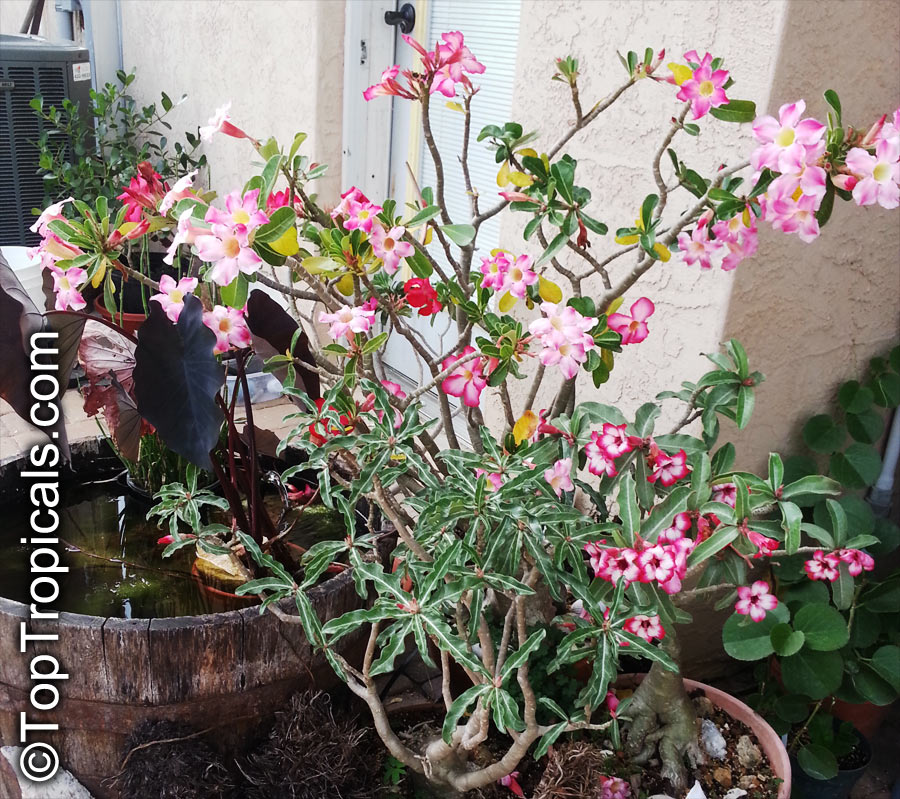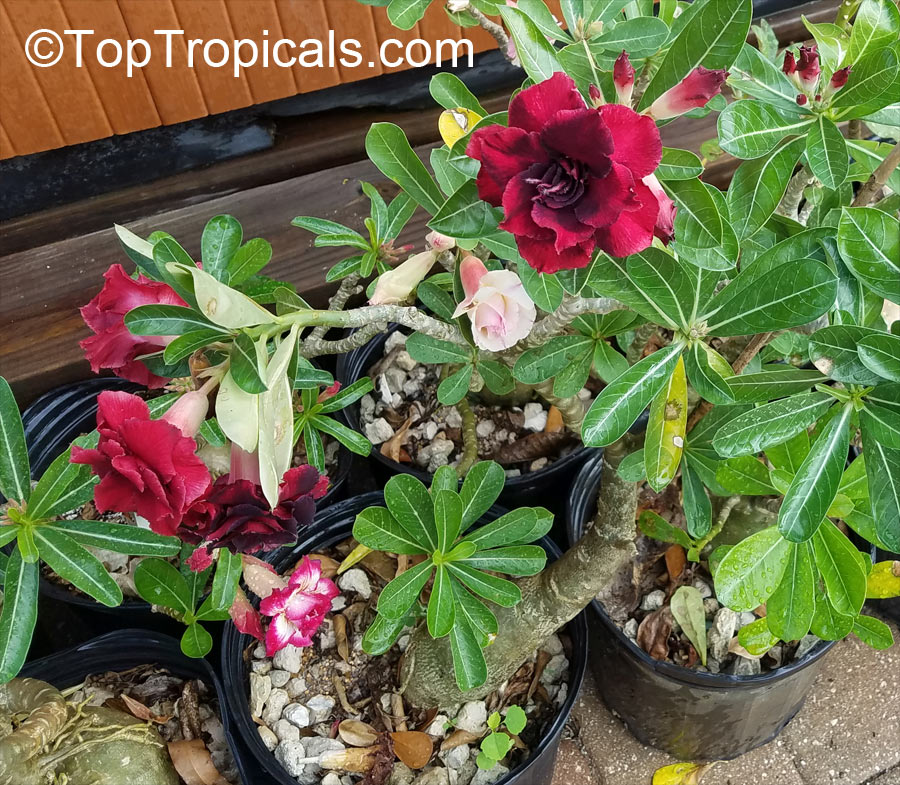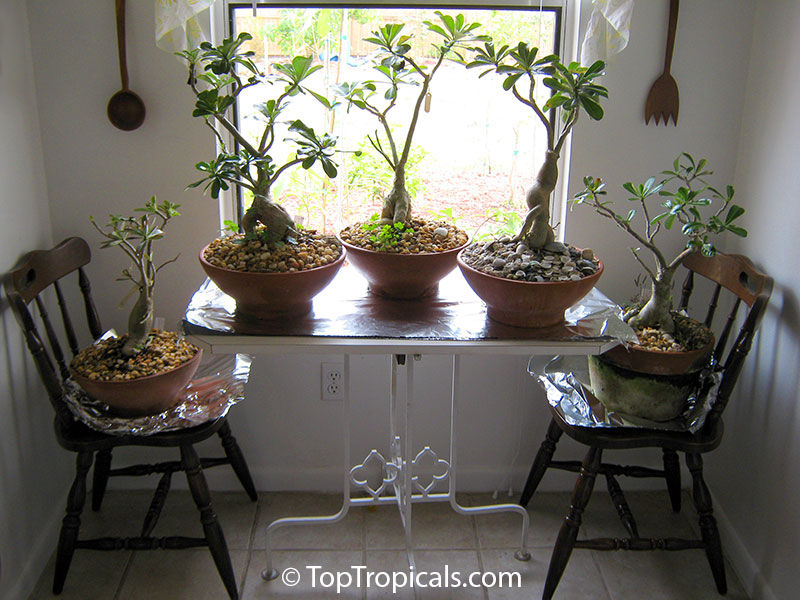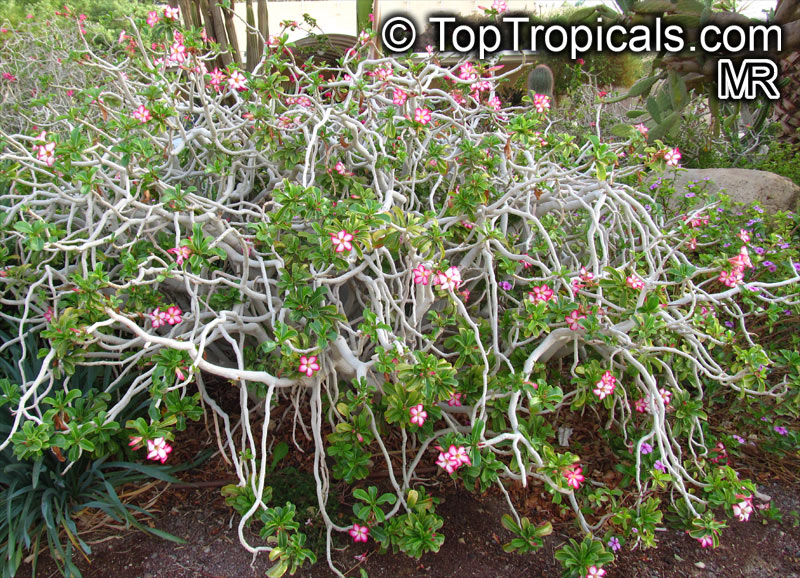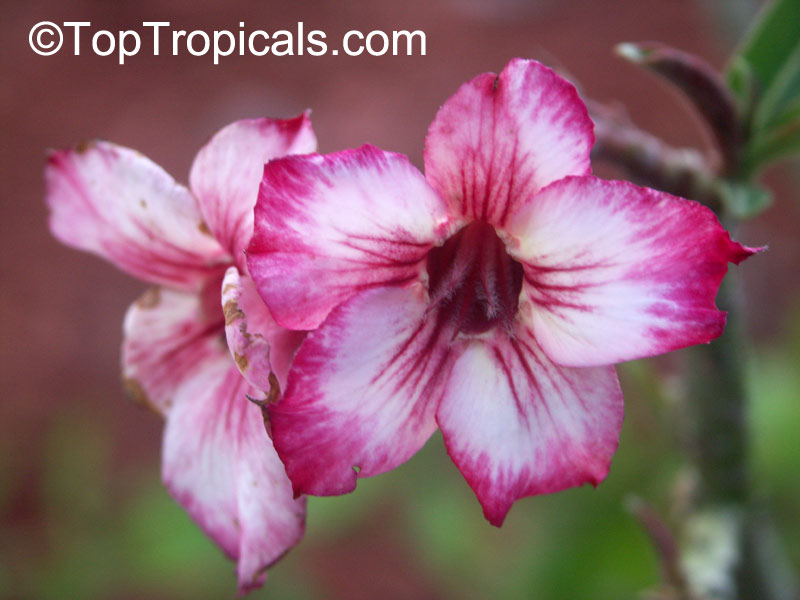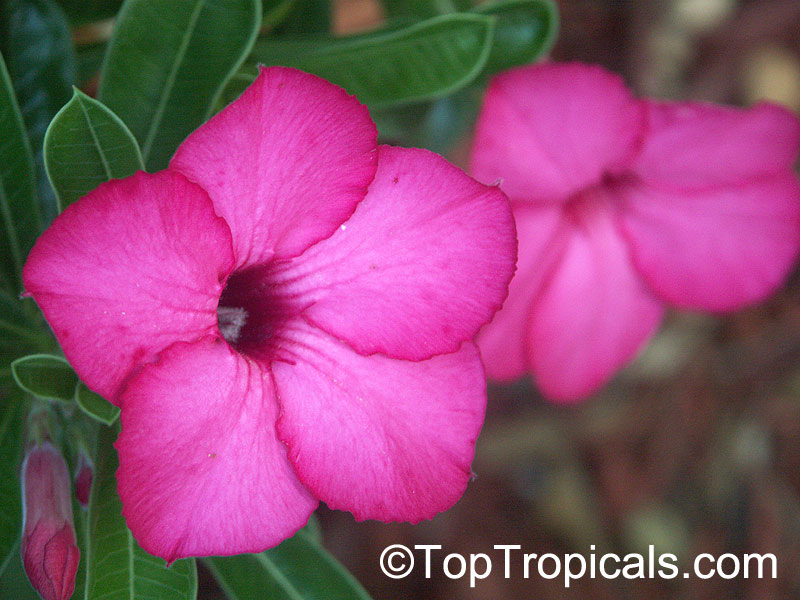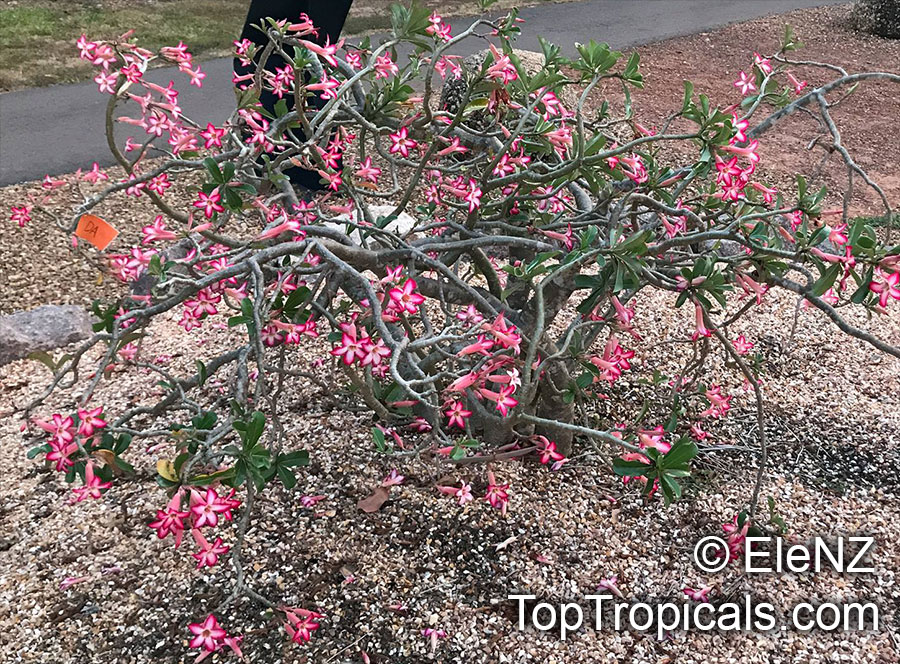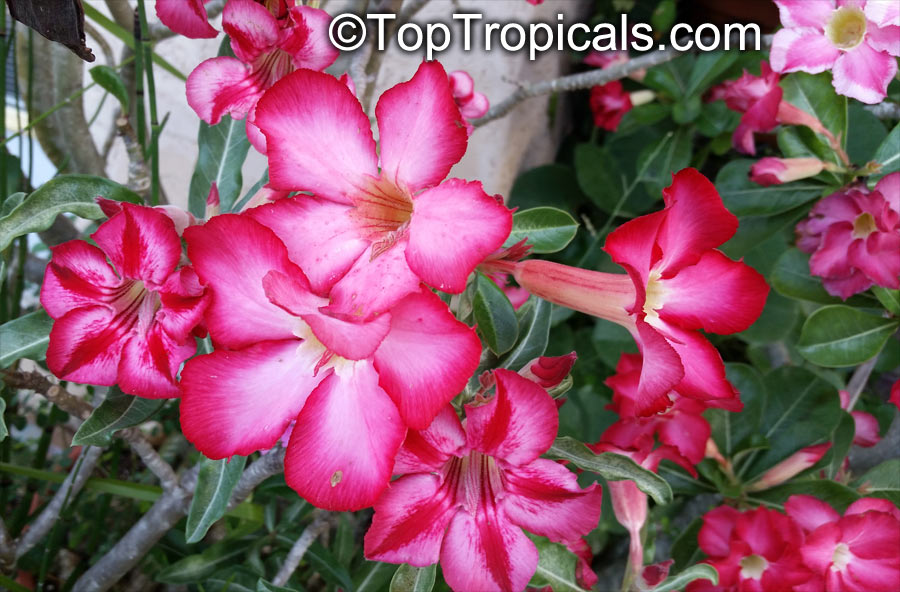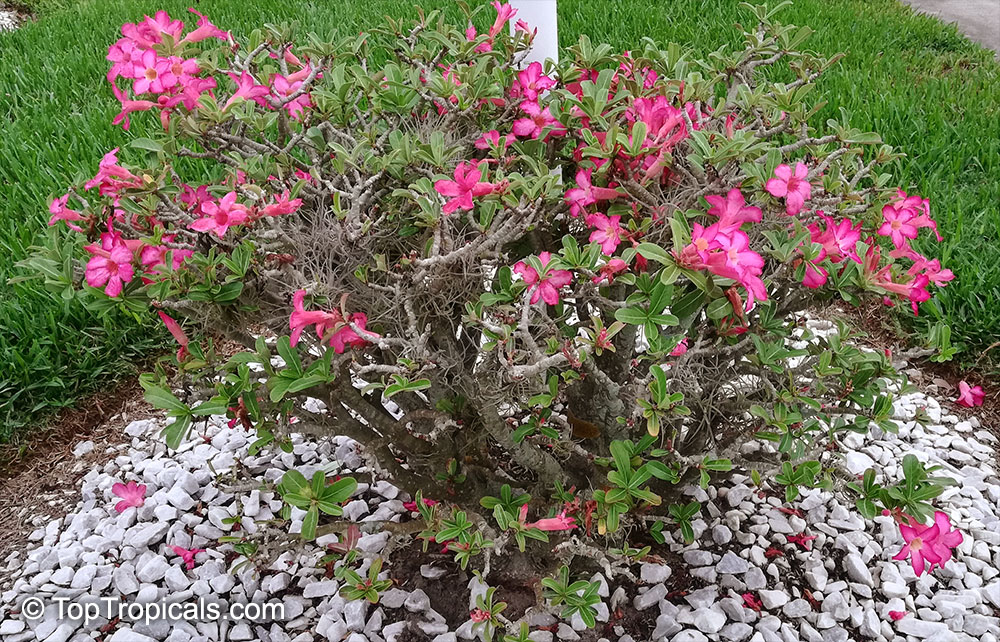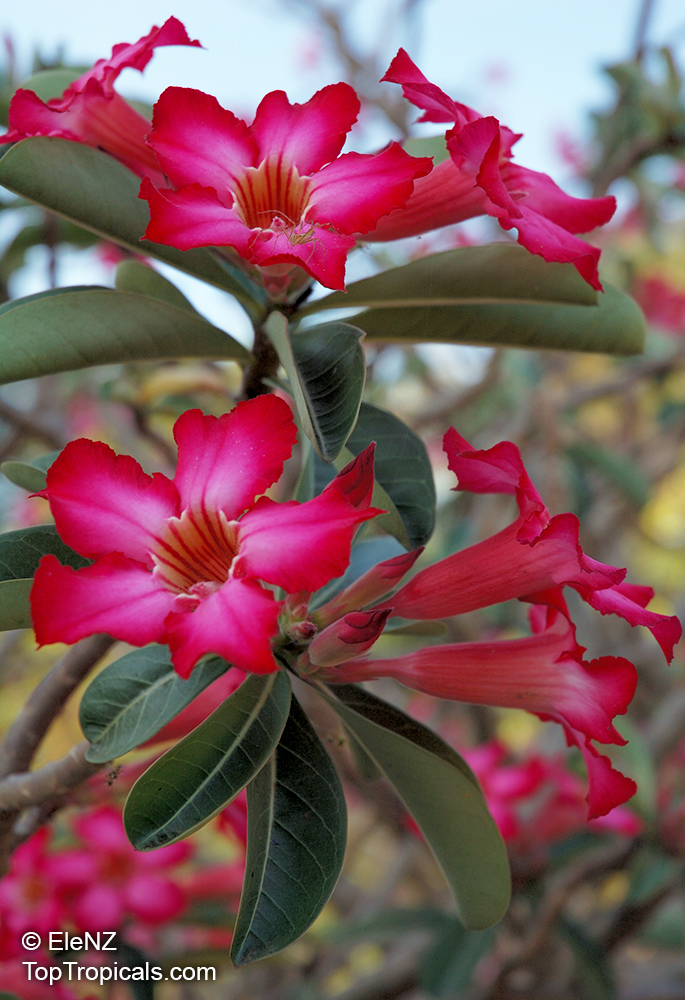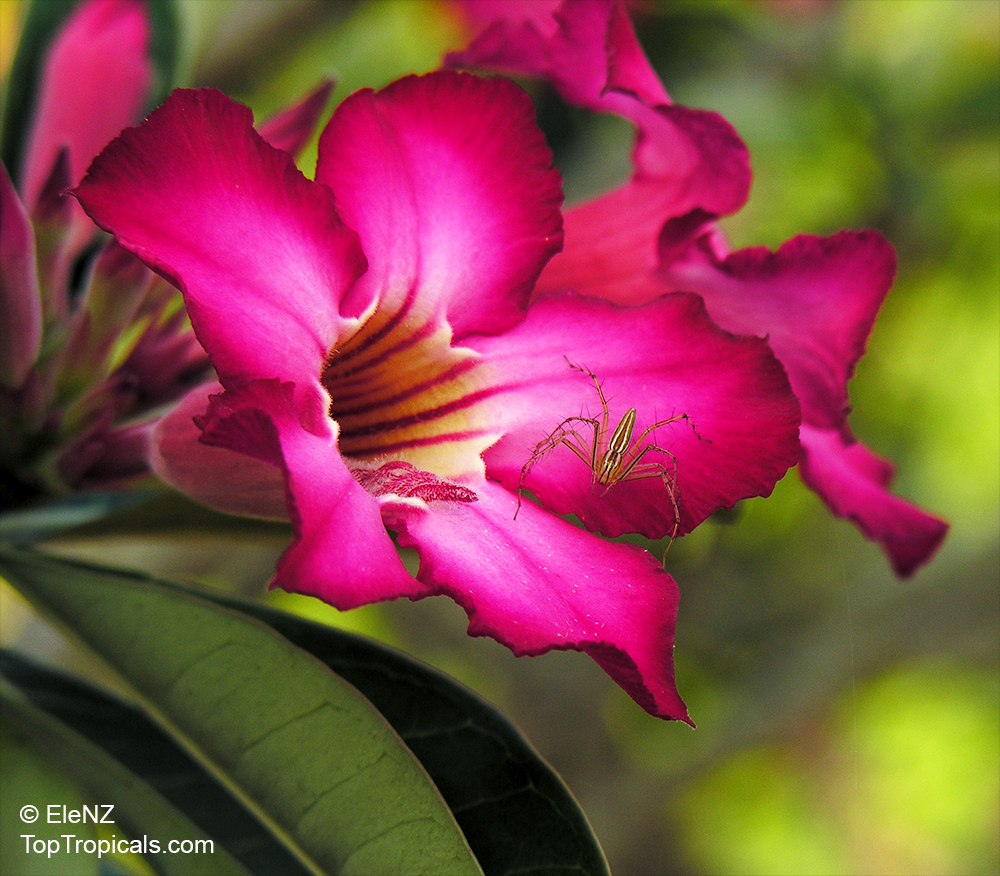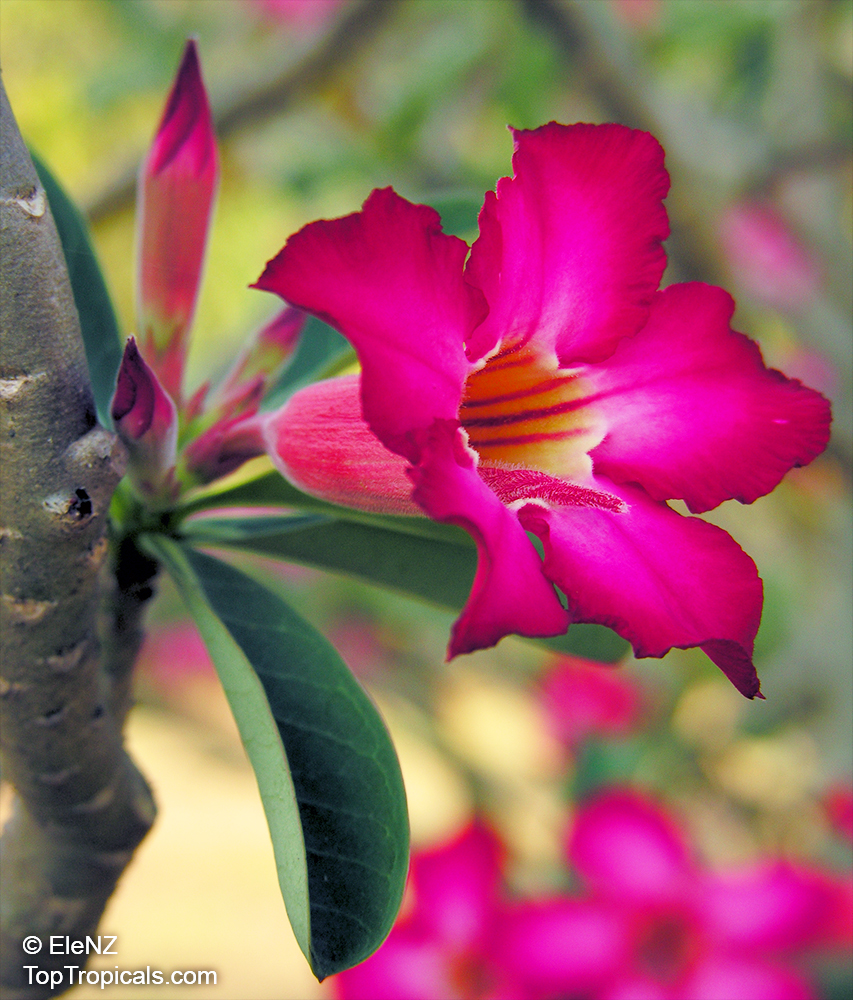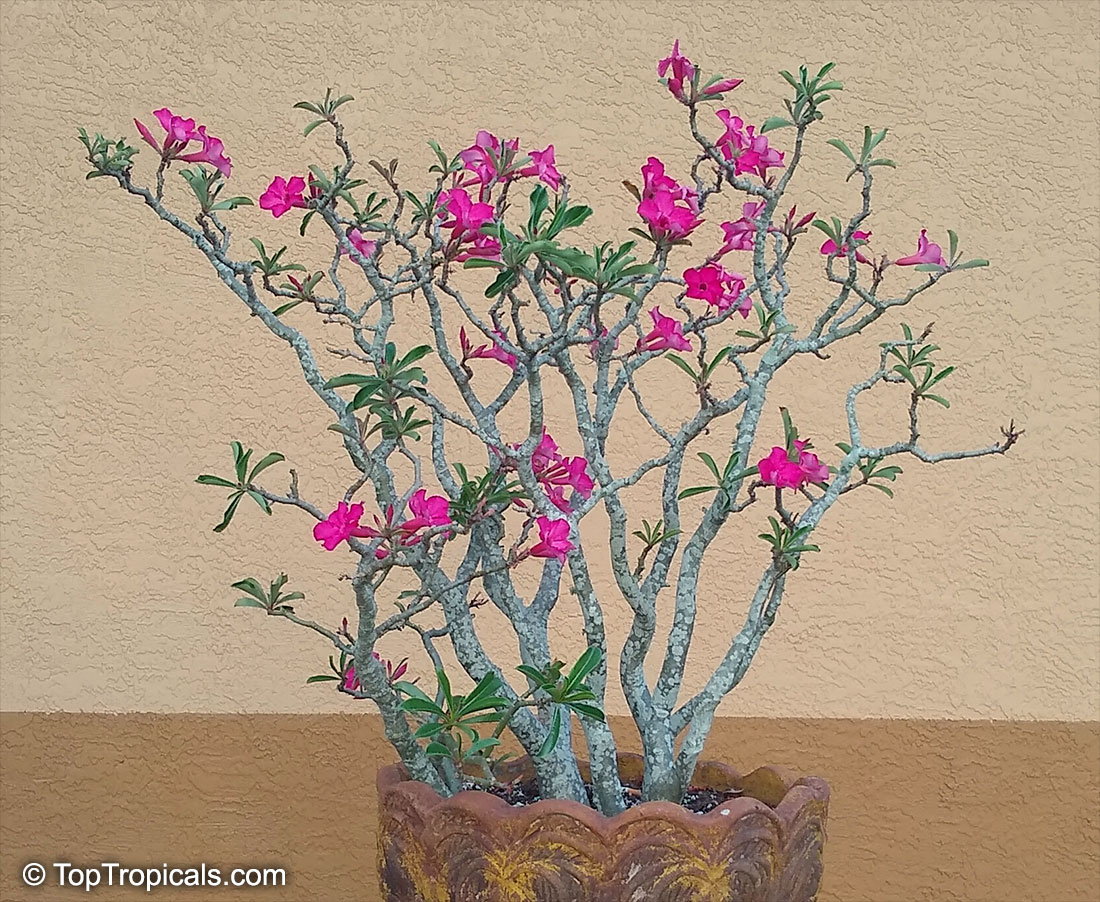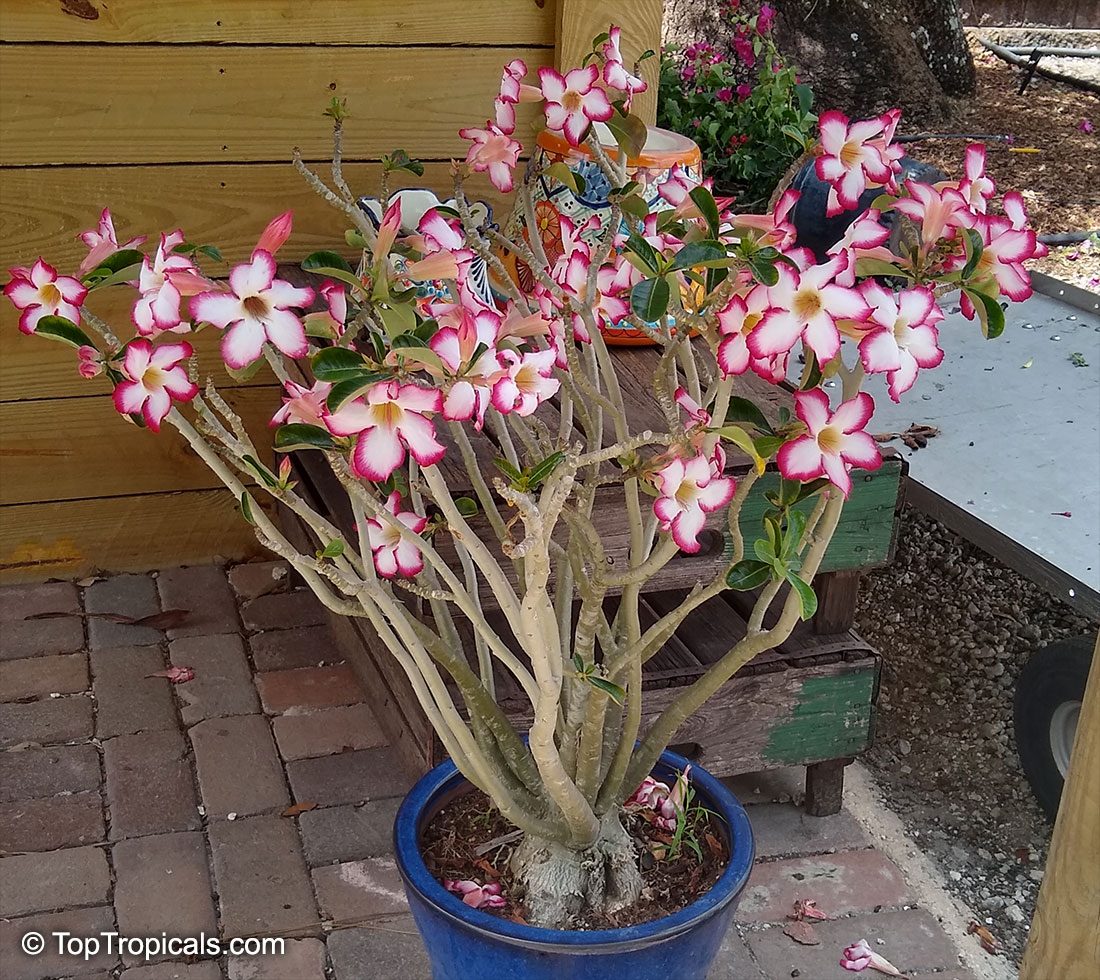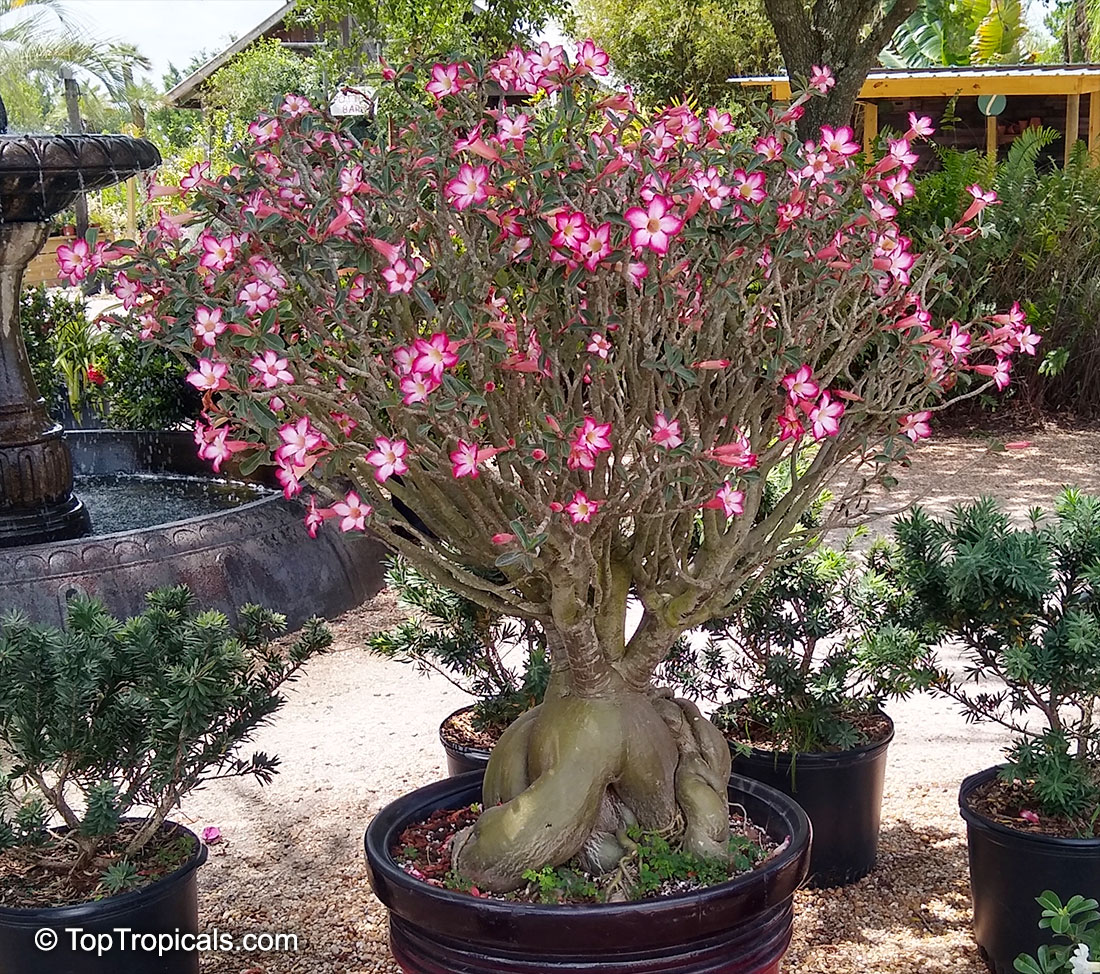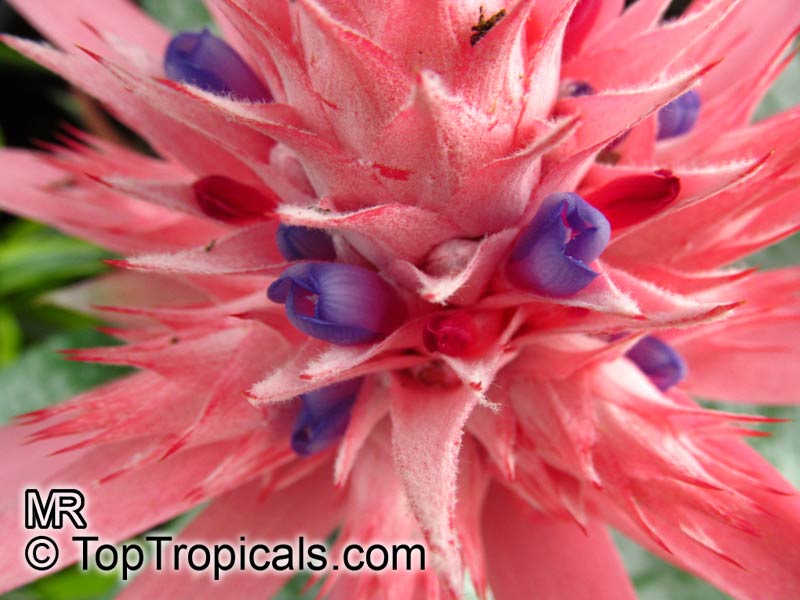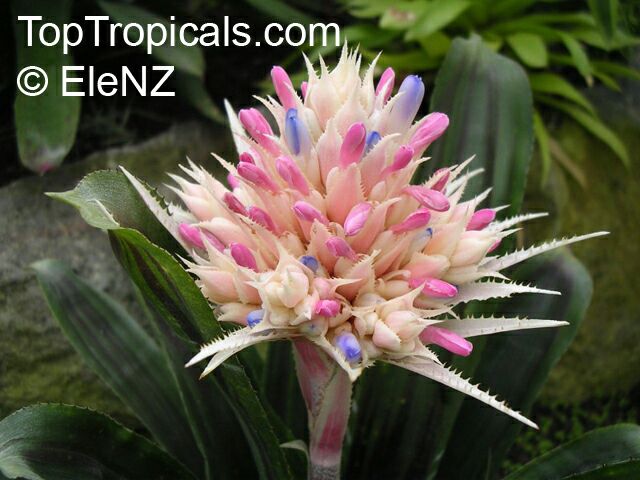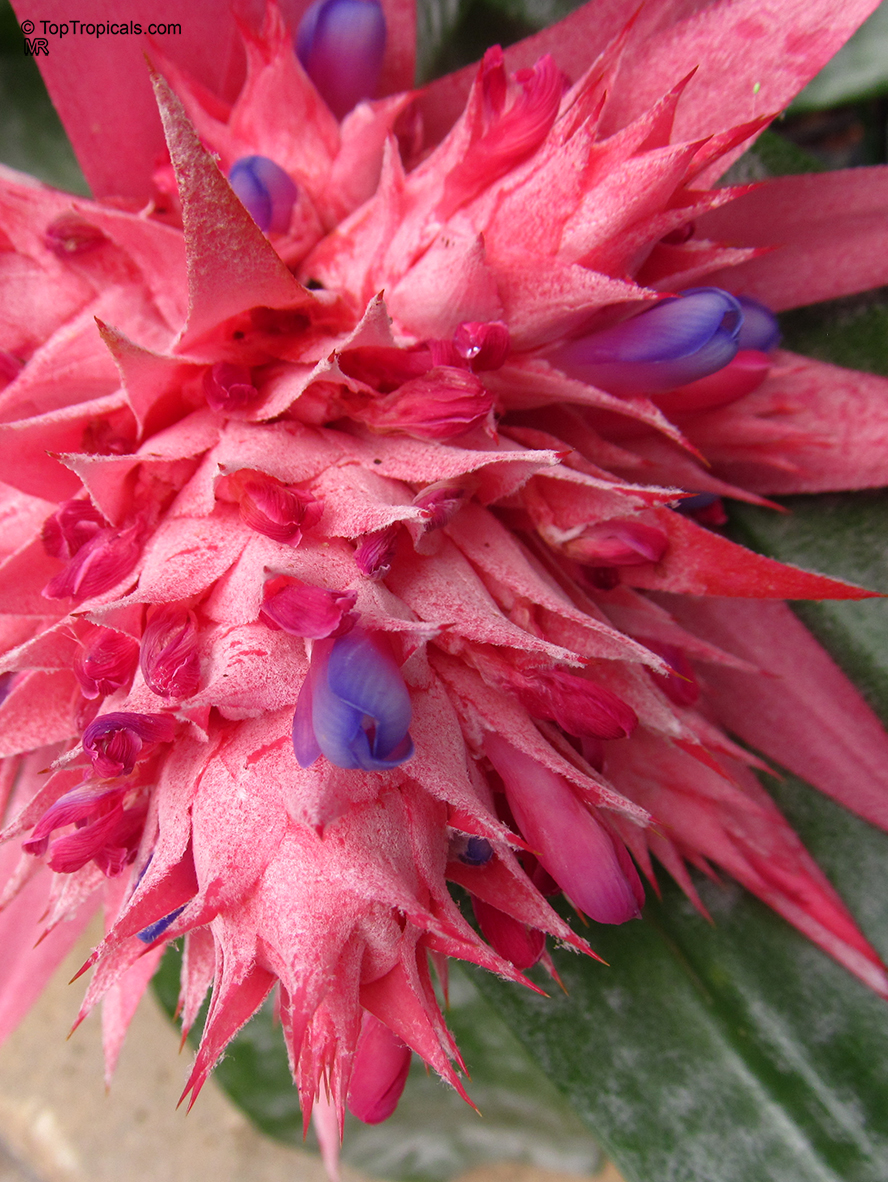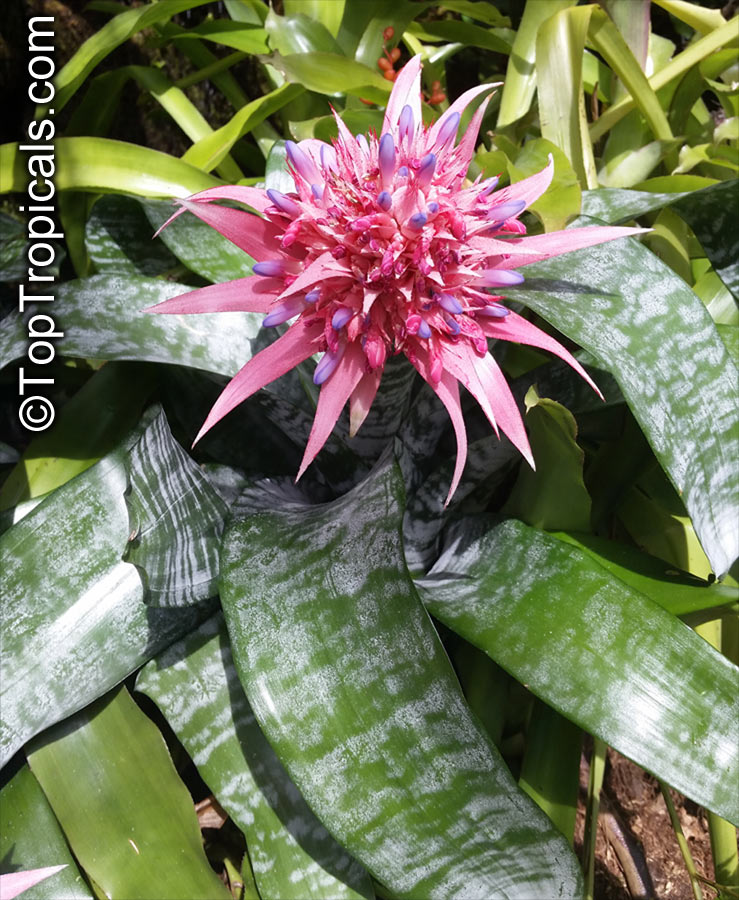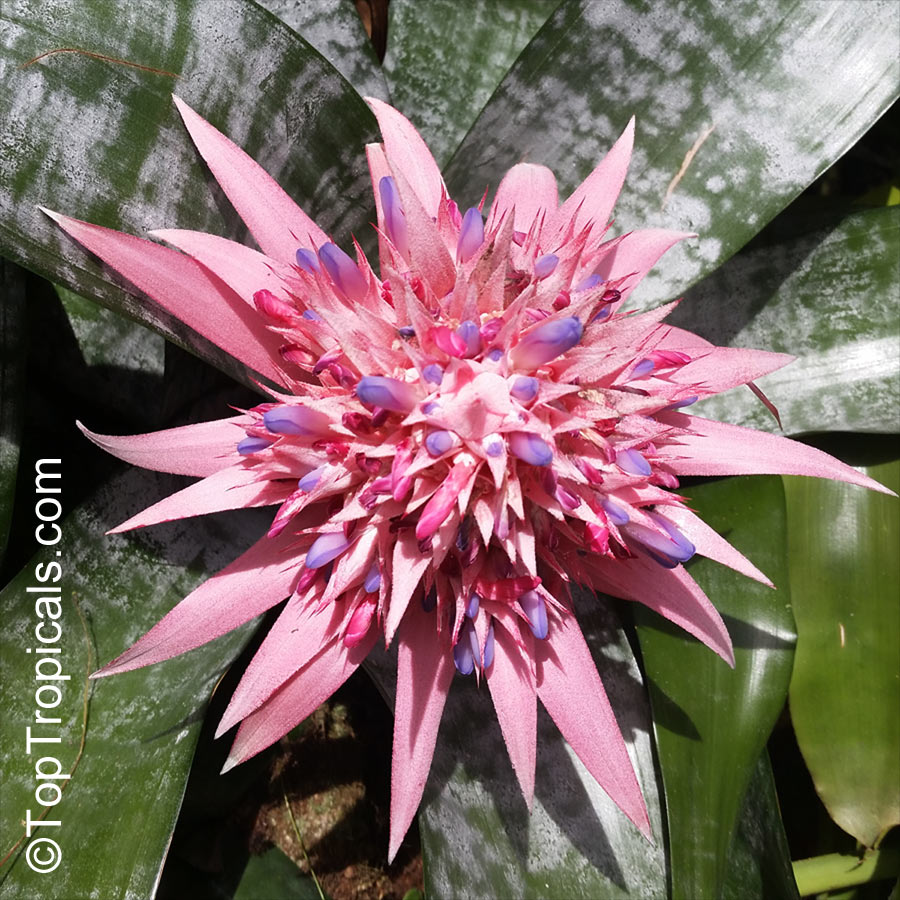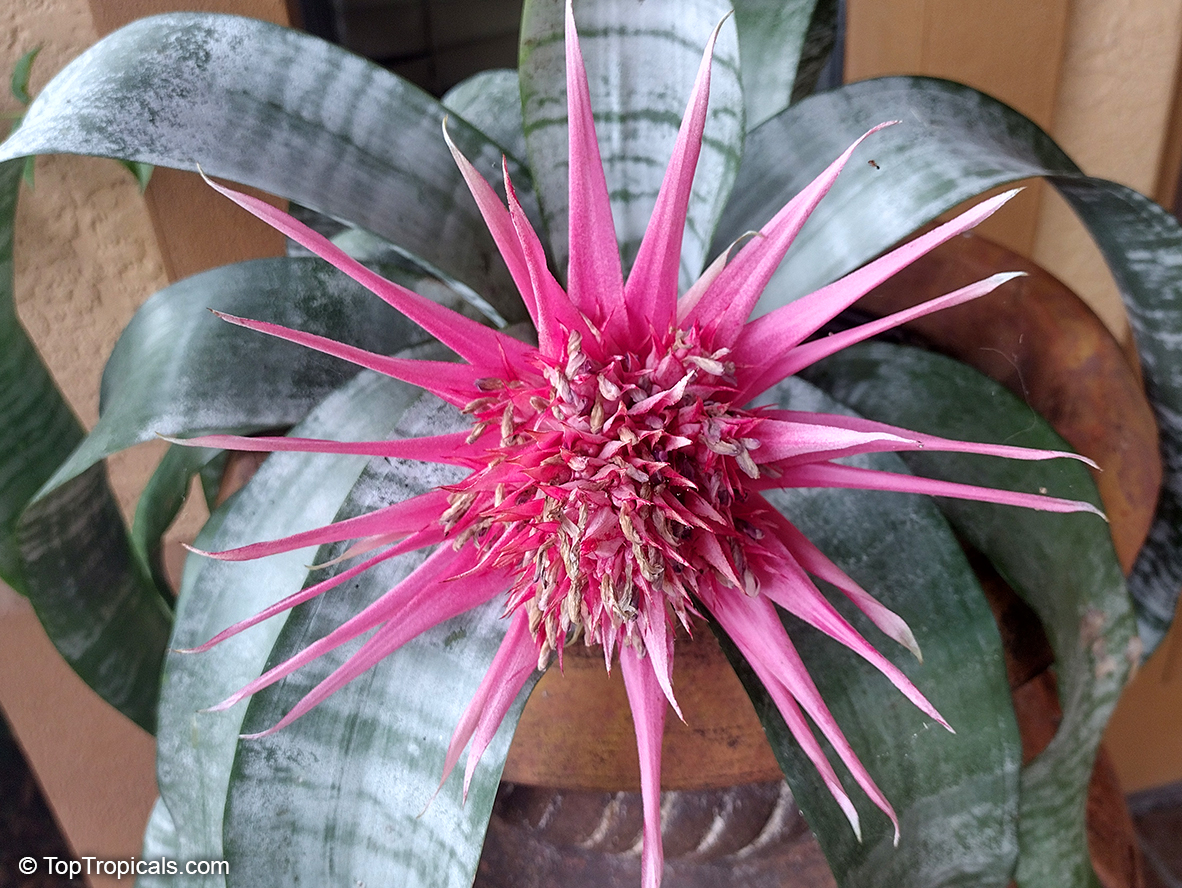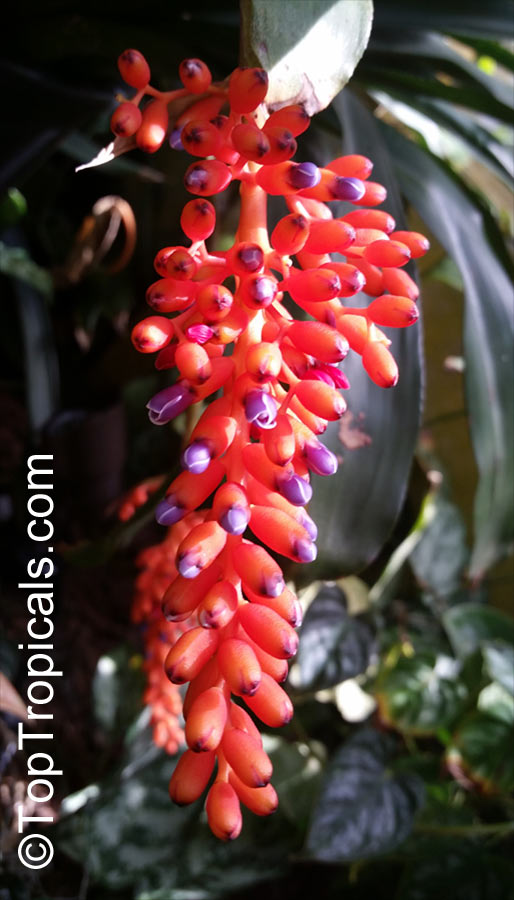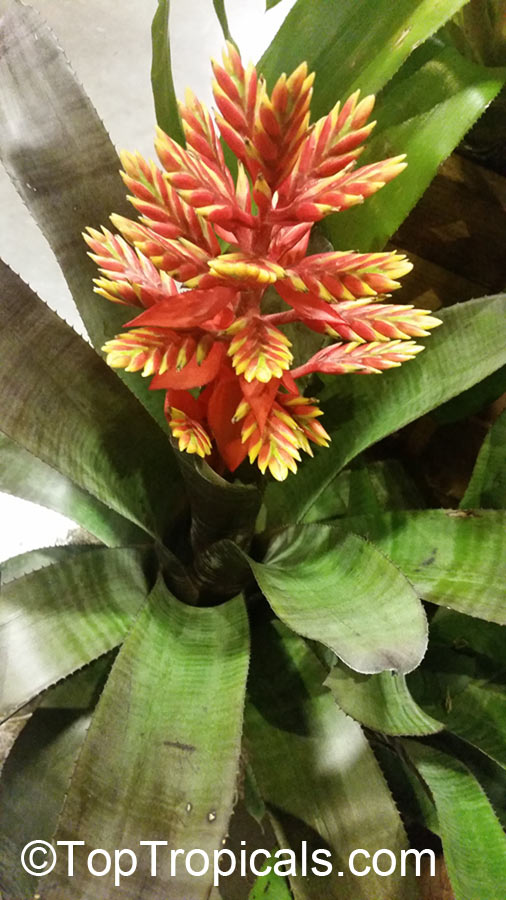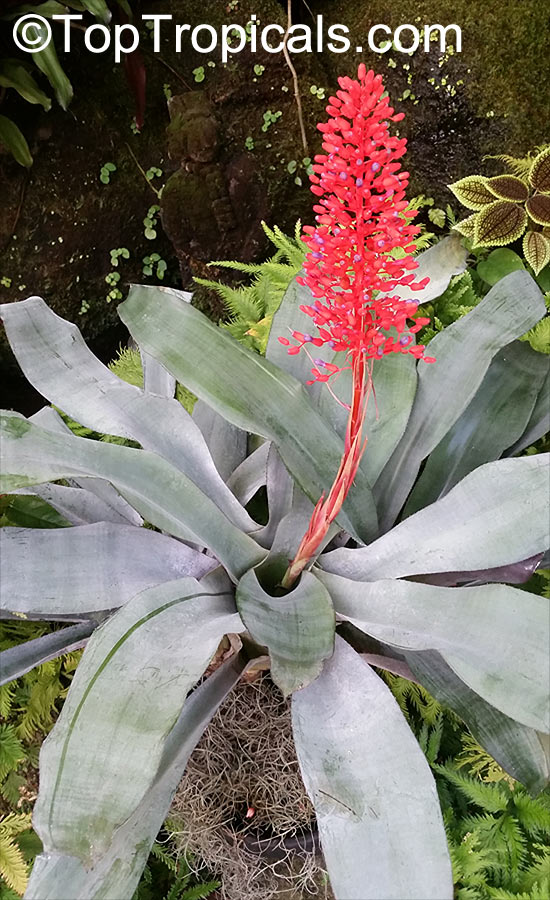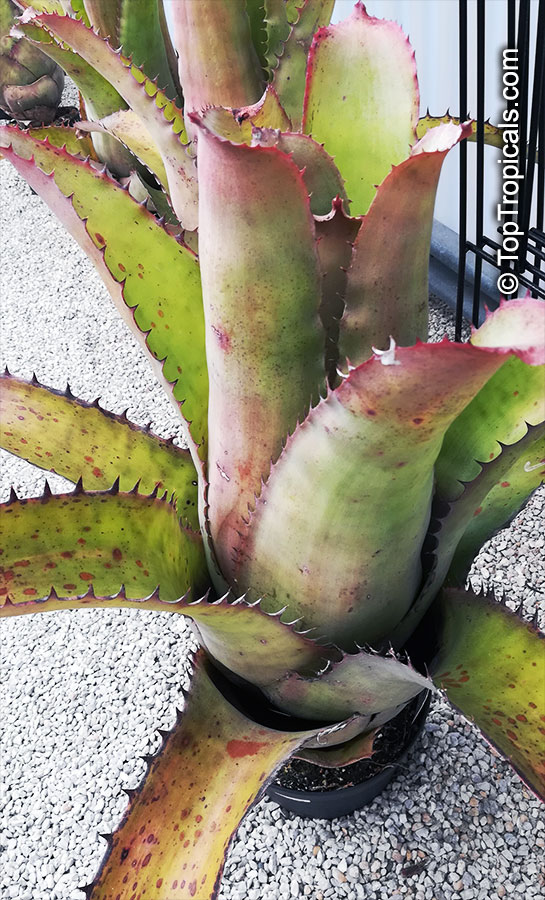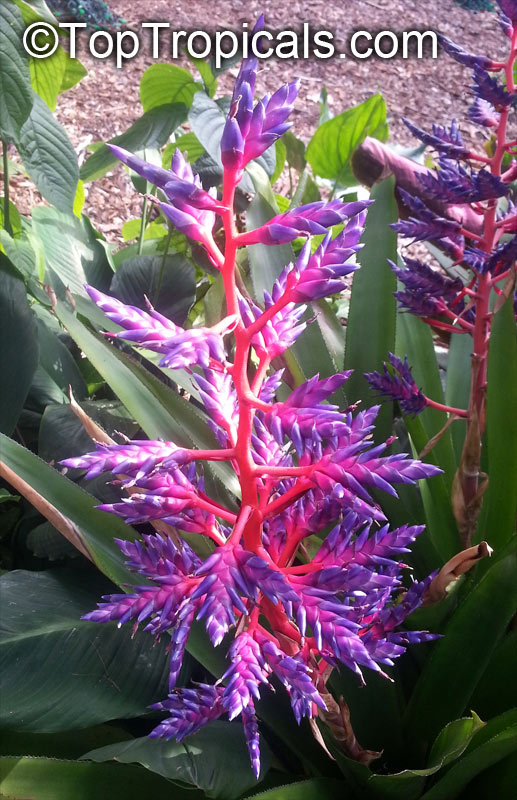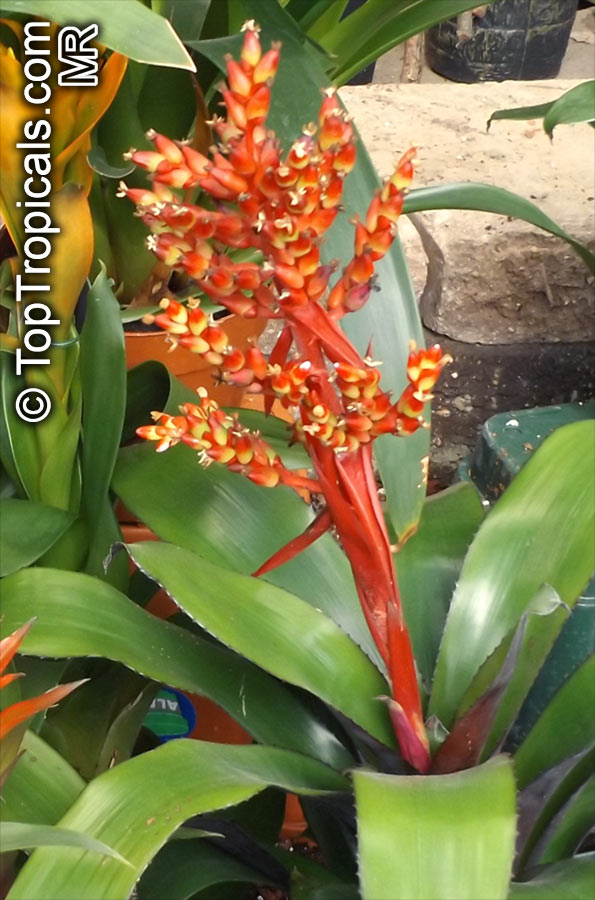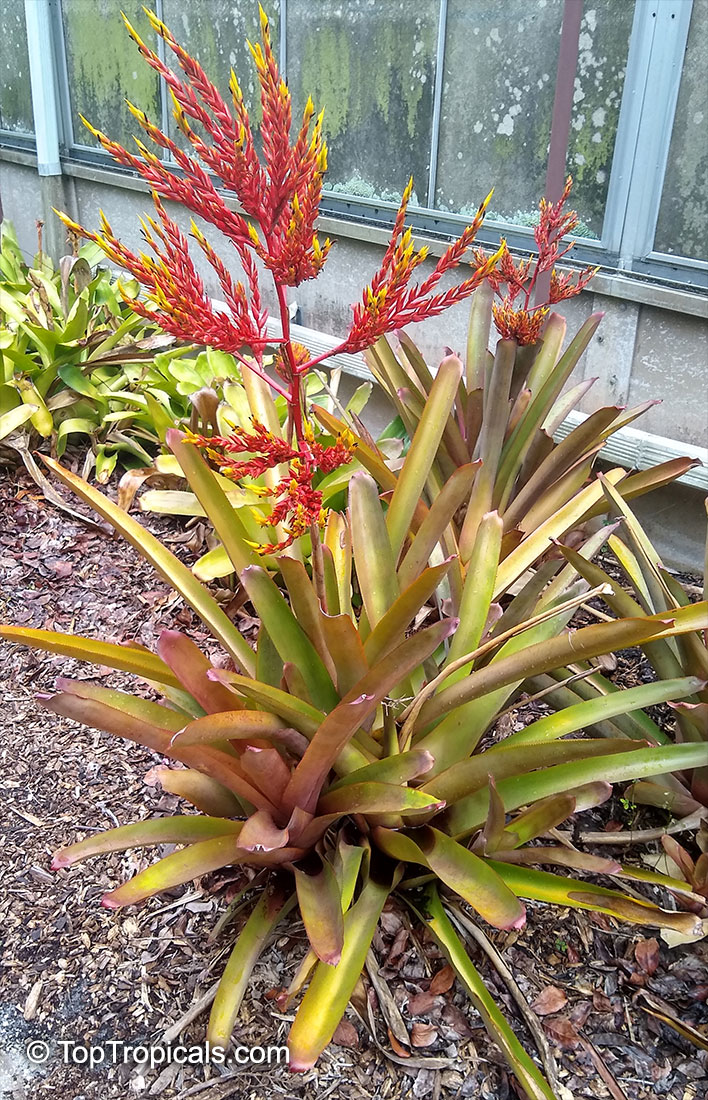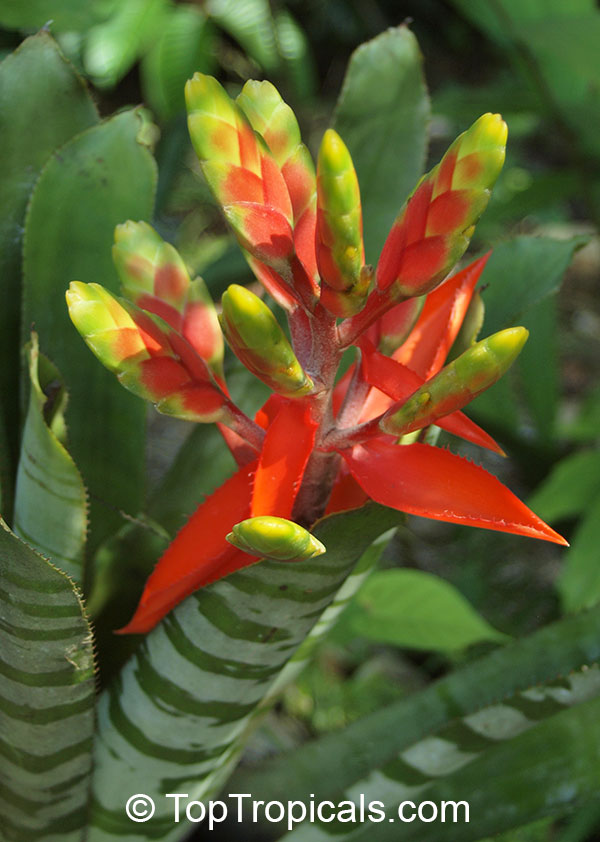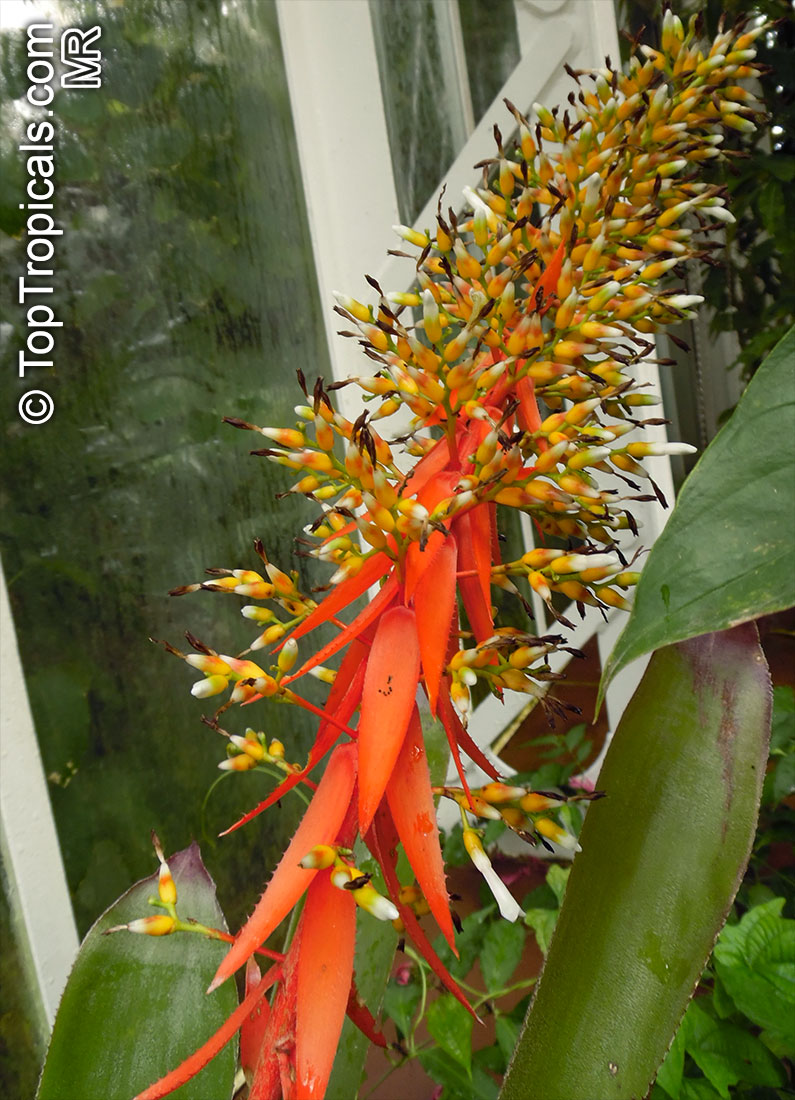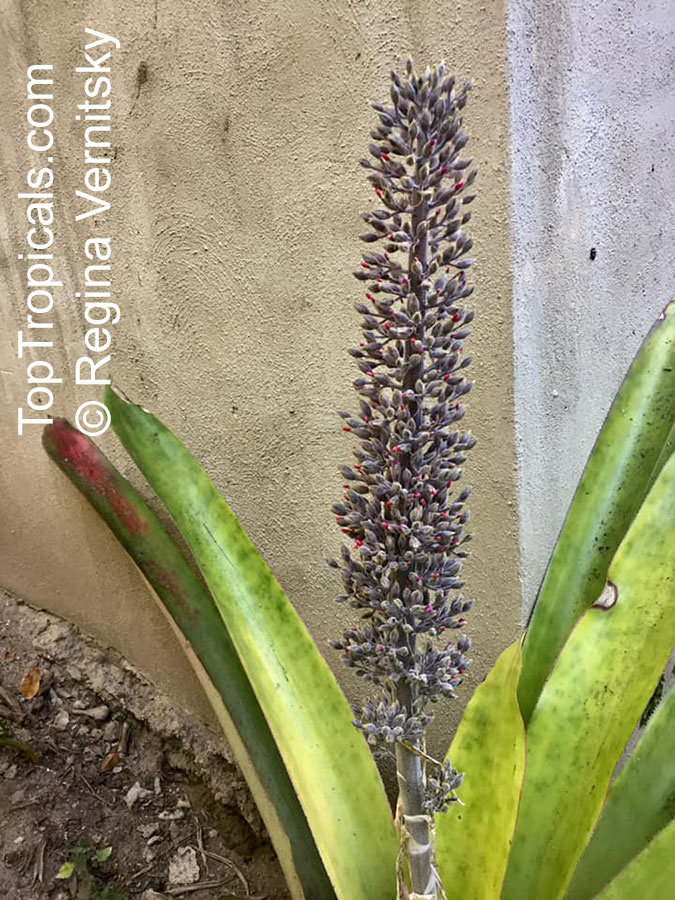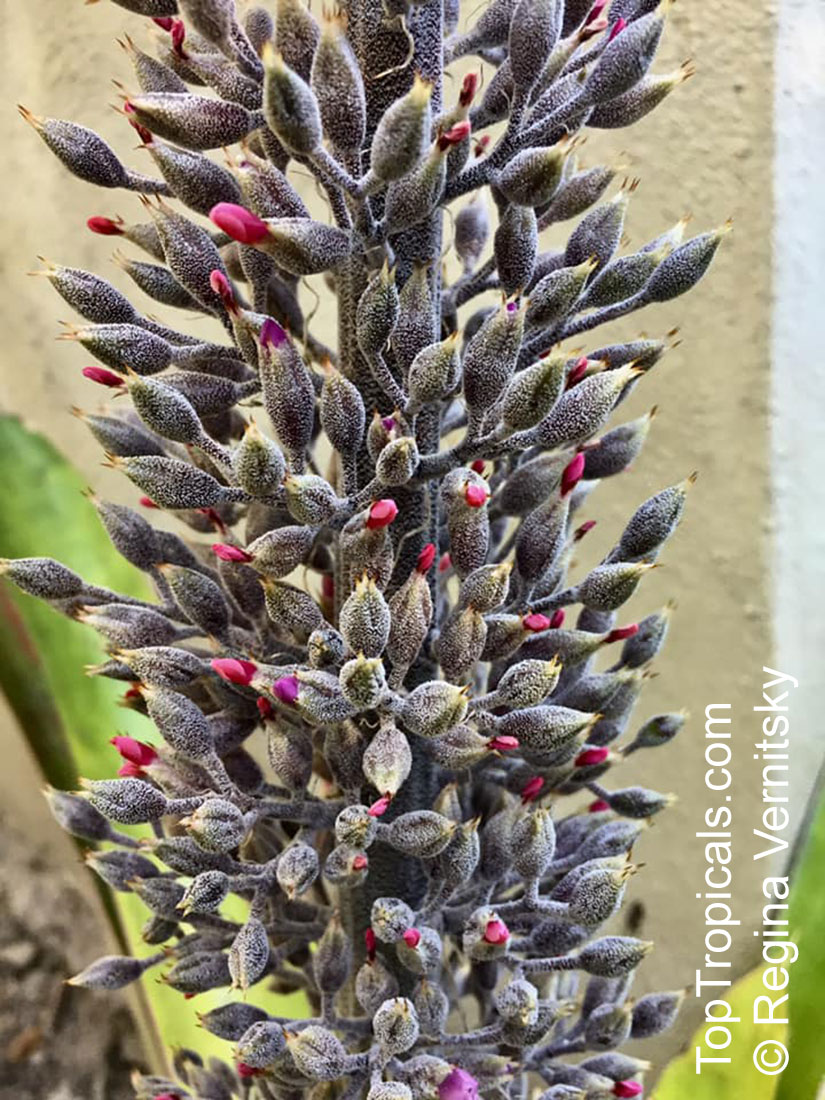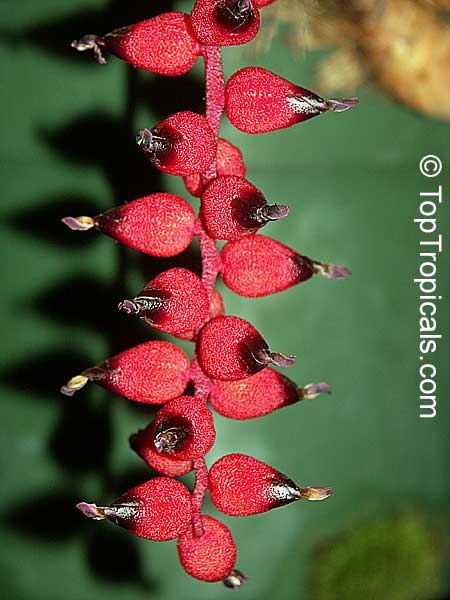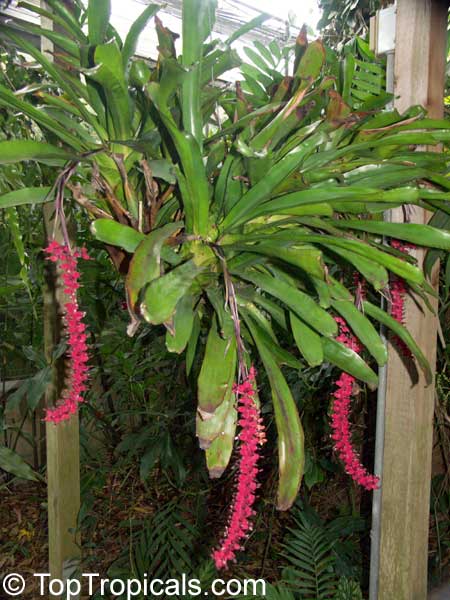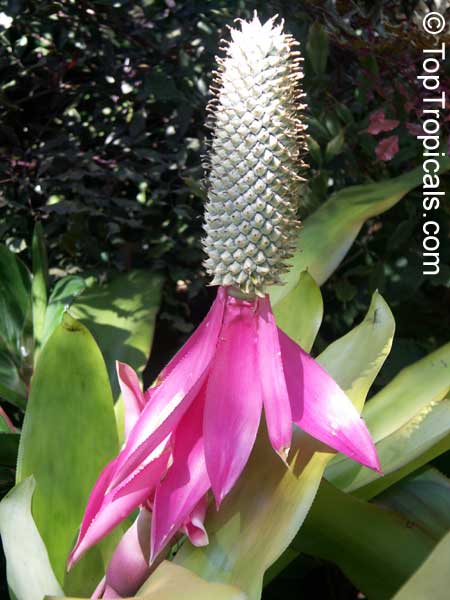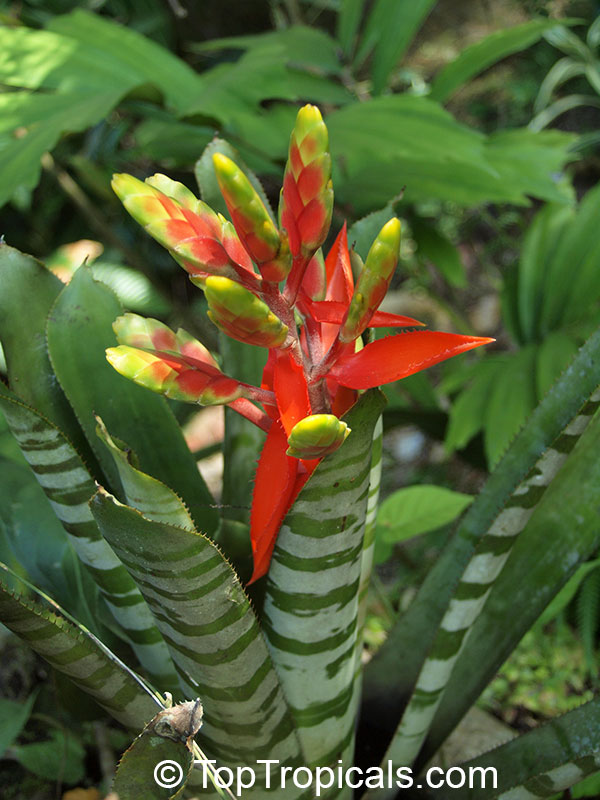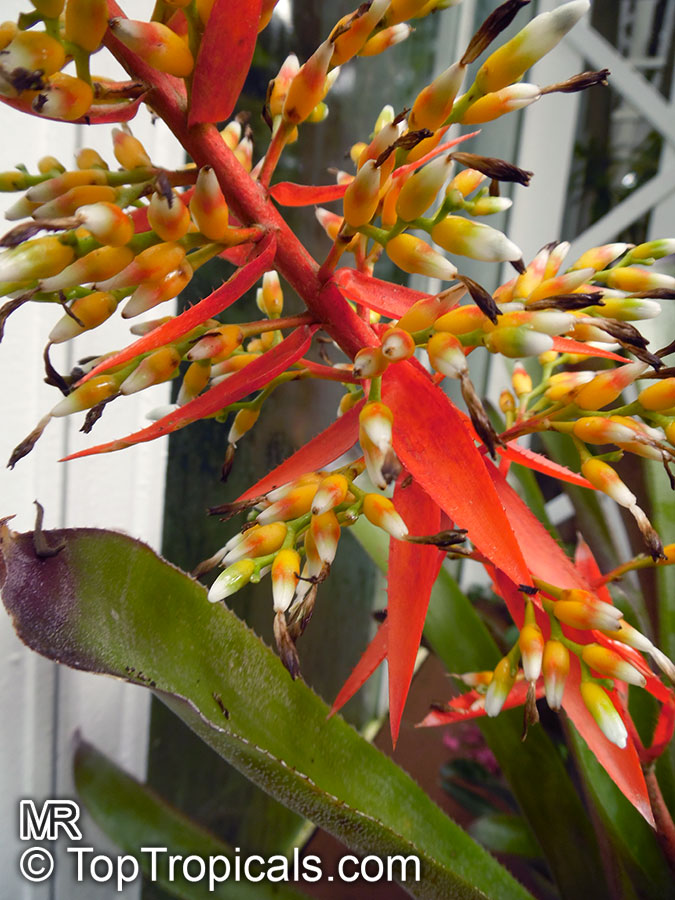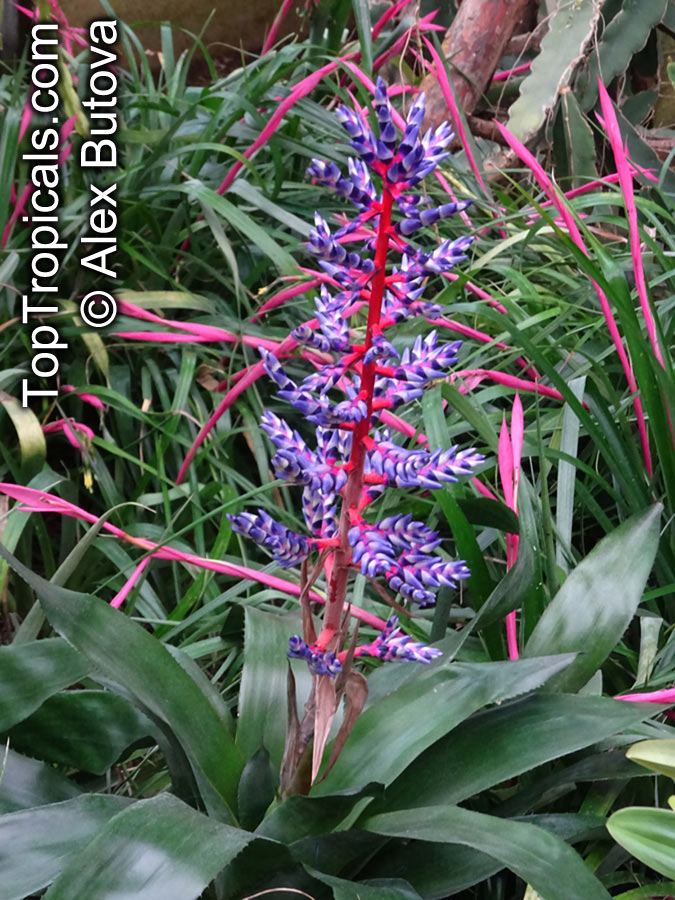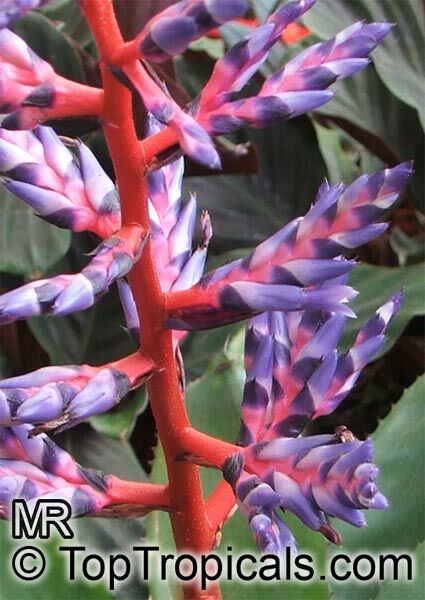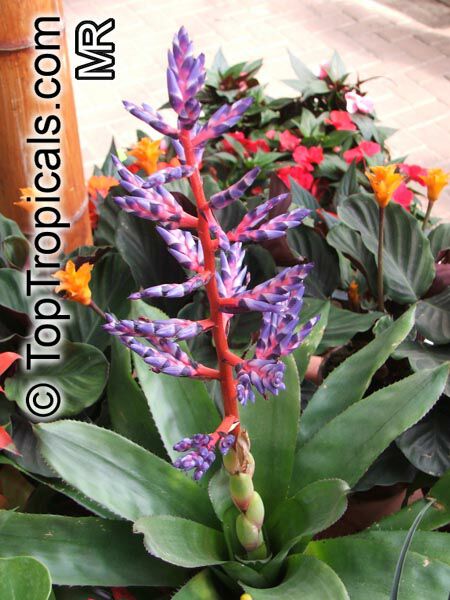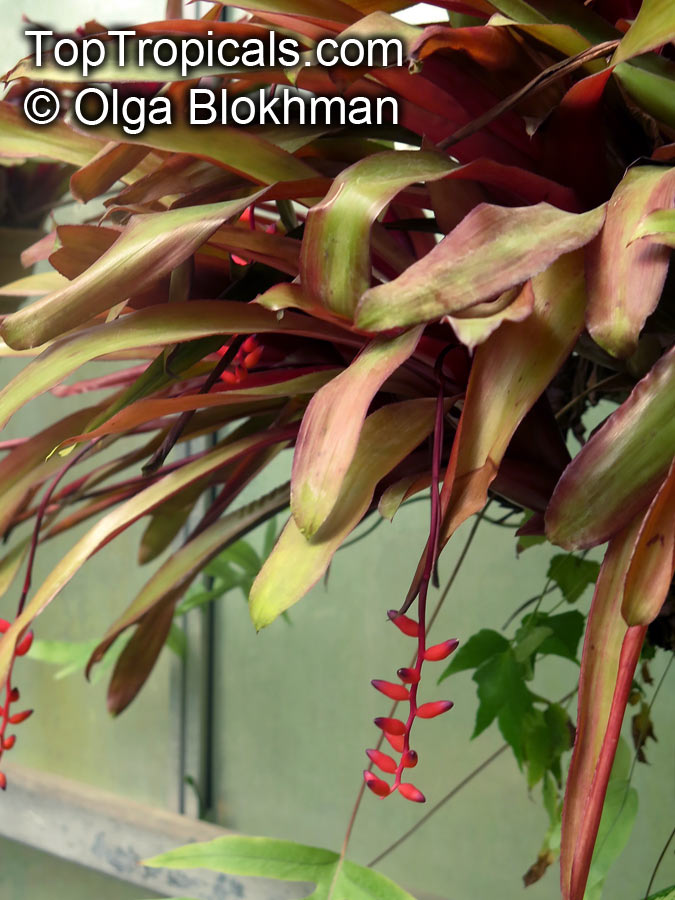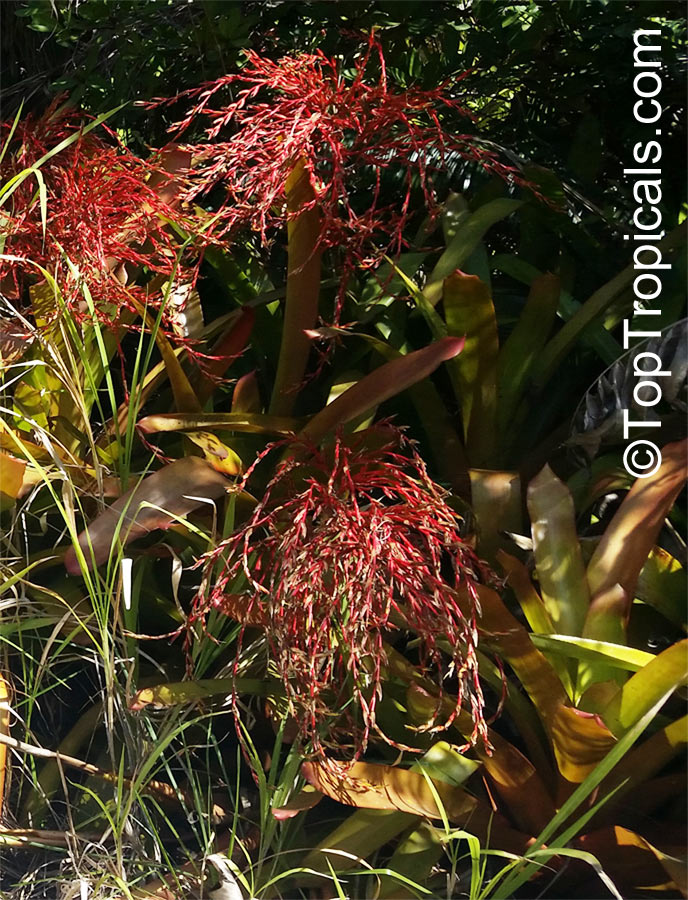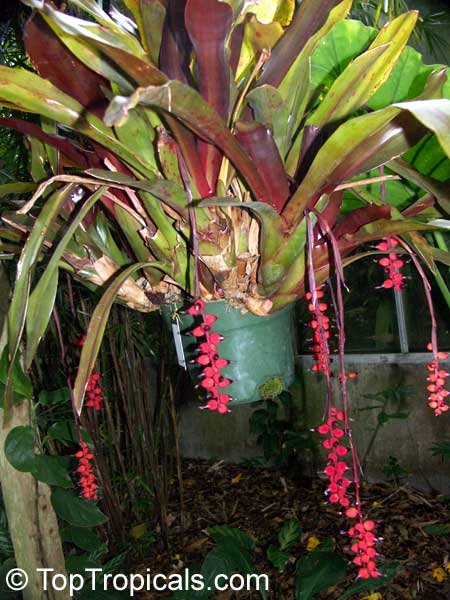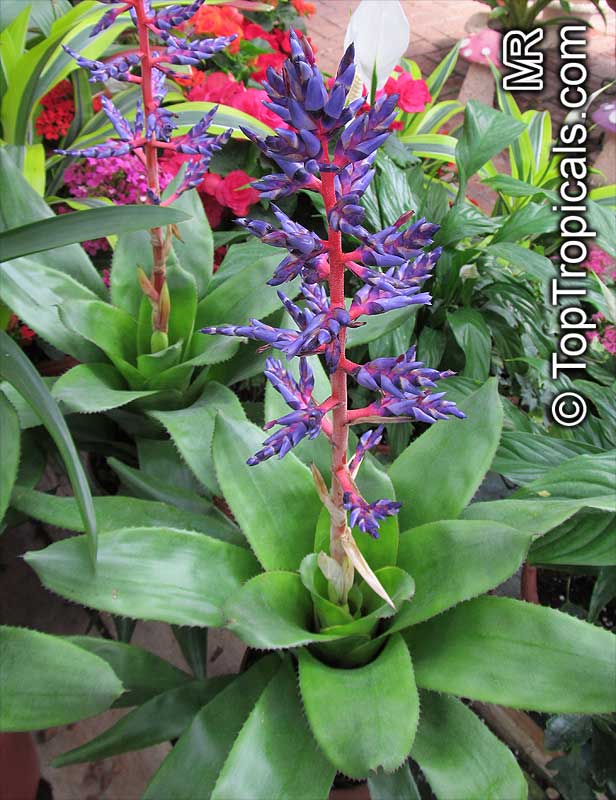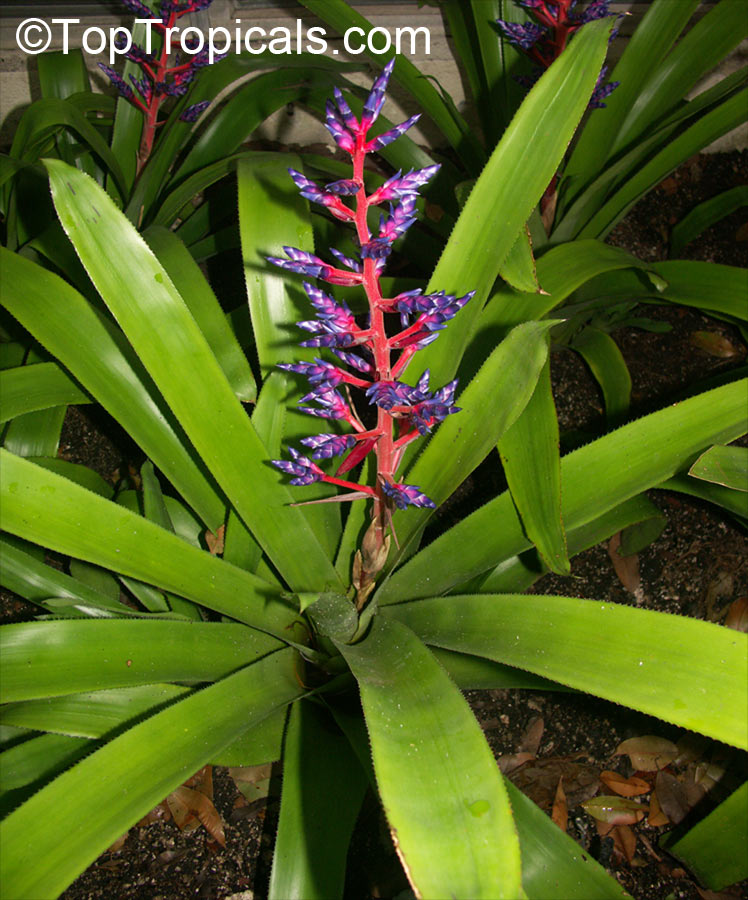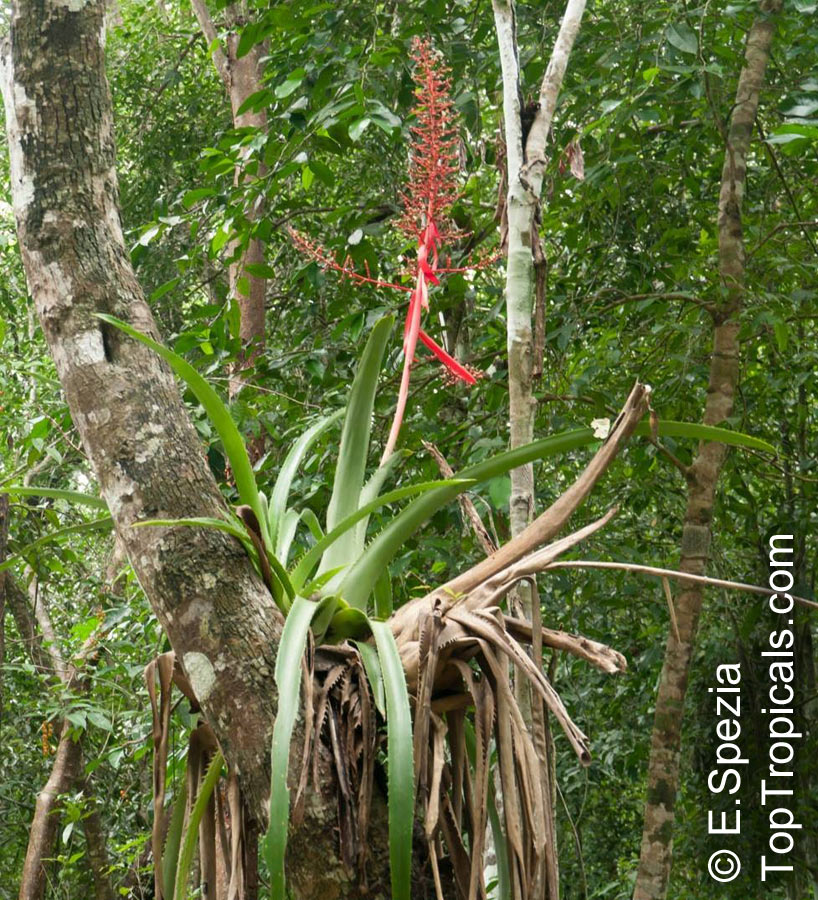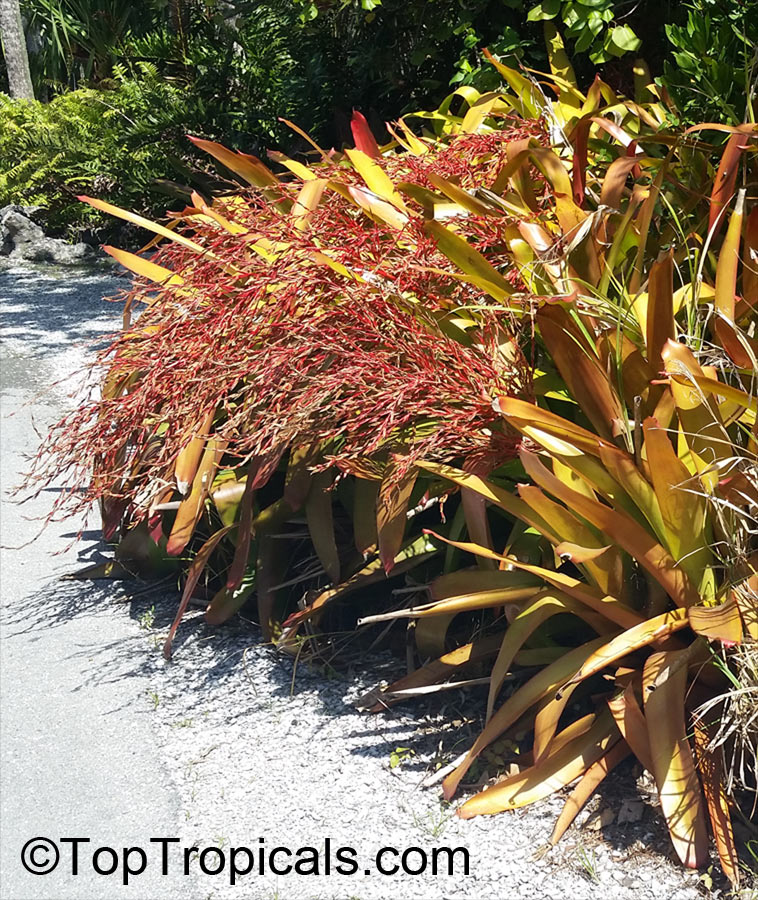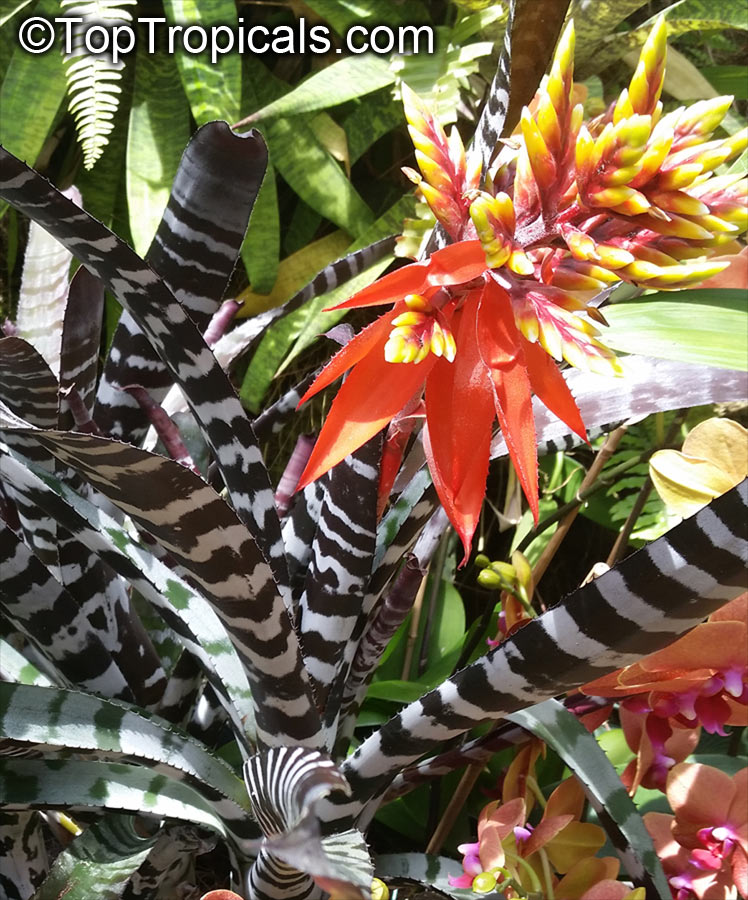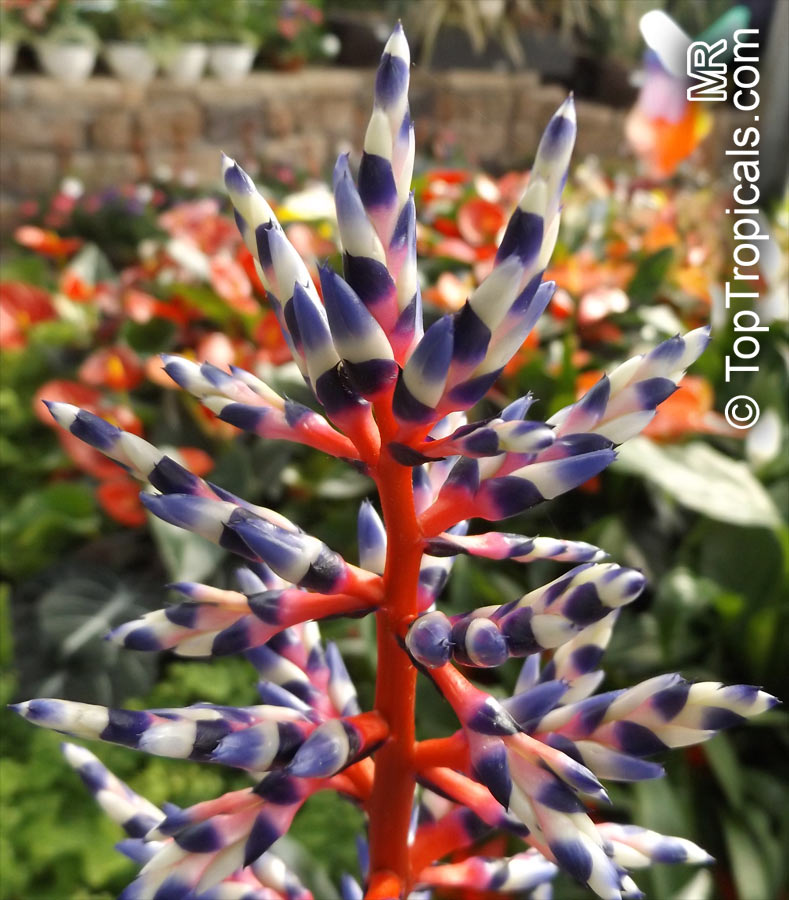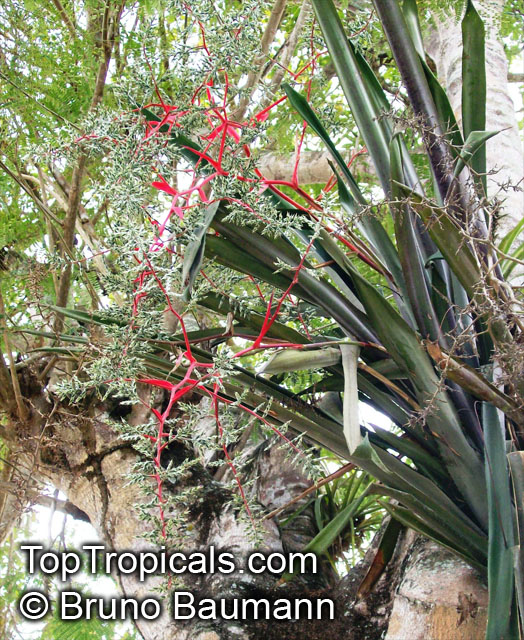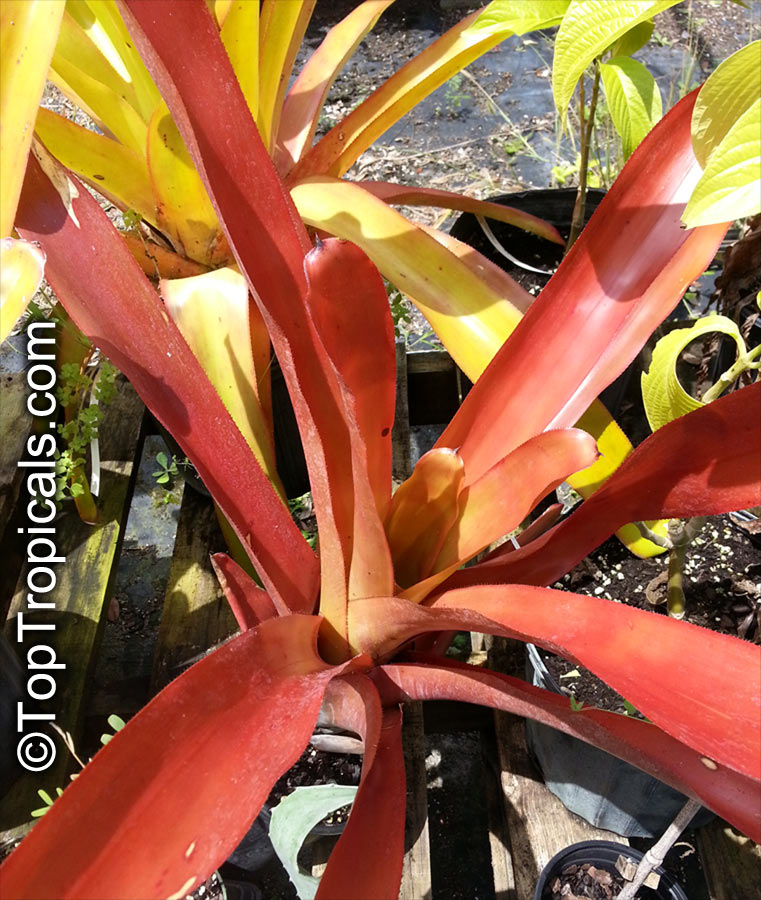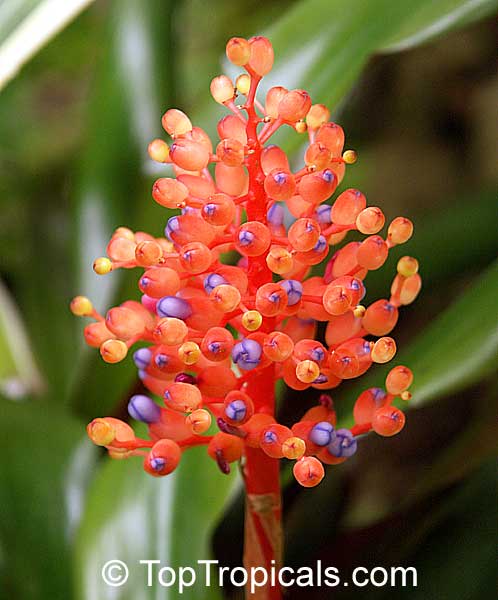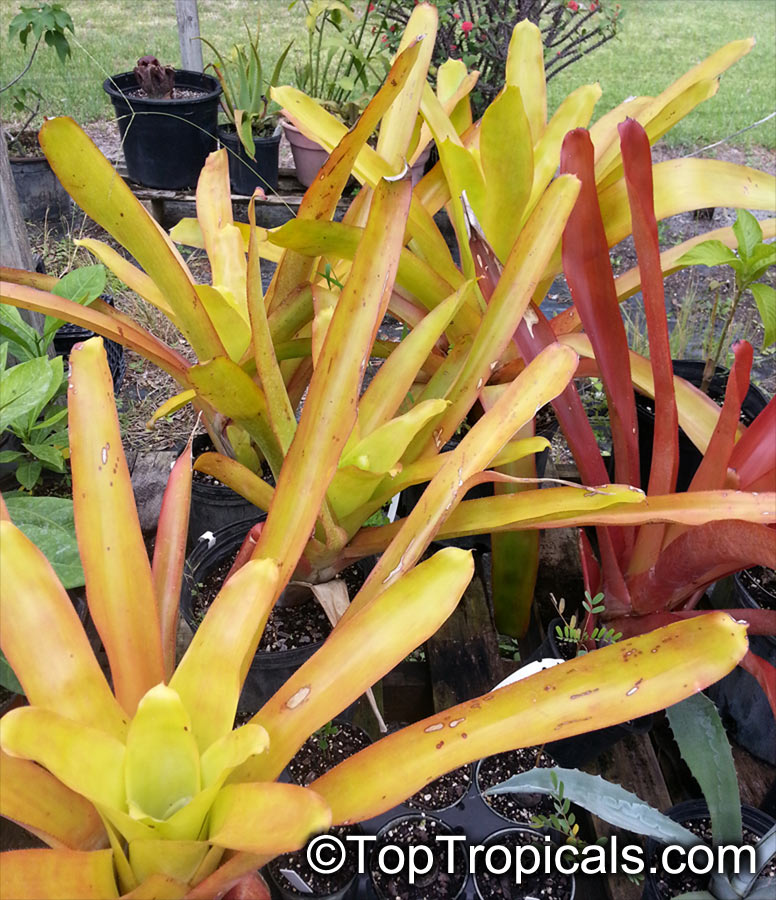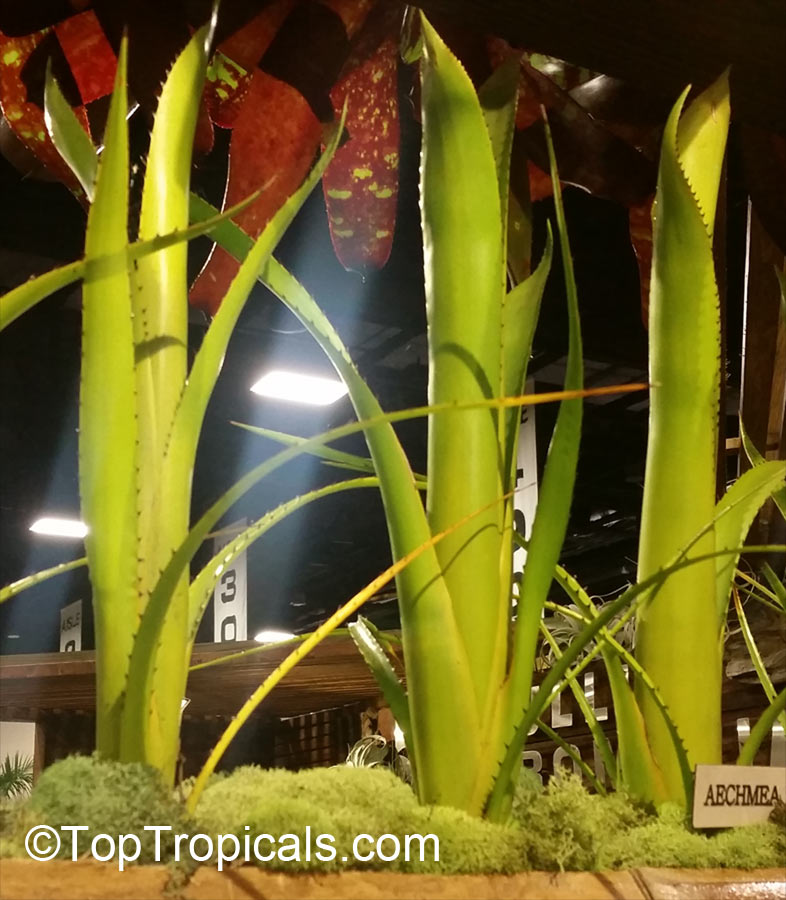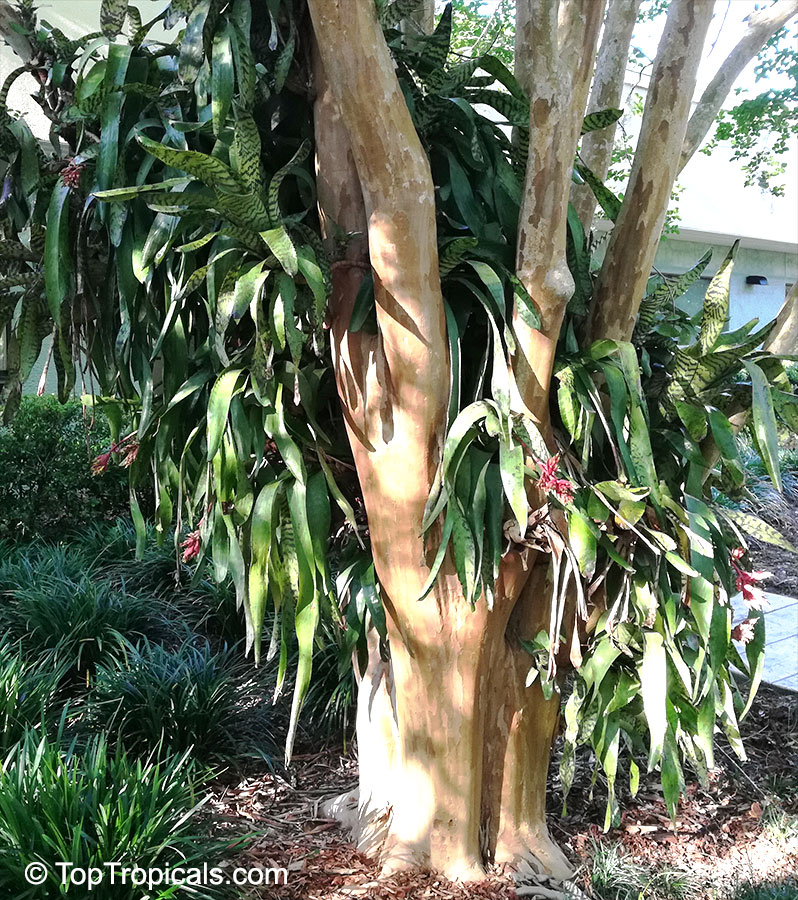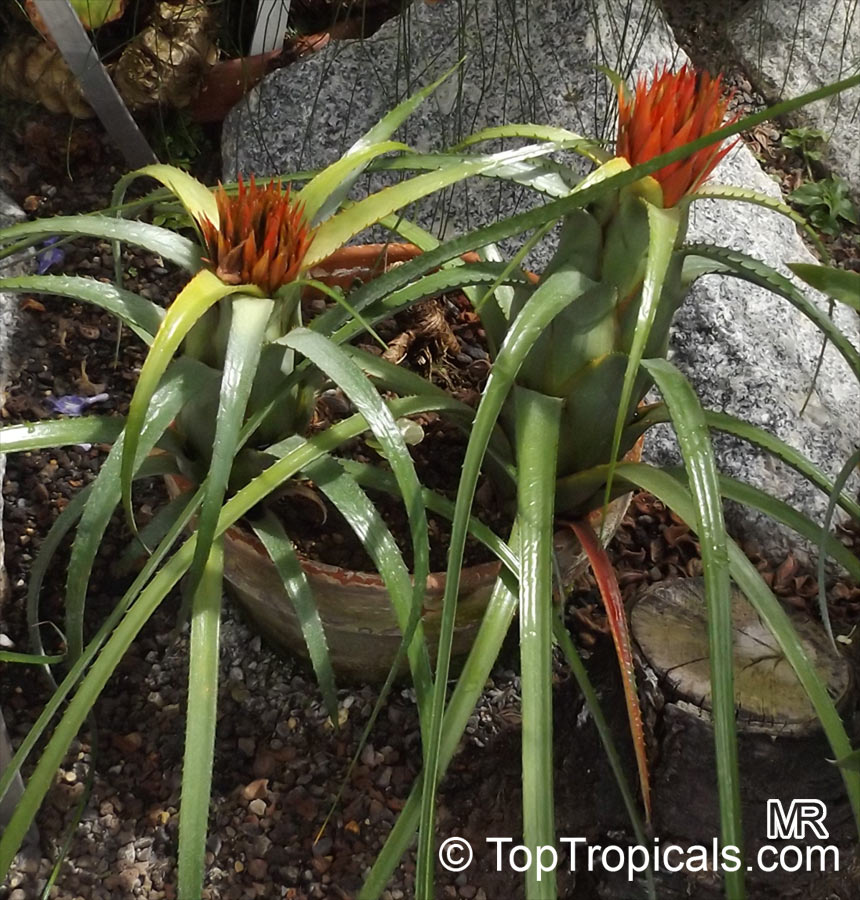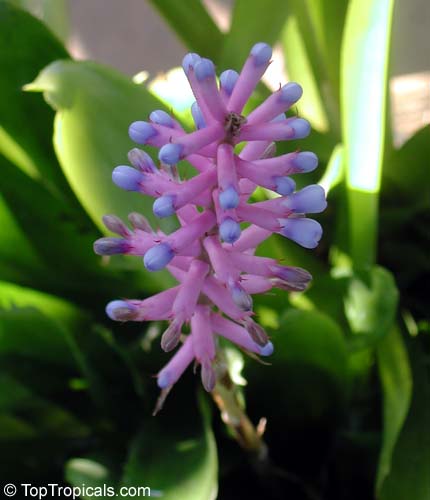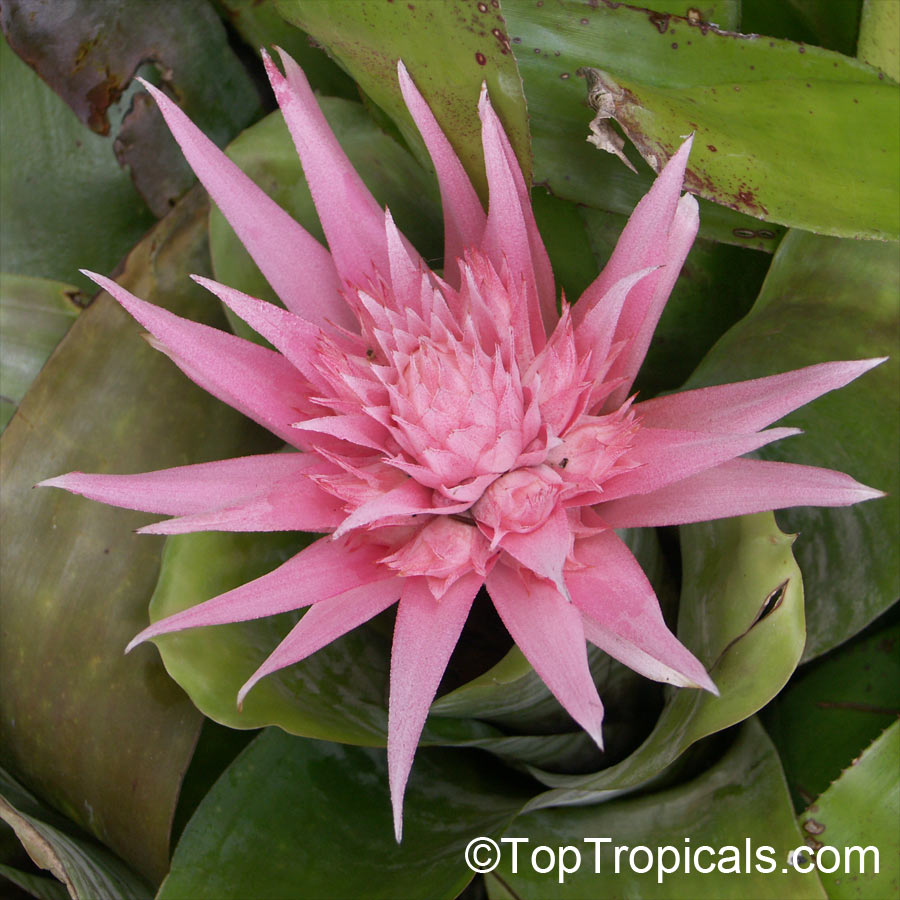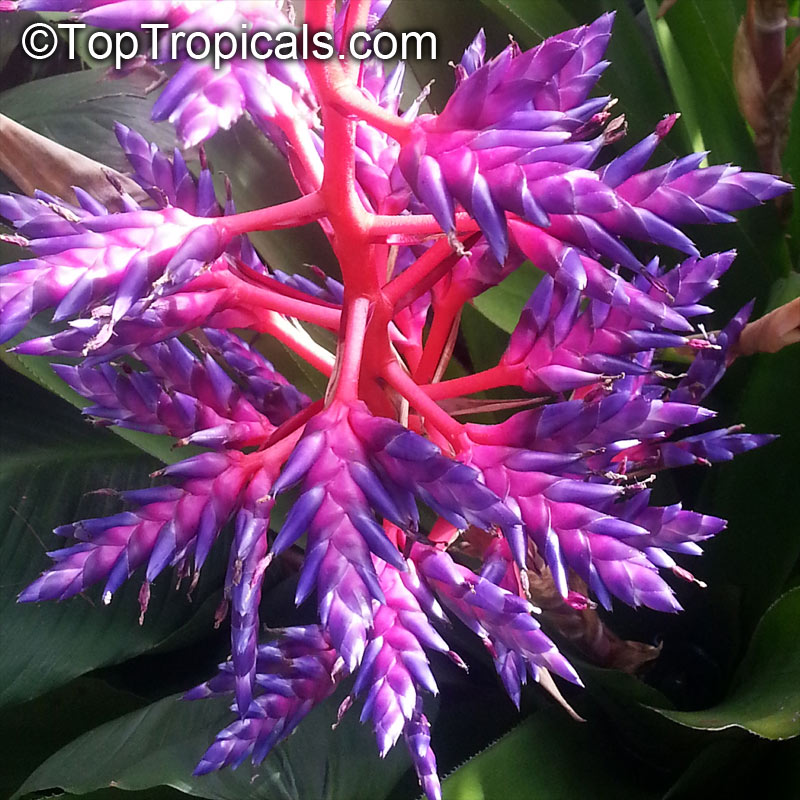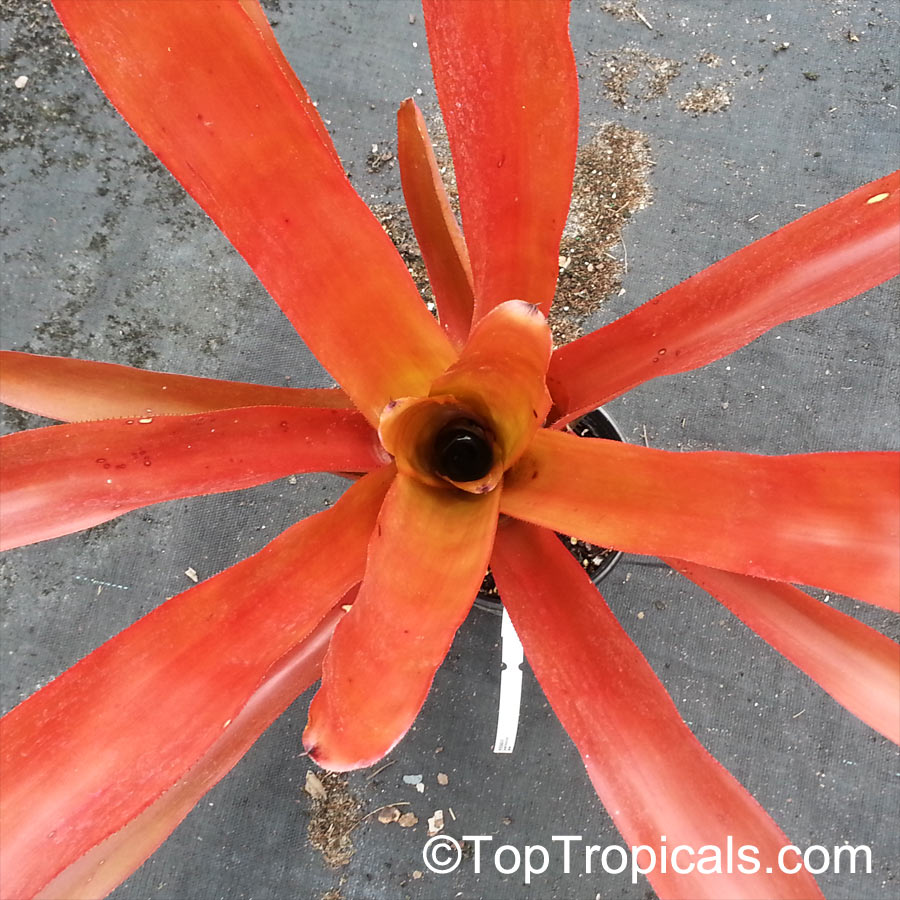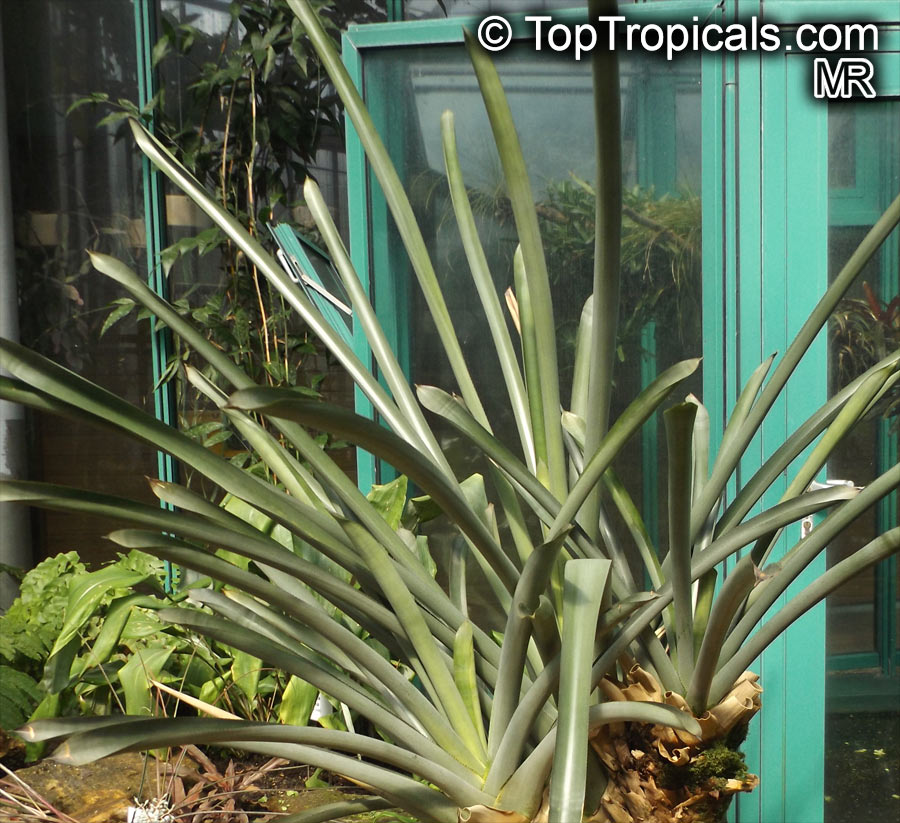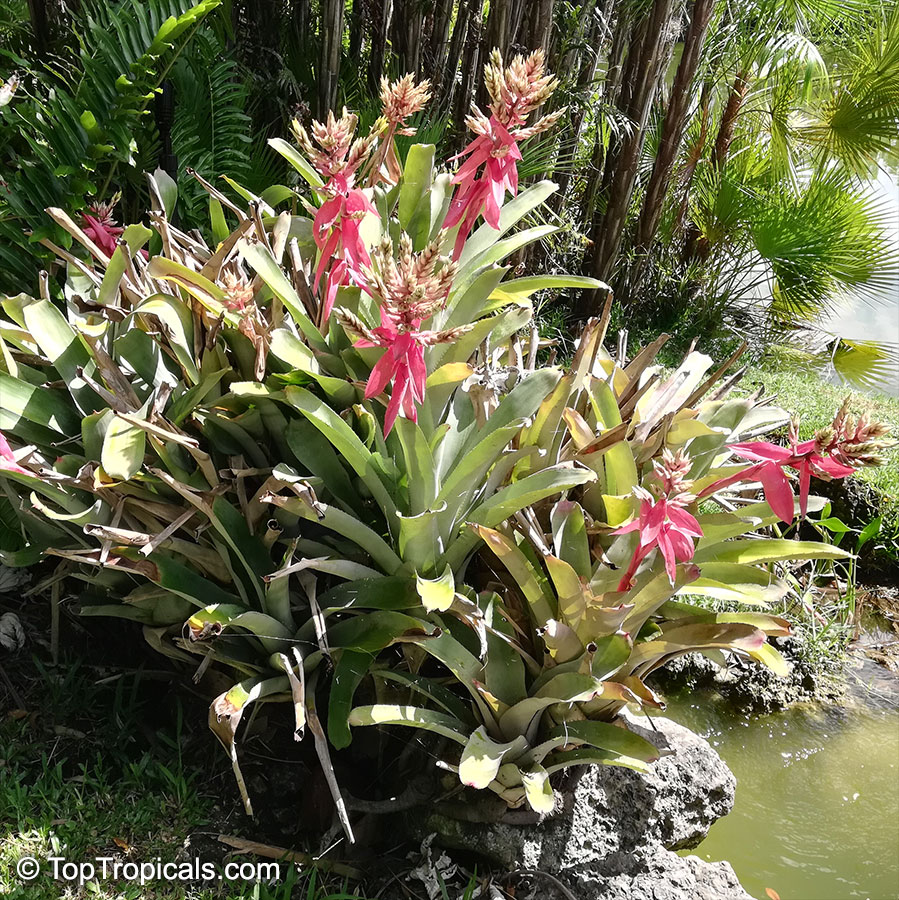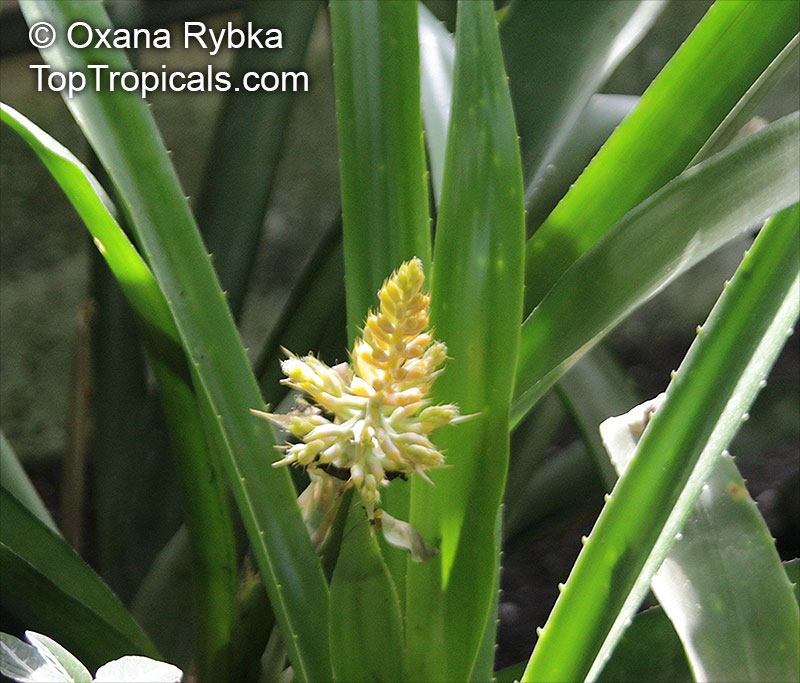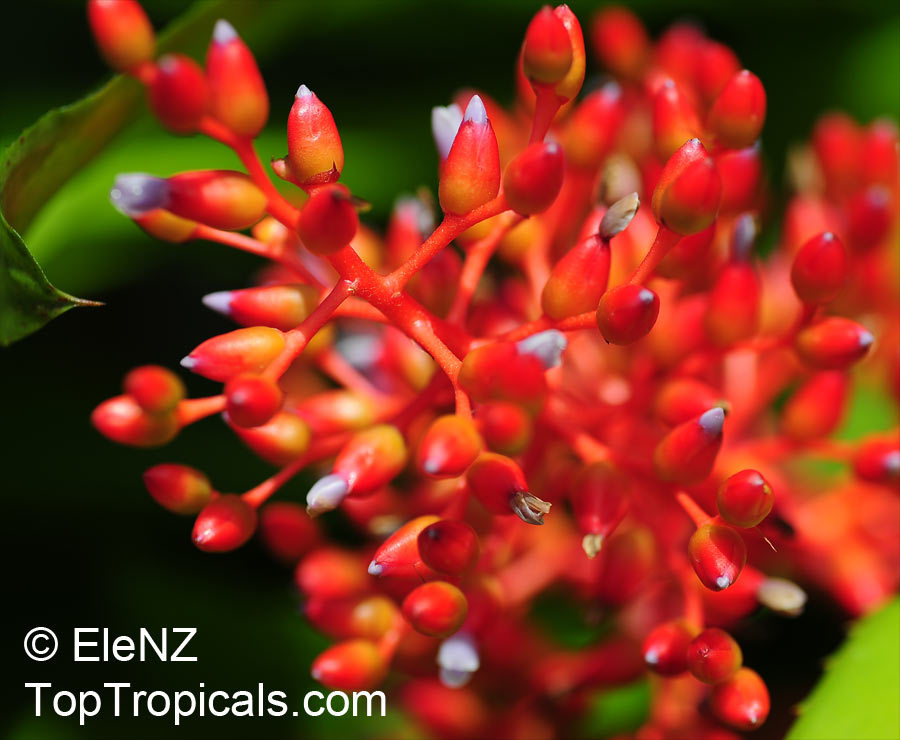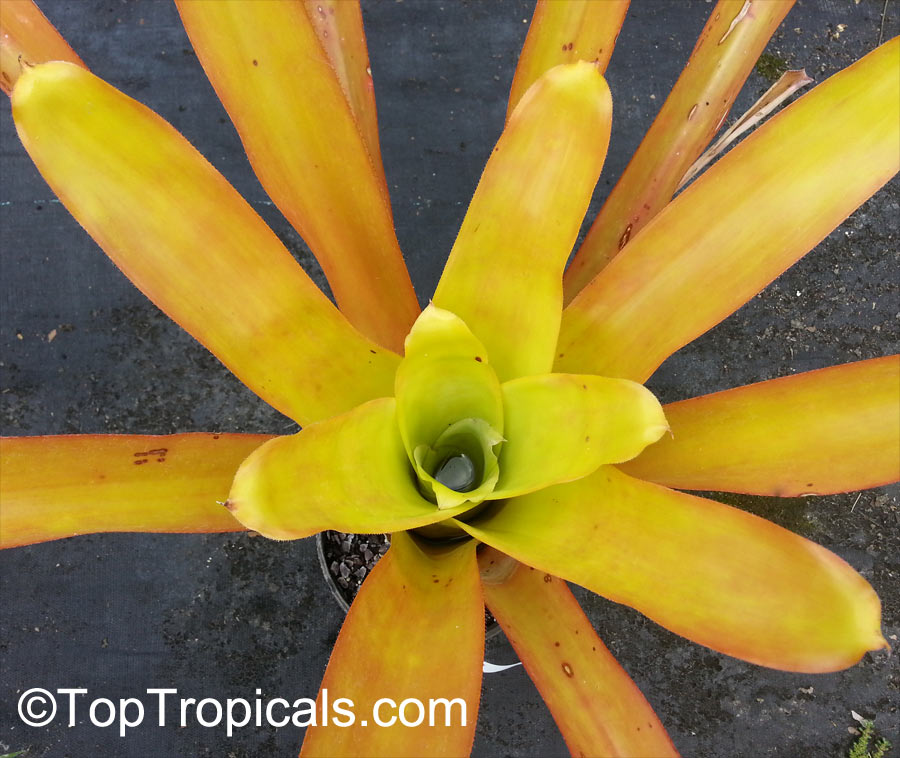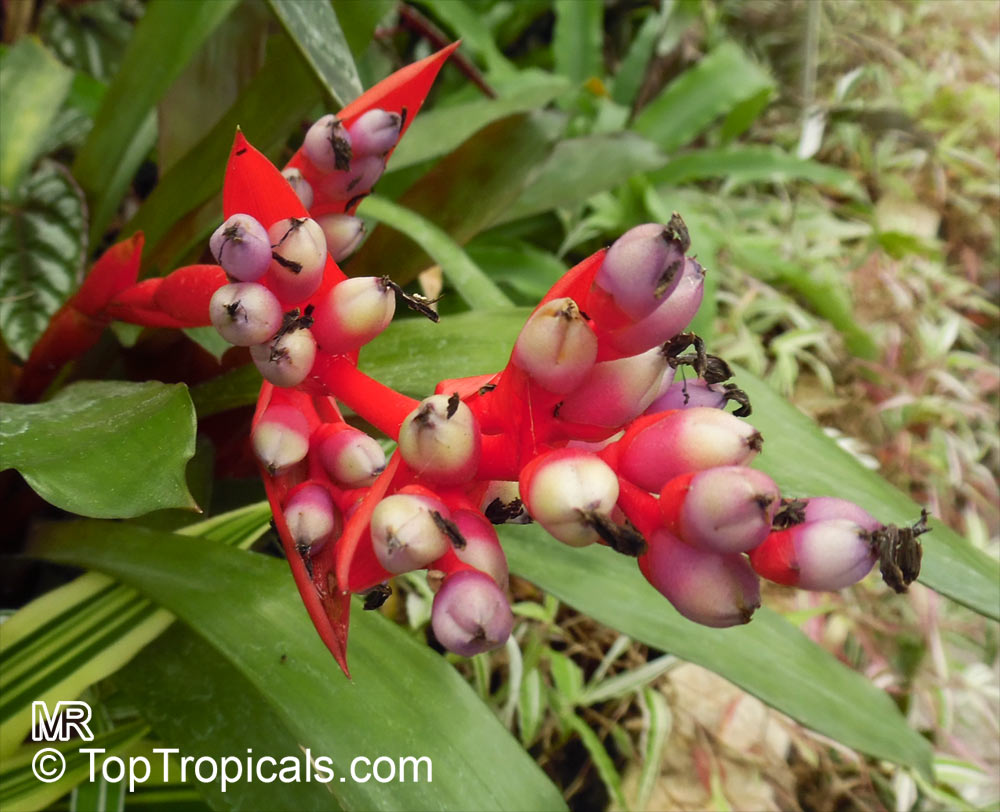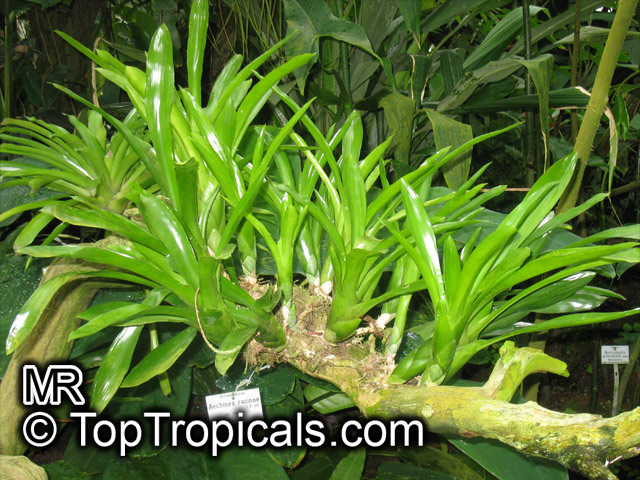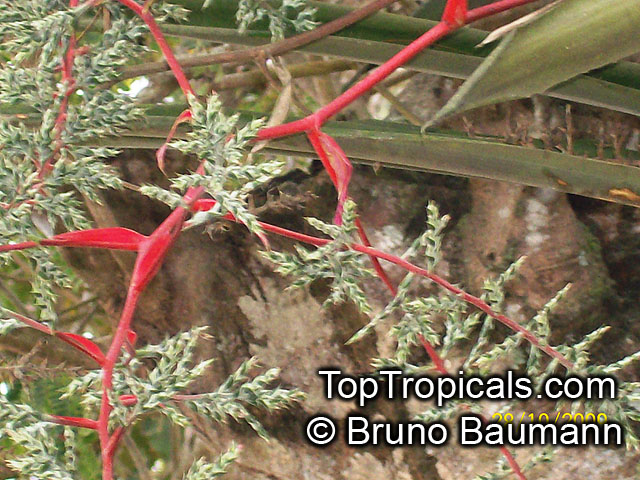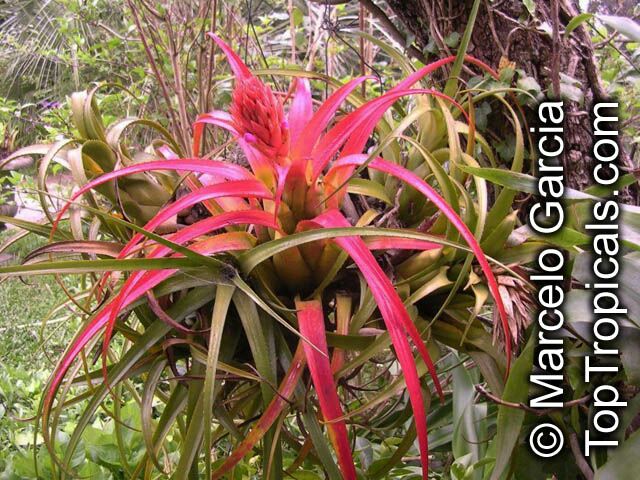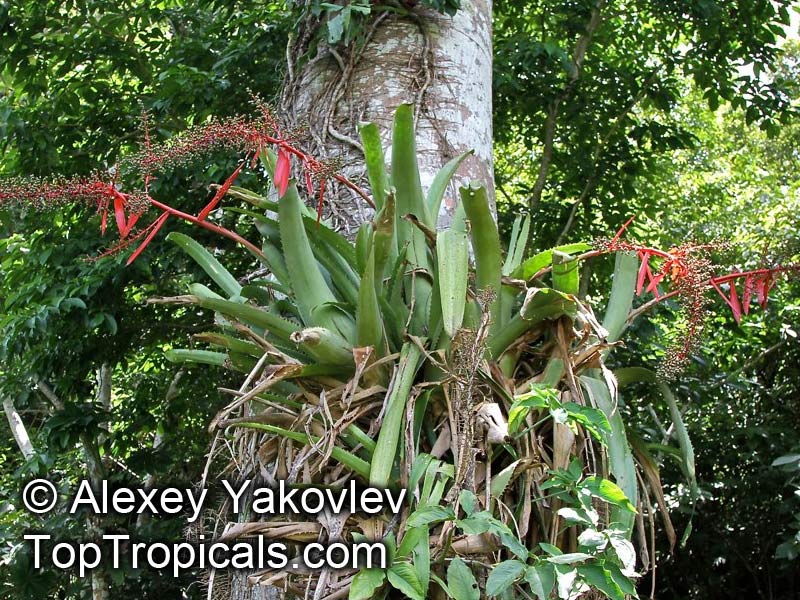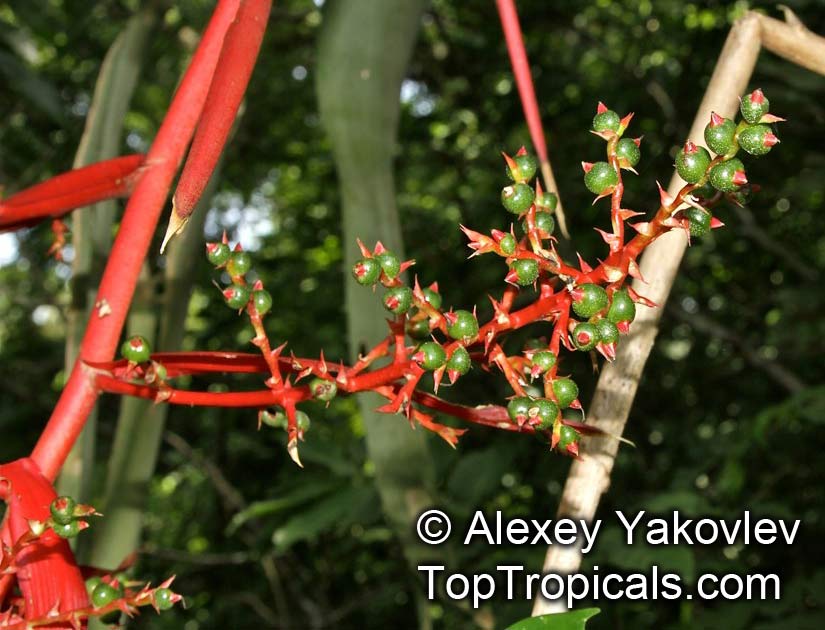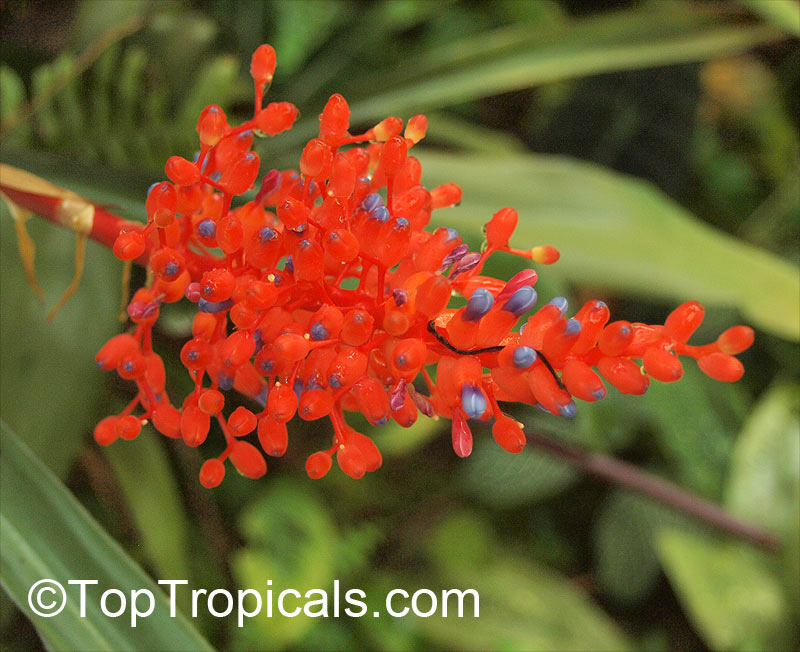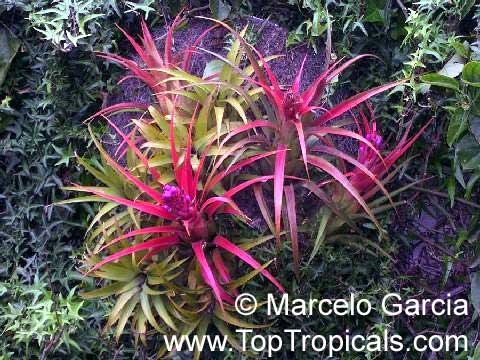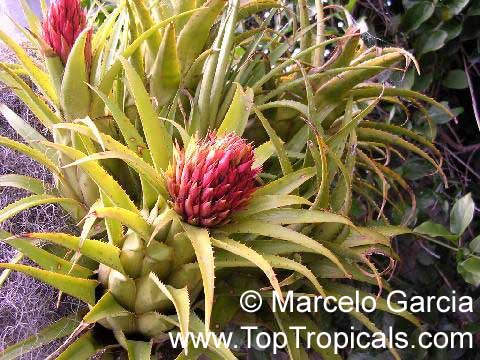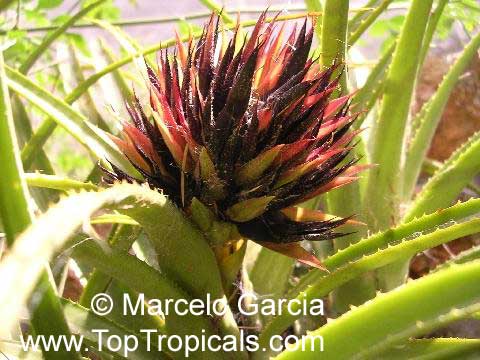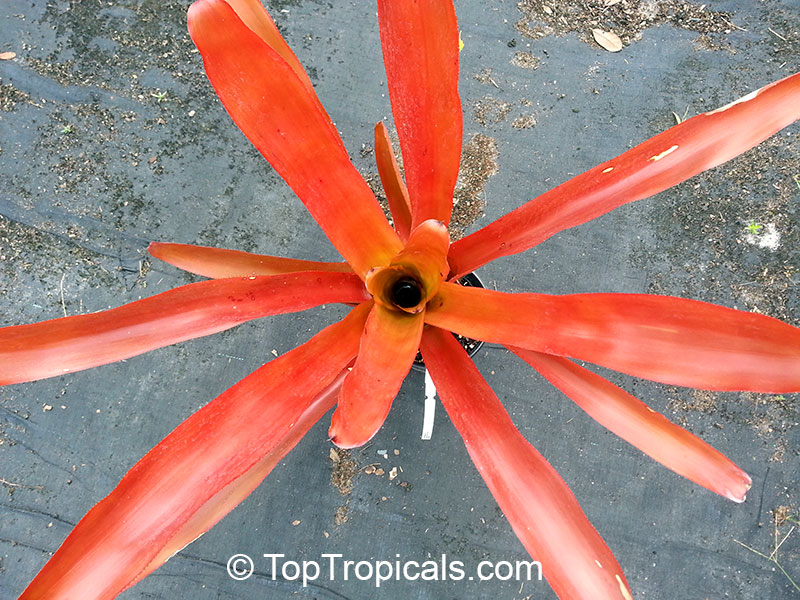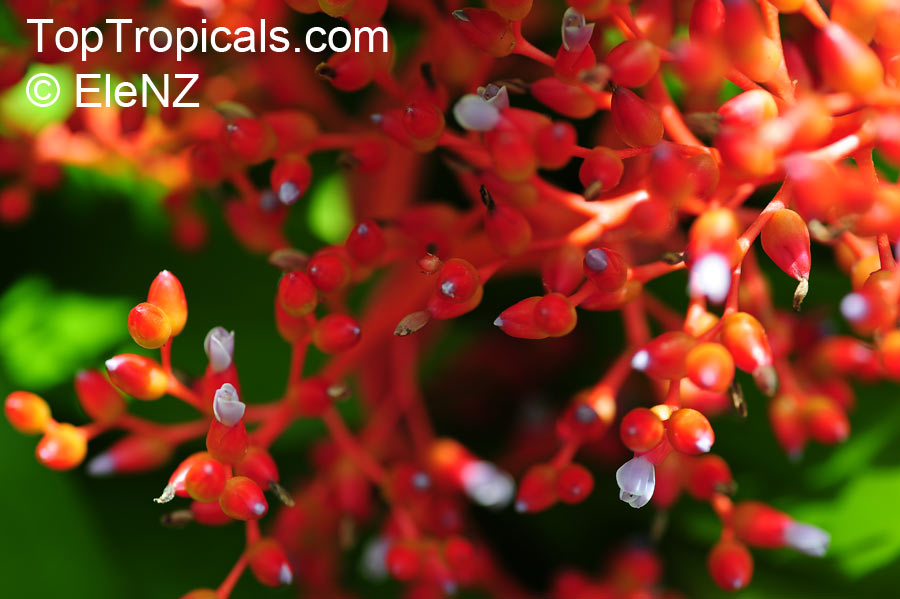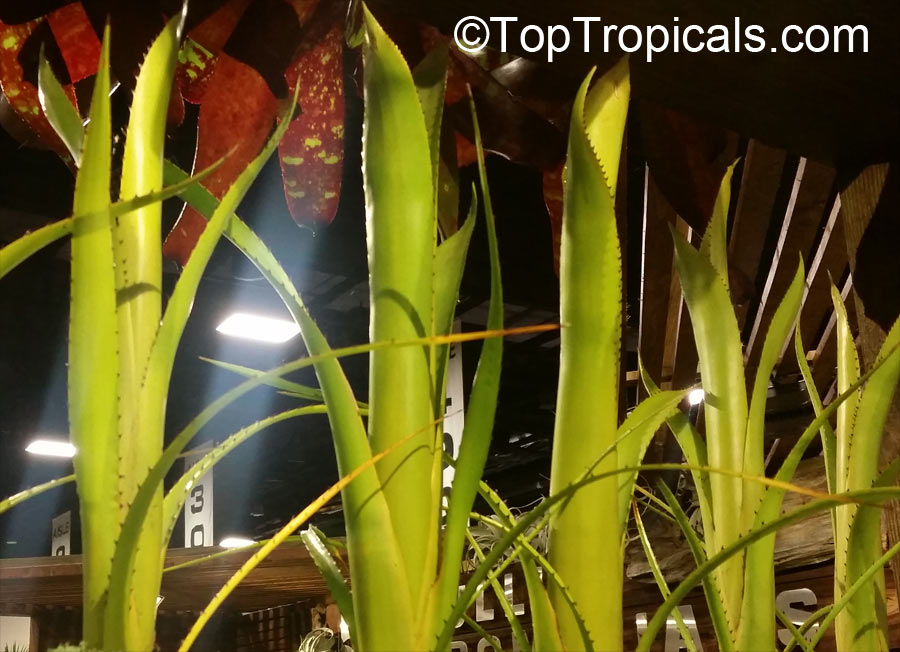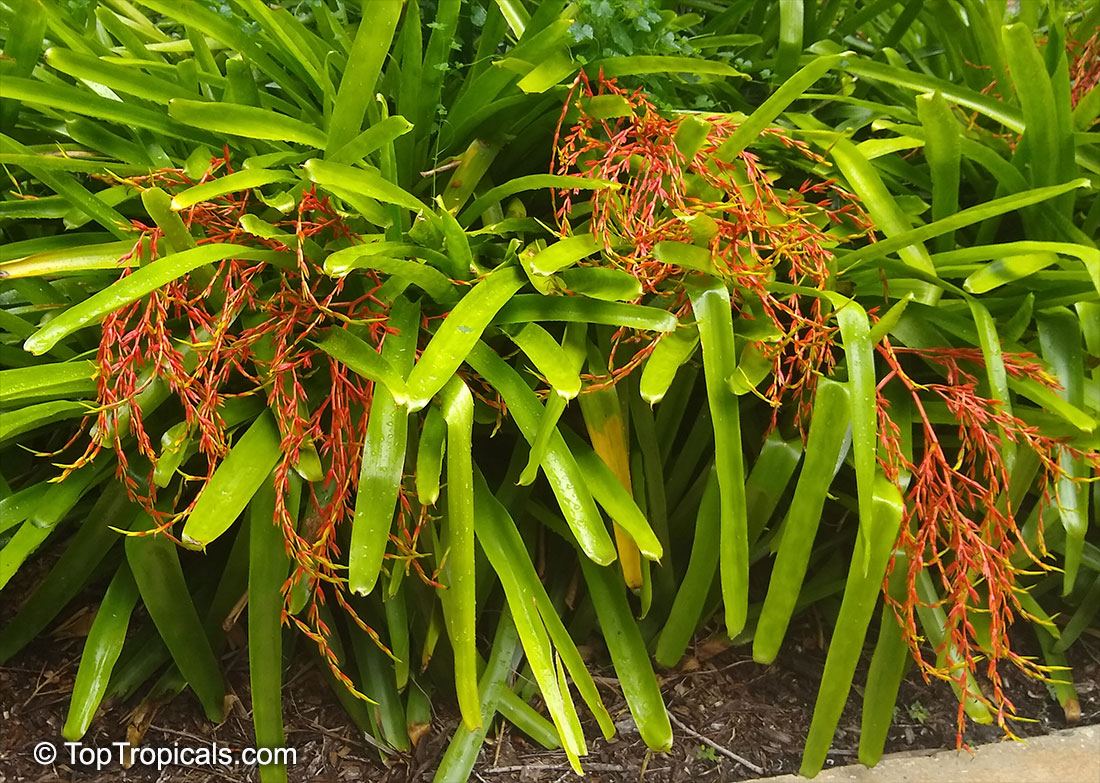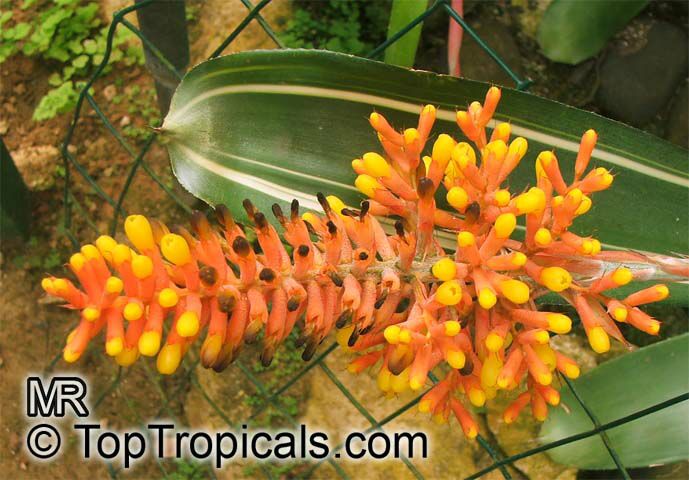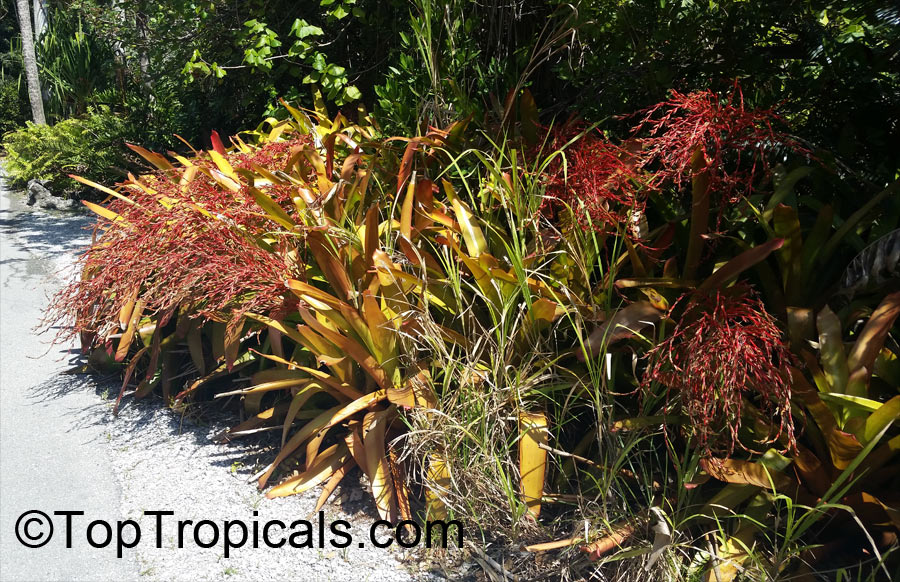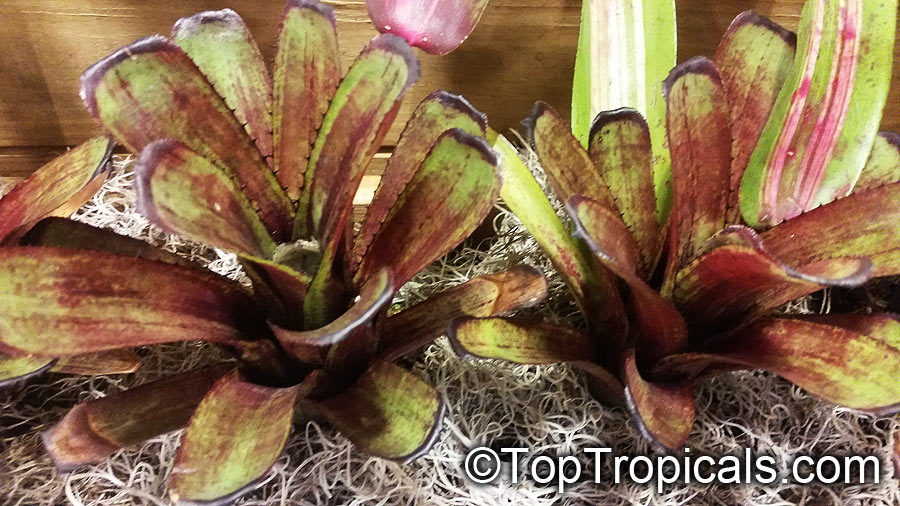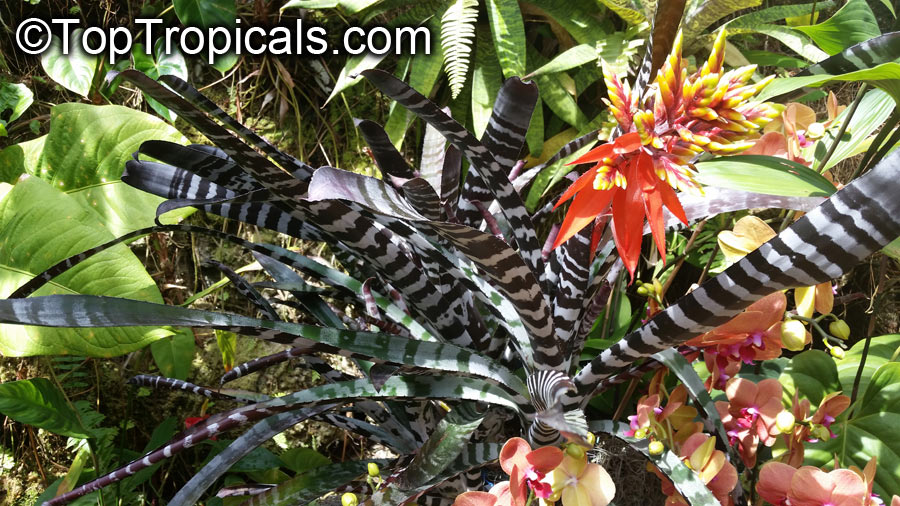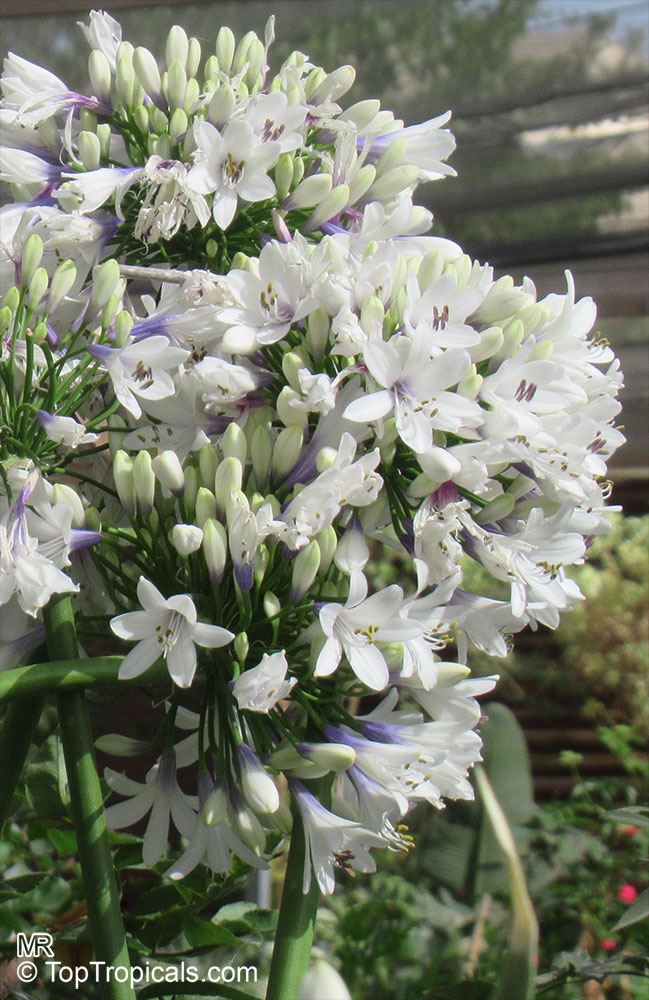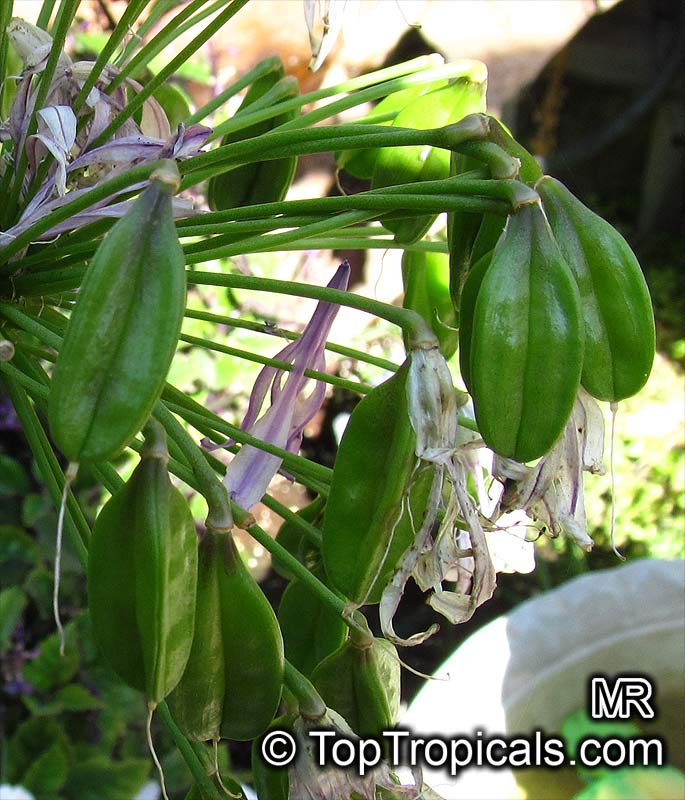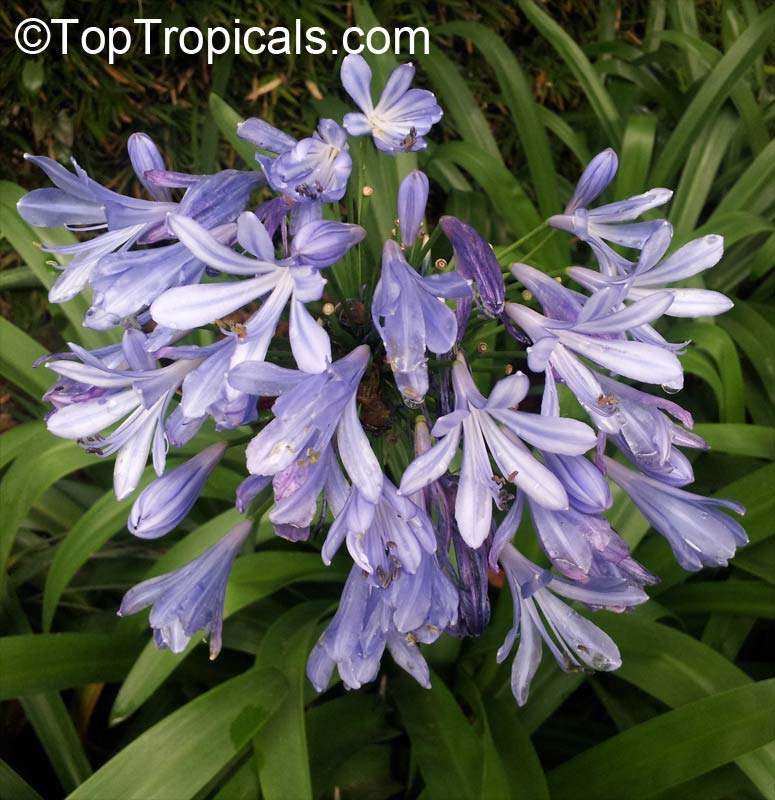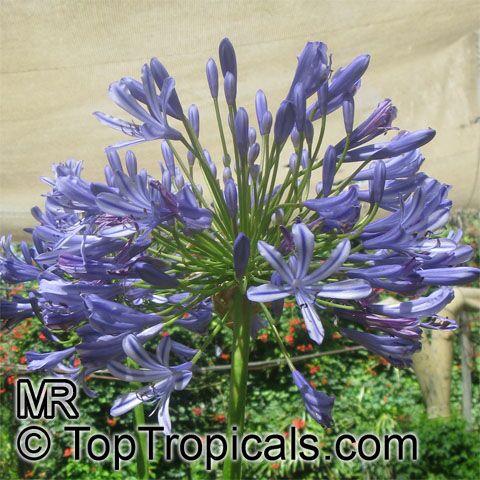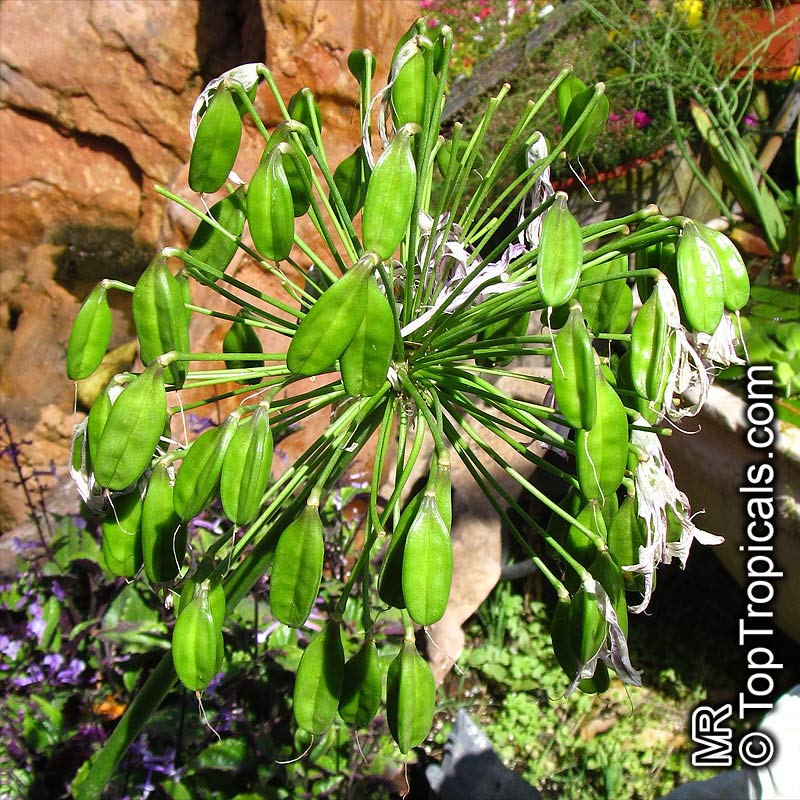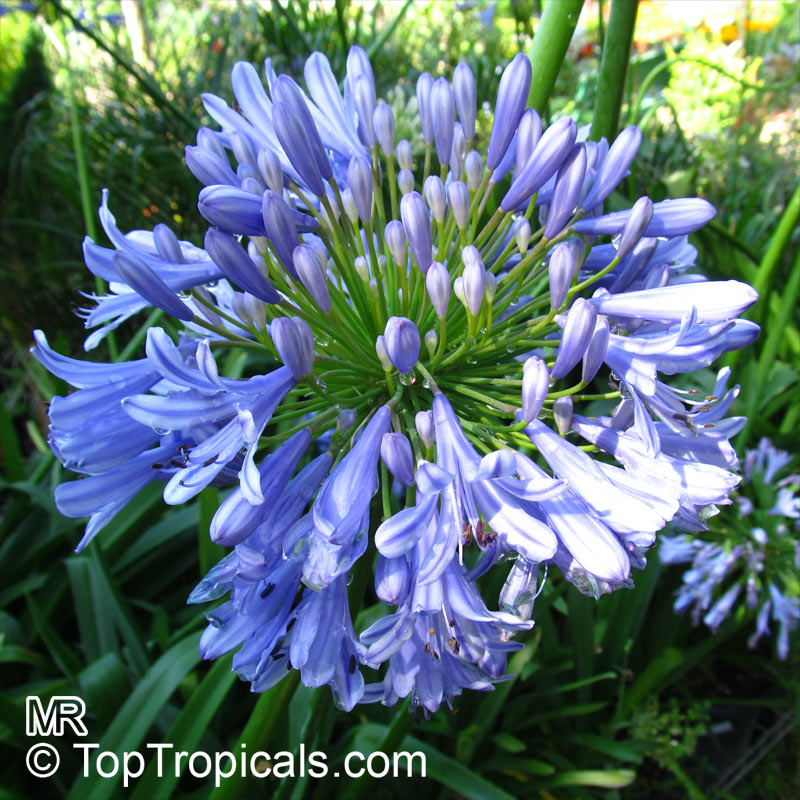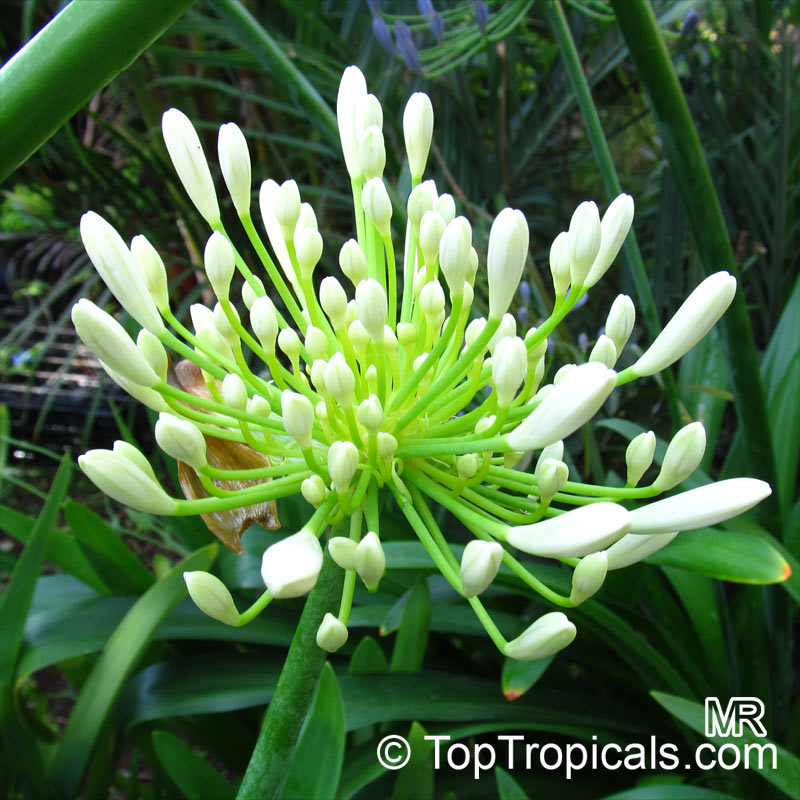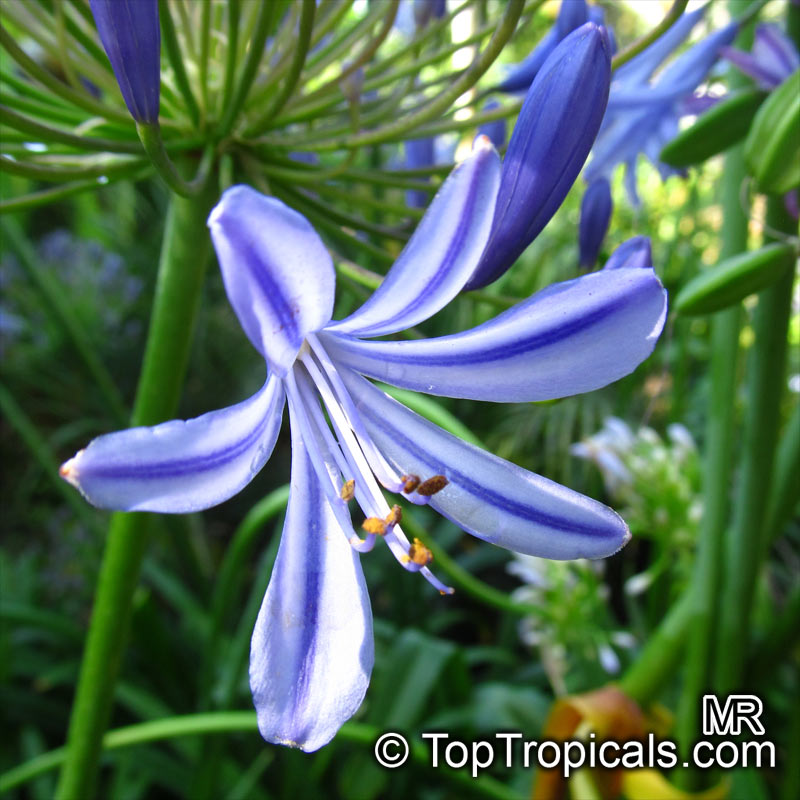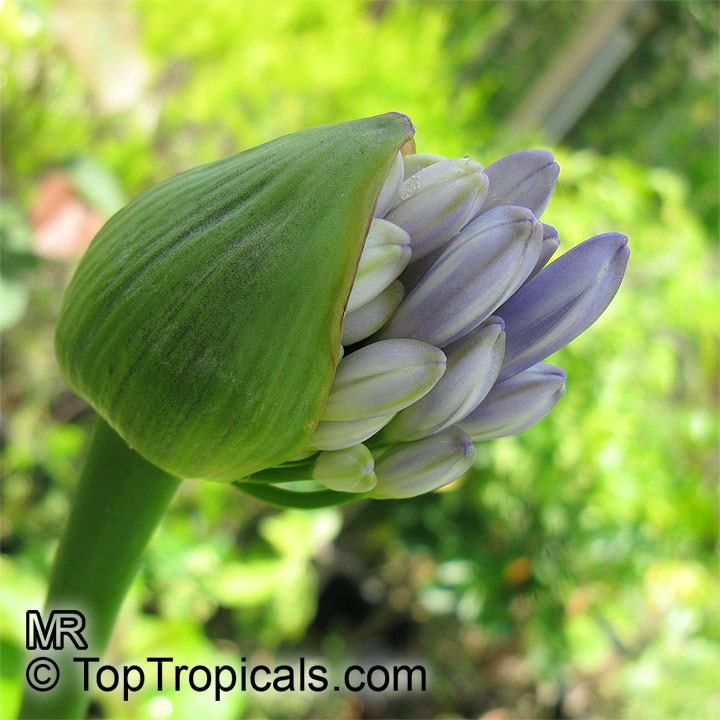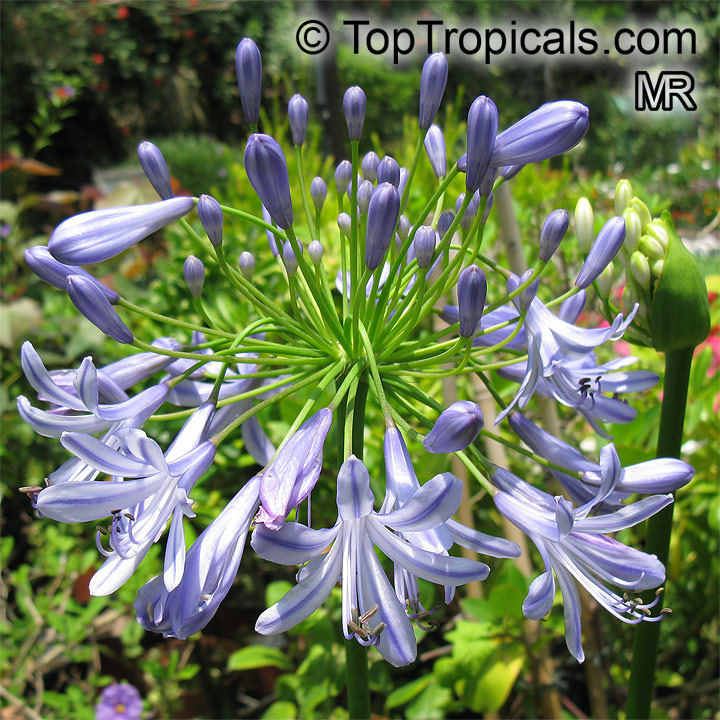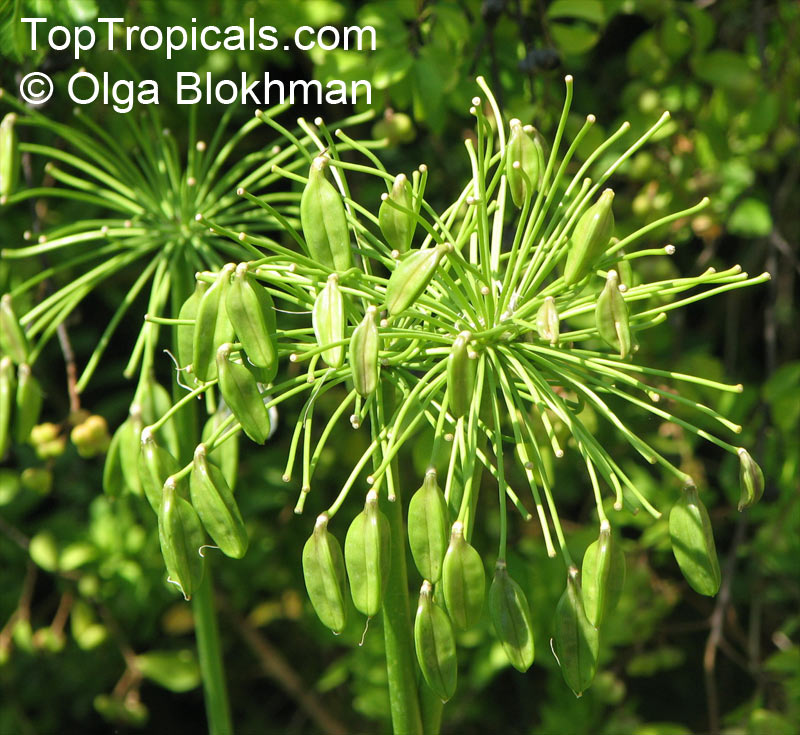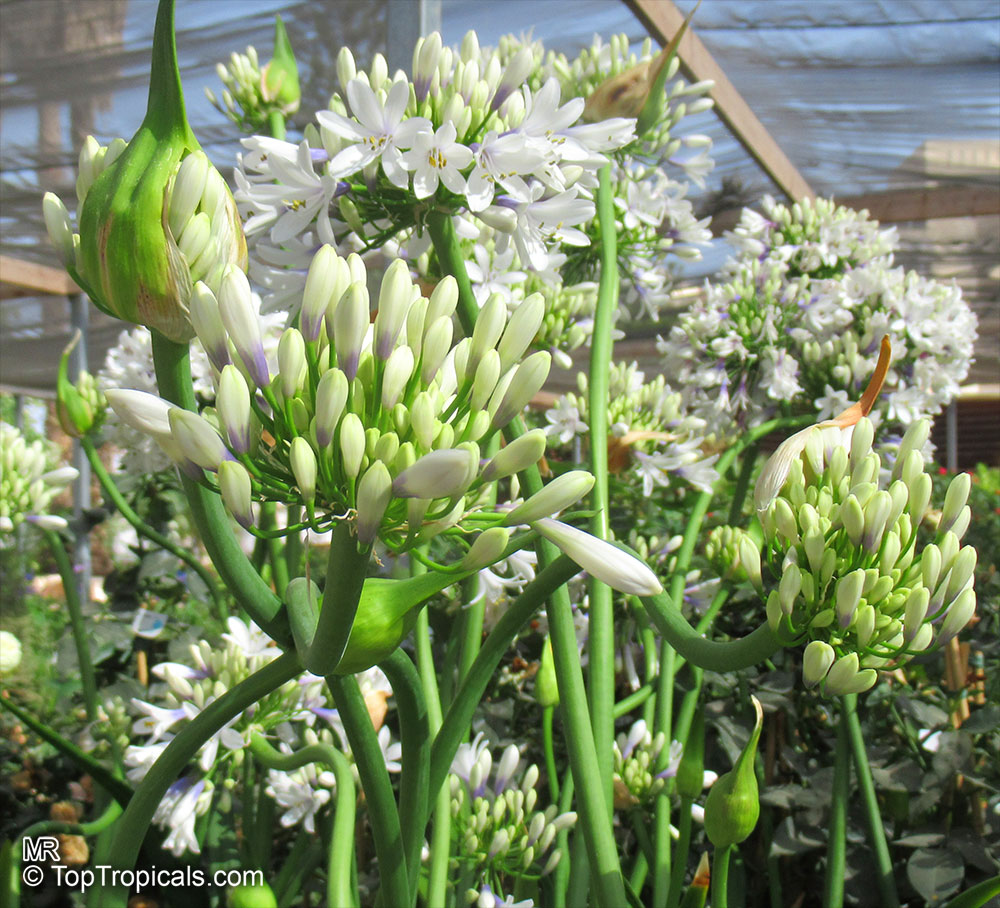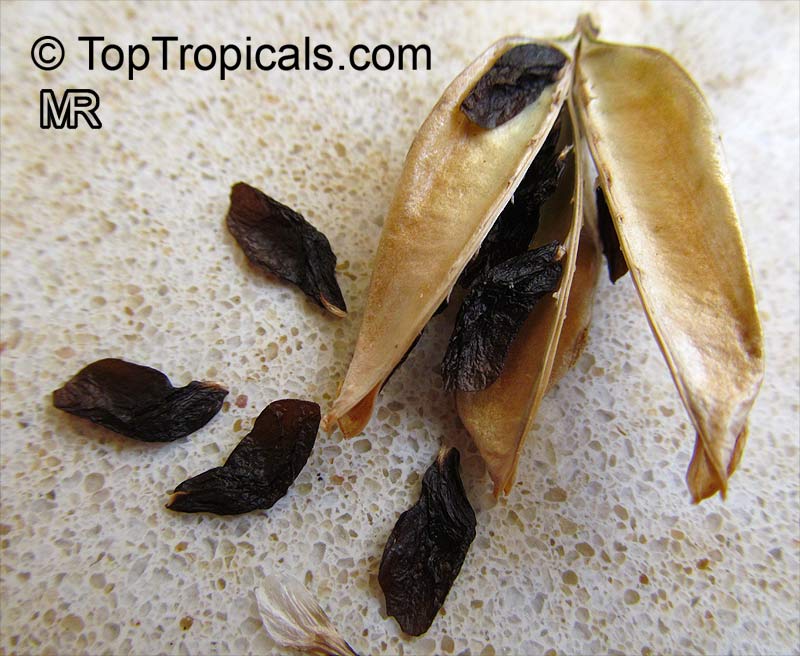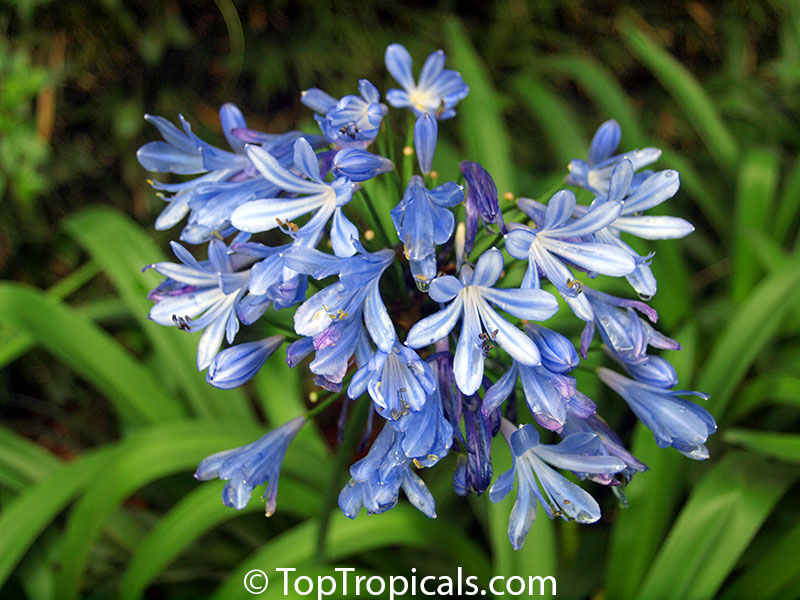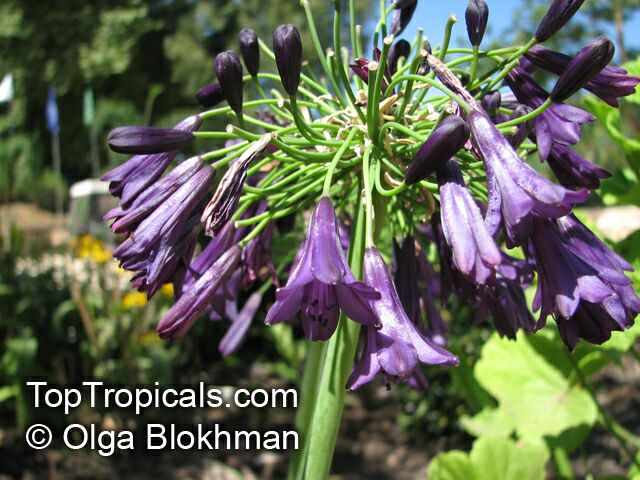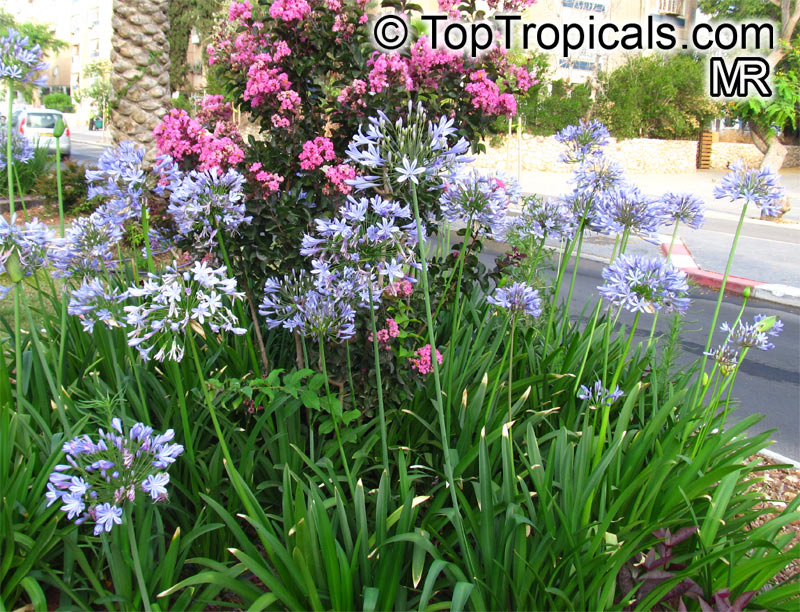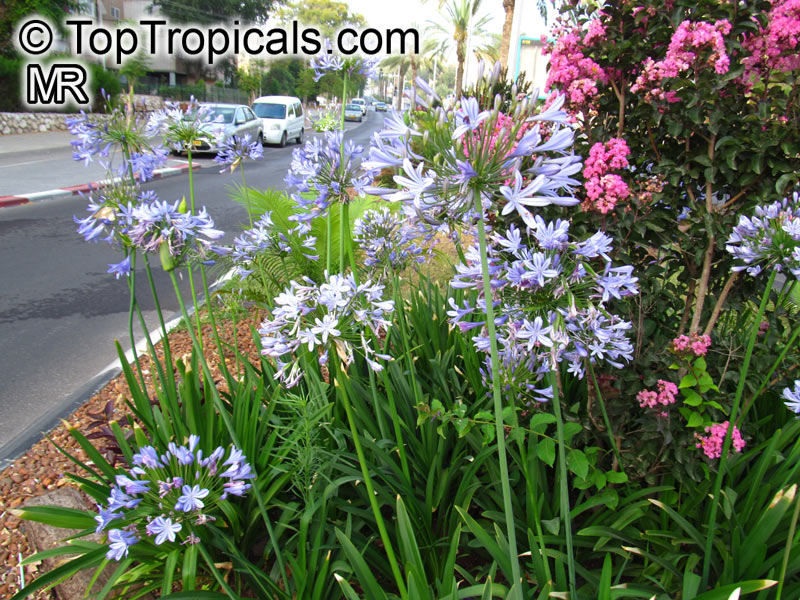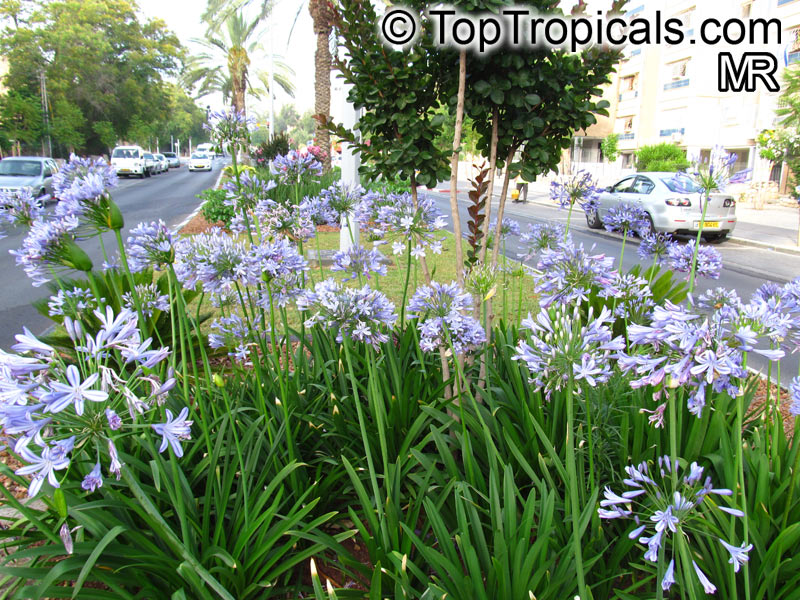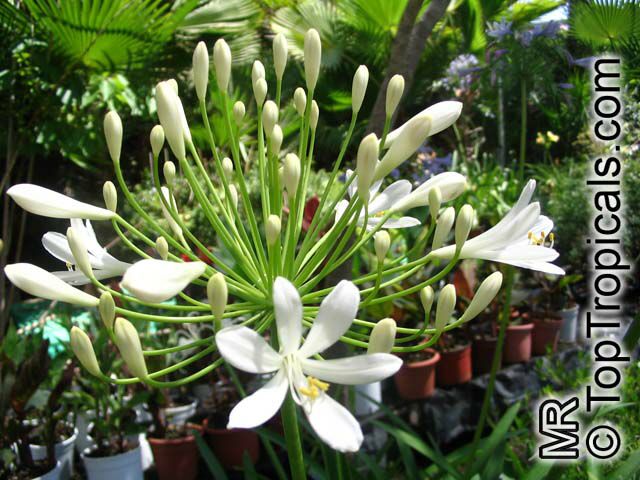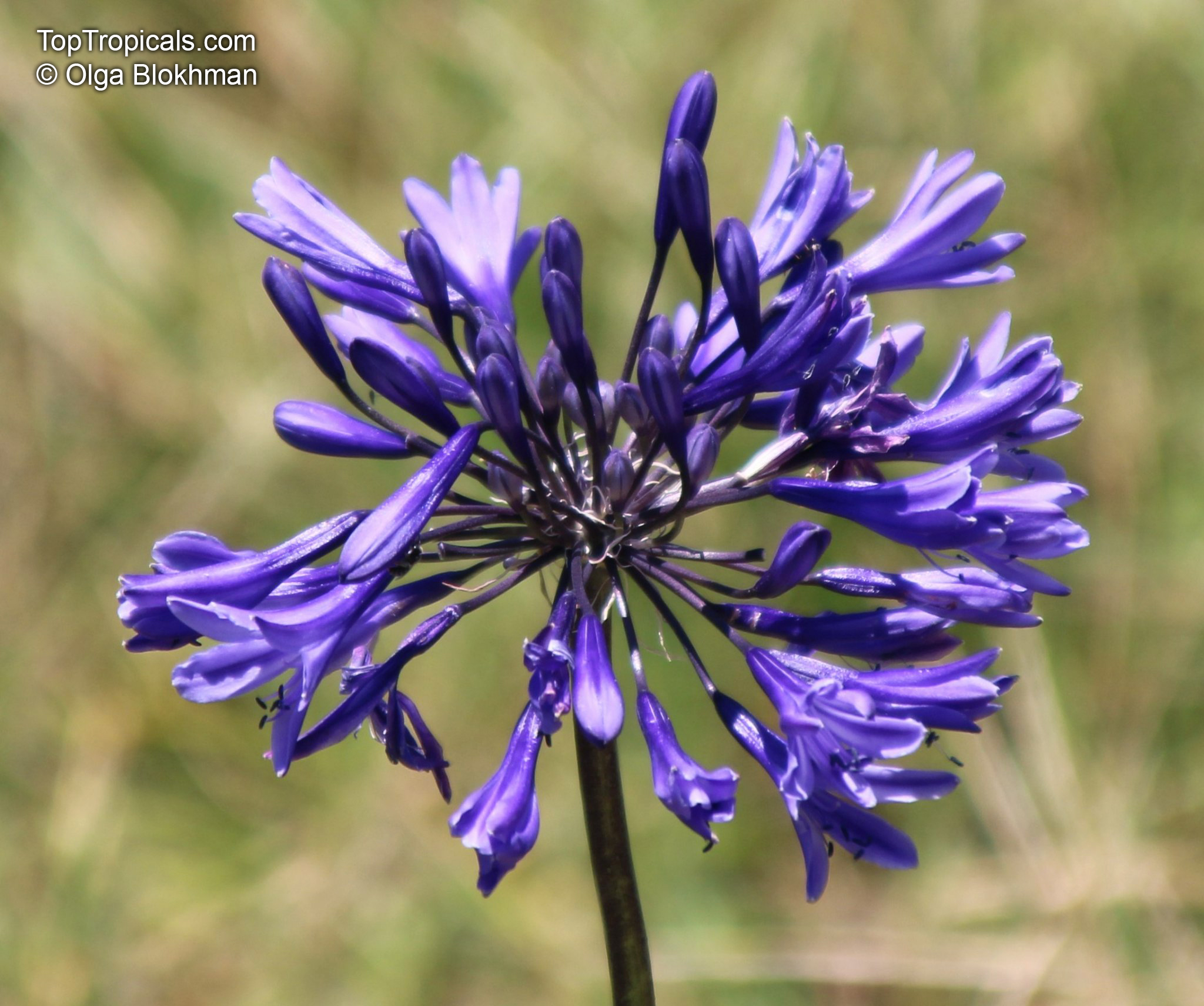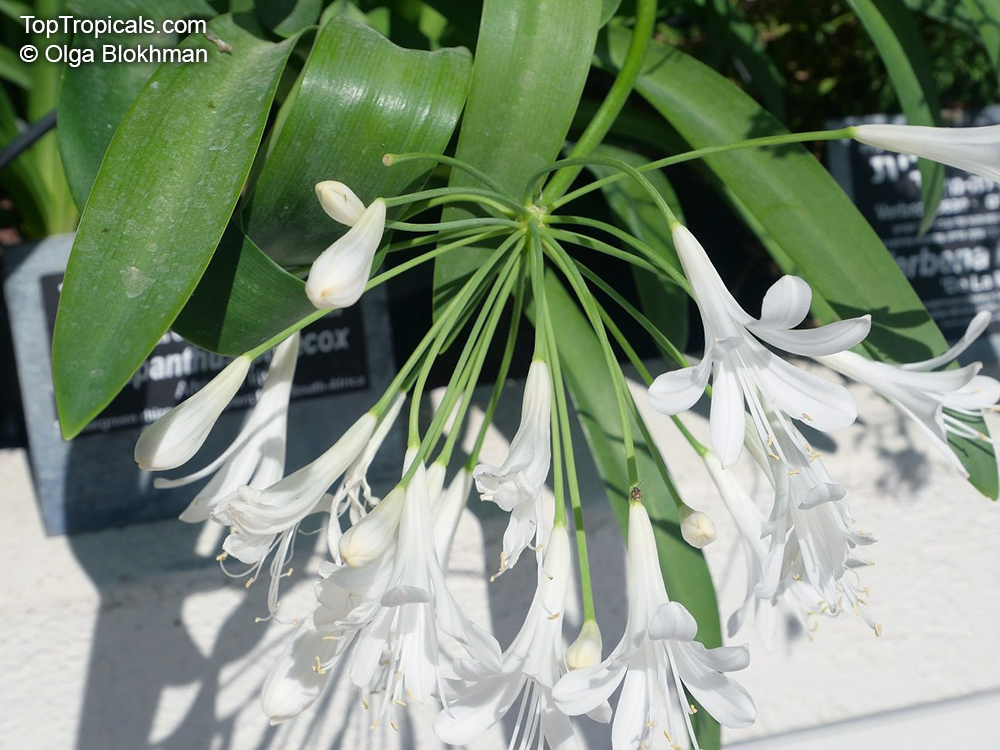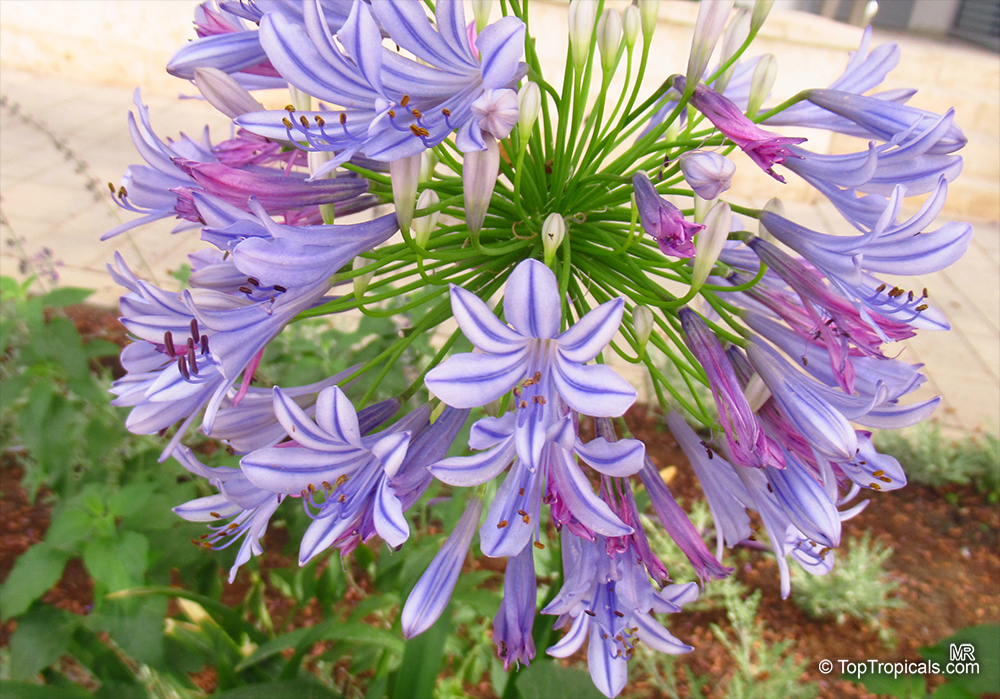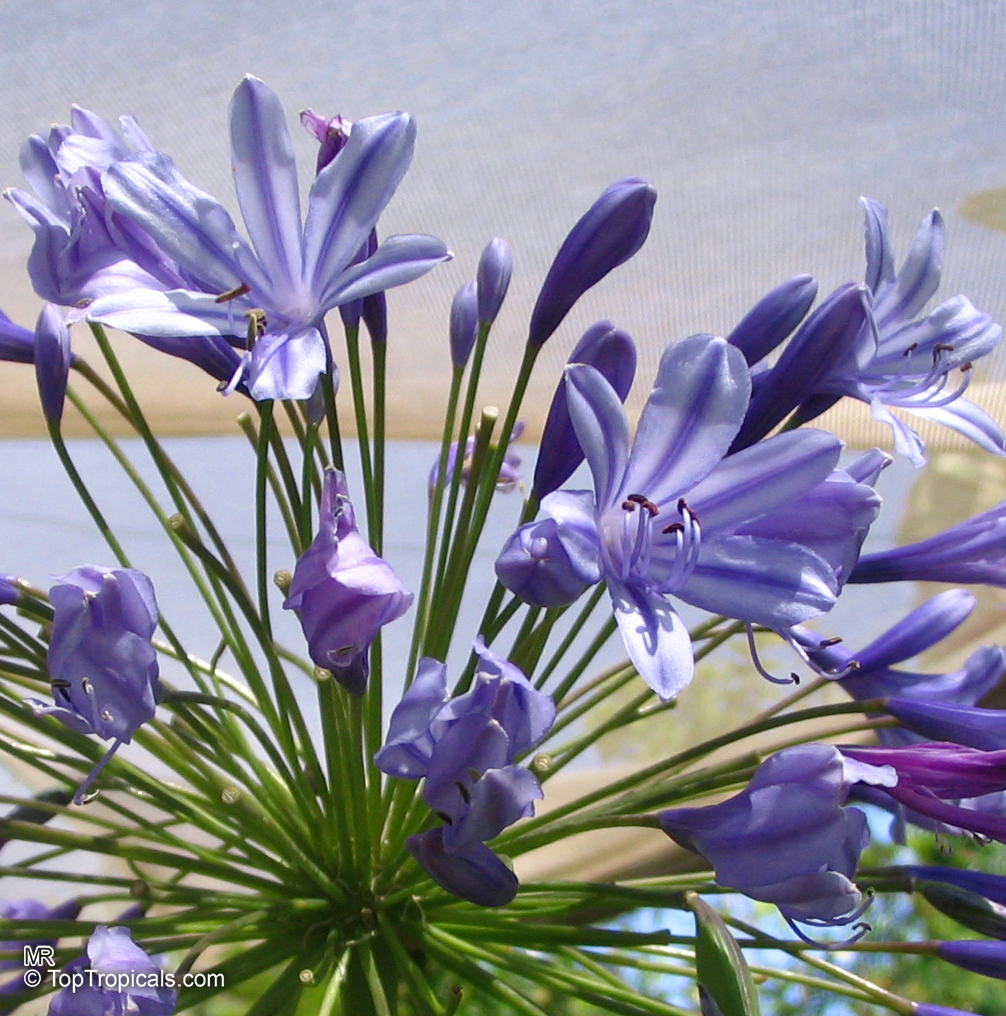Blue, lavender, purple flowers - Search results
Top Tropicals Plant Encyclopedia
| Number of plants found: 485 | Next | 
|
Go to page: | 1 | 2 | 3 | 4 | 5 | Last |
Botanical name: Abrus precatorius
Common names: Buddhist rosary bead, Rosary pea vine, Carolina muida, Deadly crab's eye, Lucky bean, Prayer beads, Weather plant, Wild liquorice
Family: Fabaceae
Subfamily: Faboideae
Origin: India, Sri Lanka, Thailand







Abrus precatorius has small pretty purple flowers located at the end of the stalks. Fruits are short, inflated pods, splitting open when mature to reveal the round; hard and shiny seeds which are scarlet, but black at the base. Seeds contain abrin, one of the most toxic plant poisons known.
Botanical name: Acanthus ilicifolius
Common names: Holly-leaved Acanthus, Sea Holly, Holy Mangrove
Family: Acanthaceae
Origin: India, Polynesia












Acanthus ilicifolius, or Holly-leaved Acanthus, is a perennial plant native to India and Polynesia. This plant can reach a large size, typically growing up to 5-10 ft tall. It has a semi-woody and sprawling structure, with thin stems coated in a glossy green hue speckled with white. The leaves are oval-shaped with a pair of spines at each angle.
Holly-leaved Acanthus prefers full sun to semi-shade and can be grown either in a bog or aquatic environment. It requires plenty of moisture as well as regular watering to stay healthy and vibrant. This plant also tolerates flooding and salty conditions near the seaside very well. Therefore, it can be a great addition to any garden in the USDA hardiness zone of 8-11.
The Holly-leaved Acanthus is adorned with clusters of beautiful blue, lavender and purple flowers. It is also an ethnomedical plant, hence its use in traditional medicine. Its stems are thorny or spiny and may require careful handling when handling.
When growing Holly-leaved Acanthus in a pot, it is essential to keep the soil moist and use quality organic potting soil. A location with some protection from the elements is preferred in colder regions as well as a winter mulching of thick straw to prevent frost damage. Additionally, it is important to keep an eye out for any pests and diseases that may occur and act appropriately to keep the plant healthy.
Botanical names: Achetaria azurea, Otacanthus caeruleus
Common names: Brazilian Snapdragon, Amazon Blue
Family: Plantaginaceae
Origin: Brazil






Free branching spreading small shrub with bluish mauve flowers with white eye. Leaves are very fragrant resembling pine scent. Everbloomer. Prefers acid soil.
Botanical name: Achimenes sp.
Common names: Cupid's Bower, Hot Water Plant, Monkey-Faced Pansy, Magic Flower, Orchid Pansy
Family: Gesneriaceae
Origin: South America










Achimenes species and hybrids are commonly grown as greenhouse plants, or outdoors as bedding plants in subtropical regions. The species have been extensively hybridized, with many of the hybrids involving the large-flowered species A. grandiflora and A. longiflora. Many of the species and their hybrids have large, brightly colored flowers and are cultivated as ornamental greenhouse and bedding plants.
Botanical name: Acnistus arborescens
Common names: Hollowheart, Wild Tabbaco
Family: Solanaceae
Origin: Central and South America









Acnistus arborescens is a large shrub native to Central and South America known as Hollowheart. In its natural habitats, it grows in full sun and reaches heights of as high as 10 feet, or as a small tree up to 20 feet in height. It is also known for its abundance of white, off-white, blue, lavender, and purple flowers, as well as for its ability to attract butterflies and hummingbirds.
This plant is best grown in USDA zone 9-11 in well-draining soil and with regular waterings. In warm climates, it can have year-round growth, while cold climates may require bringing the plant indoors in winter or providing frost protection such as an insulating wrap. If planted in a pot, it is recommended to place it in a sheltered location and use a balanced fertilizer on a regular basis. If a cold snap is predicted, the pot should be moved indoors to a sunny location.
Traditionally, Acnistus arborescens has also been used ethnomedically to treat cancer. However, no scientific evidence is available to attest to its efficacy as an herbal remedy.
In conclusion, Acnistus arborescens is an attractive, fast-growing shrub or small tree that is easy to care for and provides a splash of color to attract hummingbirds and butterflies. While it can have ethnomedical advantages, more research is needed to verify the claims of its healing properties.
Botanical name: Aconitum sp.
Common names: Monkshood, Wolfsbane
Family: Ranunculaceae














Different Aconitum species (and their varieties) scattered across temperate regions of globe.
These are handsome plants, the tall, erect stem being crowned by racemes of large and eye-catching blue, purple, white, yellow or pink zygomorphic flowers. Aconitum is grown in gardens for its attractive spike like inflorescences and showy flowers.
All Aconitum plants contain poisonous alkaloids that can, in sufficient quantity, be deadly. Man has used Aconitum as a medicine and poison for thousands of years. Outside Europe it was widely used for its medical properties.
Botanical name: Adenium sp.
Common names: Adenium, Desert Rose, Impala Lily
Family: Apocynaceae













See other exotic species of Adenium, photo gallery of exotic varieties and Thai Adeniums - milti-colored, multi-grafted.
See article about Adenium.
Botanical name: Aechmea fasciata
Common name: Silver Vase
Family: Bromeliaceae
Origin: Brazil







Aechmea fasciata has silver/green bands, rose pink bracts and blue, purple or red flowers. It requires partial shade and a well-drained, but moisture-retentive soil. It can also be grown epiphytically, as, for example, with moss around its roots and wired to rough bark.
Botanical name: Aechmea sp.
Common name: Bromeliad
Family: Bromeliaceae
Subfamily: Bromelioideae
Origin: Tropical America









The Aechmea is very diversified, hardy, extremely popular, and very easily cultivated in the bromeliad family group. They range in sizes from a very tiny 6 inches, to more than 10 feet in height and 6 feet in diameter. Their foliage colors vary from lime green, yellow, red, burgundy, and black, and incorporates many patterns, spots, stripes, bands, silvering, shadings, and blotches. These patterns often vary form the top of the leaf to the bottom of it. The Aechmea family has large inflorescence and brightly colored, long lasting bracts that holds the magnitude of tiny flowers. Often the colorful berry-like fruits mature for a long time on the flower spike. It's a very healthy, cold and rot resistant plant to grow outdoors fixed in trees, walls, or, in pots in an orchid mix.
Adult plants need a sunny position to become red in the blooming period. In a luminous shade it flowers, but the leaves remain green. The rose bracts persist a long time, and if flowers are pollinated black pointed fruits will appear as shown in the picture. It's curious because, when the plant grows in very shaded locations the leaves become very long, to the point to seem a completely different plant and very elegant indeed, with no weak aspects. However, if it is gradually moved to full sun it blooms and the leaves become red.
Botanical name: Agapanthus sp.
Common name: African Lily
Family: Amaryllidaceae (Formerly:Alliaceae / Liliaceae /Amaryllidaceae)
Subfamily: Agapanthoideae
Origin: South Africa








Sky blue funnel-shaped flowers occur in many-flowered cymes on long, erect stems. Agapanthus is originating from Southern Africa. Both deciduous and evergreen, some have thick, strappy leaves and others grass-like foliage. They range from fully hardy to half hardy, with the evergreen varieties generally the most tender.
Recommended Fertilizer: SUNSHINE Megaflor - Bloom Nutrition Booster
| Next |  |
Use link to repeat this search:
https://toptropicals.com/cgi-bin/garden_catalog/cat.cgi?search_op=and&keyword_op=and&language=e&number=10&no_change_lang=1
&v1=blu&user=tt&sale=1&first=0
